

Level 24/44 Market St, Sydney 2000 • GPO Box 108, Sydney 2001 • Ph: 18000 15 8 47 • email: info@indianlink.com.au Indian Link Radio 24/7 on the net Log on to www.indianlink.com.au Indian Link 24/7 Radio 18000 15 8 47 FREE Vol. 17 No. 7 (2) • April (2) 2010 • www.indianlink.com.au • Estd: 1994 FORTNIGHTLY See you in Delhi 2010 Queen’s Baton Relay passes through Sydney
Do
Are

2 <> APRIL (2) 2010 INDIAN LINK Address: Suite 6, Level 1, 222 – 230 Church St Parramatta NSW Entrance from Horwood Place, Greenway Office Suites Email: info@sapanta.com.au Website: www.sapanta.com.au • Mobile: 0433 818 822 (Abdul) • 0424 052 315 (Shahrin) Office Hours **7 Days-a-week Get your language assessed for free
about getting that IELTS bands for permanent residency?
Worried
you need 7.0 band for work or your P.R. application?
an institute
can
band score?
IELTS score
professional training. Regular practice test on all 4 skills
Listening/ Writing/ Speaking. Professional yet affordable. $80/Week or $ 8.00 Per Hour Free mock speaking test & Weekly progress chart/report Call us on 1300 786 486 to register for free assessment by professional trainer
you looking for
which
help build your confidence and get that crucial
Maximise your
with
Reading/







APRIL (2) 2010 <> 3 NATIONAL EDITION Spices Thousand simply indian Monday to Saturday - Lunch to dinner Sunday - Dinner only For catering, special occasions call Amit 0401 266 140 23 The Crescent, Homebush, NSW 2140 Ph 02 9746 1144 Also visit our new take-away my Indian Dining Court, Chatswood Chase Shopping Centre, 345 Victoria Avenue, Chatswood. Restaurant quality food at take-away prices Honest Indian food at honest prices Come and enjoy the real taste of India

INDIANLINK
PUBLISHER
Pawan Luthra
EDITOR

Rajni Anand Luthra
ASSISTANT EDITOR
Sheryl Dixit
MELBOURNE
Preeti Jabbal
CONTRIBUTORS
Usha Arvind, Kudrat Singh, Preeti Kannan, Shivangi Ambani Gandhi, Rani Jhala, Priya Nair, Malavika Santhebennur, Deepika Kumsy, Malli Iyer, Noel de Souza, Indranil Halder.
ADVERTISING MANAGER
Vivek Trivedi 02 9262 1766
ADVERTISING ASSISTANT
Priti Sharma 02 9279 2004
GRAPHIC DESIGN AND LAYOUT
Darren Monaghan
Indian Link is a fortnightly newspaper published in English. No material, including advertisements designed by Indian Link, maybe reproduced in part or in whole without the written consent of the editor. Opinions carried in Indian Link are those of the writers and not necessarily endorsed by Indian Link. All correspondence should be addressed to Indian Link
Level 24/44 Market St, Sydney 2000 or GPO Box 108, Sydney 2001
Ph: 02 9279-2004
Fax: 02 9279-2005
Email: info@indianlink.com.au

Switched off?
Over the past few months, there seems to be a disengagement with India by the mainstream here in Australia. All things Indian, which were in vogue a few years ago, now do not seem to be making the same headlines.
Australia is a sporting nation and anything with sport is guaranteed to grab the headlines, be it the referees’ spat with the players or the girlfriends’ cars getting ‘bingled’ on the streets. For a country with such a voracious appetite for sport, the passage of the Commonwealth Games Queen’s Baton in Sydney was almost a non-event. At the two major functions – Parramatta and the Opera House – the crowds comprised largely of Indians, participants and curious tourist onlookers, with only a smattering of local Australians. While one did not expect crowds lining the streets to cheer on the relay, there was a general expectation that there will be greater attendance from sport-crazy Australians who have topped the medals tally for the past four Commonwealth Games.
Even the media coverage was pretty scant. Mainstream papers were more concerned with the murder of connected criminal and gangland figure Karl Williams than the baton of the erstwhile Empire Games. Agreed that a major Premiers’ meeting was taking place in Canberra with the historic health reforms on the agenda, the baton still found it difficult to stir the spirit of the local Australians.
Similar sights are being seen at Indian business in Sydney. Worried restaurant owners are nervously watching the drop in their business. During the past few weeks, in the hub of the Indian restaurants scene in
BY PAWAN LUTHRA
Harris Park, barring a couple of them, there is an almost deserted look on a Tuesday night. At this time of the year, about 12 months ago, there was hustle and bustle down this busy street. Local restaurants were tracking good clientele with a reasonable proportion from the mainstream Australian community. Now, other than a smattering of tables with people, that major activity seems to be slow. With winter approaching and the needs for a spicy curry high, business owners in the food business are hoping that things will pick up before it becomes a winter of discontent.
Other businesses such as travel and retail spice shops are also reporting similar trends. The well documented saga of the international students’ issues and the subsequent government crackdown on “in-demand” courses for education and permanent residencies have made that impact on the vocational education industry. The trend overall is of businesses hurting.
The causes for this downturn are uncertain. While those on the macroeconomic level blame the slowdown in China for this trend, others on a micro level believe that the stimulus package of the Rudd Government, which did kickstart the economy in 2008, has run out of steam and the family disposable income is under extreme pressure. People are just not spending. Others talk about a 2-tier
economy – one fuelled by the mining boom coming from Western Australia, and the other for the rest of Australia. Sydney is in the outer reaches and so the trickle down effect is far less here. However, a theory which is doing the rounds is the overall embarrassment in some quarters while anger in others about the way Australia and India have grabbed the headlines in the past 6 months. Most local news was negative about Indians yelling discrimination and Indian media’s reportage and conjectures about events without due diligence. For those embarrassed Australians, it is perhaps now difficult to accept things Indian which were once upon a time fun – cricket, Bollywood etc. For the angered Australians who felt that they were not given a fair go, walking past the Indian businesses down to the local Thai restaurant was easy.
As a community, we need to be vigilant about these issues. If the disengagement process is in place, then we owe it to ourselves to work towards changing it. As Indian Australians we have wonderful things to offer our adopted country – family values, educations ethos, work principles and the fun parts too – cuisine, curry and cricket. Let’s throw a party for our Australian friends, work a dinner for them at the local restaurant, take them to a Bollywood movie and get the engagement process working again.
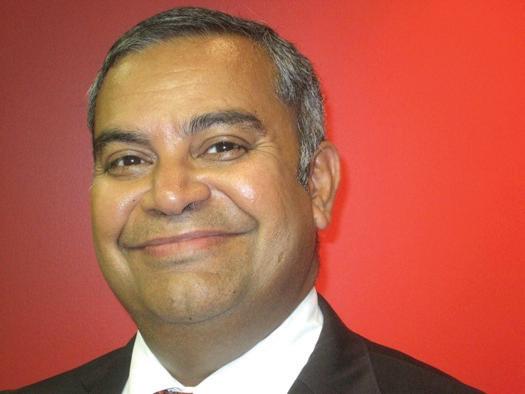
APRIL (2) 2010 <> 5 NATIONAL EDITION
EDITORIAL www.indianlink.com.au
What’s On
Vipassana Meditation Course
21 April -May 2 A 10-day silent residential meditation retreat will be held at the Dhamma Bhumi Vipassana Centre at Blackheath Blue Mountains. Instructions will be available in diverse Indian languages. Details contact Shalini 02 9635 4541 or visit www.bhumi. dhamma.org
Blood Donation Camp
24 April The Sant Nirankari Mandal (Universal Brotherhood Mission) in association with the Australian Red Cross, is organising a blood donation camp at Sant Nirankari Mandal Bhawan, at 1036 Richmond Road, Marsden Park, between 9:30am and 3:00pm. Details contact Pravesh Babhoota on 0422 008 907.
4th International Sharana Sanskruthi Convention
25 April, 8am to 10pm, Parramatta Town Hall, Parramatta. The Basava Samithi Australasia announces its 4th international convention, which aims to promote social and cultural welfare of ethnic community from Karnataka, India. Details contact Satish Bhadranna at Satish.Bhadranna@ nmhg.com
South Asian Senior Information Day 28 April, 9:30 for 10am start to 2pm at Wentworthville Community Centre. The events focus on information on maintaining and improving health and wellbeing for seniors, and includes a light lunch. Register with Helen on 02
8877 5317. RSVP essential. For more information call Grace on 8877 5316 or email grachan@nsccahs.health.nsw.gov.au; or Monika Latanik on 8838 2175 or email: Monika_Latanik@wsahs.nsw.gov.au
Gujarati play
1 May Shri Shiva Mandir, in association with Mahavir Productions, has organised a Gujarati play Baa Bagde to Baar Vagade to raise funds for the building works at the Mandir. Venue Riverside Theatre, Parramatta, 5:30pm. Details contact Urmila Daya 0421 301 779 or Ravi Parekh 0408 950 820.
Painting exhibition
4 – 31 May Wahroonga-based artist Panchali Sheth exhibits her new works at Tom Dunne Gallery, 11 Little Burton Street, Darlinghurst.
Chinmaya Mission events
5 May Sanskrit classes with Br Gopalji (5 week course with interactive Learn Sanskrit Yourself CD) Details call Chinmaya Mission Australia (Sydney) 02 8850 7400
Events at Global Organisation for Divinity
15 May An evening of music and dance at the Sydney Baha’i Centre, 107 Derby Street, Silverwater. Devotional music by Uma Ayyar and Mythili Narayanaswamy, and bharatanatyam dance presentation by Padma Balakumar’s Nrityagriha School of Dance. Details Mythili Bala 02 9482 1204.
More details at www.godivinity.org.au
Classical music concert
22 May O.S Arun in aid of Sri Venkateswara Temple of Helensburgh, Bankstown Town Hall (Cnr Rickard and Chapel Street) Bankstown. Details phone 02 9706 7354 or 02 9879 4350.
Young Achievers Awards Night
23 May, at Pioneer Hall of Castle Hill Library.May 2010, Global Organisation of People of Indian Origin (GOPIO) will host the GOPIO Young Achievers Awards Night – 2010. Applications are invited from students who completed the HSC exam in December 2009 in various categories. Mail applications to harrywalia123@yahoo.com.au and for more information please contact Harmohan Singh Walia on 0402 842 375 or Balkar Singh Kang on 0401 995 559.
Charity dinner for seniors
29 May Sri Om Care is porganising a charity dinner to raise funds for their home-visit program to care for community elders. Enjoy a unique threecourse meal at Taj Sweets at 25, The Crescent, Homebush (from 6.30 pm), and participate in the light entertainment program including karaoke. Details contact Jay Raman 0410 759 906.
Concert on Manna Day

7 August, at the Red Gum Function Centre. The Life and Music of Manna Day, presenting his immortal solo and duet songs. Fundraiser to raise funds for
AHIA Seniors. To book, call Avijit Sarkar on 0425 275 883
NDTV news for SBS
SBS wishes to advise Australia’s Hindi community that its Hindi news bulletins from Indian public broadcaster Doordarshan (DDI) have been replaced with bulletins from commercial station New Delhi TeleVision (NDTV).
The NDTV bulletins (which began Monday April 12) will air in the same WorldWatch timeslots:
11am Mon-Sat on SBS ONE (repeated at 5:20pm on SBS TWO).
11am Sunday on SBS TWO.
Chester Hill Seniors Centre
Sri Om Care has opened a Day Centre for Seniors at the Chester Hill Community Centre, Chester Hill Road. Open all Thursdays from 10am to 2pm. Activities include gentle exercises, lectures on health, cultural interactions and indoor games. Morning tea and sumptuous lunch is provided. Please call Jay Raman on 0410 759 906 or Dr Sadhana on 0466 396 079 for more details.
6 <> APRIL (2) 2010 INDIAN LINK
Singh Food and Spices

Date: 11/05/2010 (Tuesday)
Time: 6:30-8:00pm
Venue: SMC Center 66 Goulburn Street, Sydney ,2000 (close to Museum and Central train station)

APRIL (2) 2010 <> 7 NATIONAL EDITION
143 Stephen Street (cnr Sackville Street), Blacktown Phone 02 9676 4677 Fax: 9676 4688 enquiry@singhfoodspices.com.au : www.indianspices.com.au Aspice shop with a difference Quantity
da dhaba and Singh Food and Spices Spend over $40 and over, get FREE 2 garlic naans Spend $50 and over and get FREE papadums AND 2 FREE samosas andFREE rice
Blacktown
Quality Service April Promotion Singh


8 <> APRIL (2) 2010 INDIAN LINK
“I am a man in a hurry,” was the Indian Union Human Resource and Development Minister Kapil Sibal’s refrain in Sydney as he lived up to his statement when he impatiently answered questions about the Indian government’s plans to implement the nascent Right to Education Bill.
Ambitious thoughts, lofty ideas and poetic lines may have swayed the Indian diaspora in Australia; however the elite minister, who has been criticised for his bold steps to reform the Indian rote-system of education, fell short of explaining how exactly his ministry was going to ensure children from low-income families remained in schools instead of dropping out.
Mr Sibal was in Australia to forge partnerships and invite Australian educators to invest in India. “We need partnerships and we are ready. We recognise the pitfalls of the status quo and we have to bring about that change. We have a global stake to invest in children to empower them. It is not just a national endeavour, but a global imperative to invest in education,” he told the Indian community in Sydney, at a talk on “Higher Education in India: At the cusp of change - the potential for partnership with India.”
Recognising that the present educational system was insufficient to cater to the country’s burgeoning population, he said that the future presented both an opportunity and a danger. “In the developed world, for example, Scandinavian countries, there are 6700 people involved in Research and Development for every one million people. In the US, there
COMMENTARY
years and we want the 12. 4 per cent to increase to 30 per cent by 2020,” added the lawyerturned-politician.
This 12.4 per cent, according to him, is served by 480 universities in India. “About 18 to 20 million children go to school. We need to serve another 40 million students, for which we need another 40,000 colleges and 700 to 800 universities in the next ten years. This is both
on a nation’s need to create ‘intangible’ wealth.
“We have to redefine what is wealth. The wealth of a nation doesn’t depend on what you own. but on the ideas it owns and these ideas are germinated in universities. If a critical mass is in universities, then a nation becomes wealthy,” he stated.
He dismissed Australia’s current model of attracting Indian students to study on its
Minister outlines the future of Indian education Reality bites?
shores, terming it as a ‘bad economic model’; instead asking them to set up universities in India and train skilled people for Australia. “Let students come to Australia. But, this is a wrong model. Instead, why not invest in an institute in India and you will get skilled people,” said the
The HRD Minister, who visited Australia and New Zealand with a delegation and has signed several agreements, emphasised that steps were being taken to reform education completely. Future measures would include the ability to transfer credits, ensure recognition of Indian degrees in Australia (equivalence) and a semester-based form of education.
 Preeti Kannan
Preeti Kannan
Indian Union Human Resource and Development (HRD)
Minister Kapil Sibal’s recent visit Down Under to convince Australian authorities and educators that India is moving at break-neck speed towards educational reforms is in line with its ‘emerging super power’ image that is regularly showcased to the world. The sub-continent’s breed of academics, scholars and quality students are arguably among the finest in the world, having left their mark on different fields within and outside the country.
However, an overhaul of the education system is much awaited and long pending given the physical and mental pressures on young minds, rising from the fact that the Indian education system heavily relies on an extremely competitive grading and rote-based system. Hence, the decision to revolutionise secondary and tertiary education is not without its reasons.
The spree of international agreements signed by the HRD Ministry comes in the wake of India’s newly enacted Right to Education Act, which seeks to make education a fundamental right of every child between the ages of 6 to 14 years. However, the act is not without its loopholes and raises the question of how the country will really bridge the gap between its overwhelmingly poor population and its minuscule elites, also comprising of the ‘upwardly mobile’ middle class.
When asked if there was enough funding available for the implementation of the Right to Education Act, an angry Kapil Sibal snapped at the media saying Rs 15,000 crores had been allocated for the project and that ‘states were flushed with funds’, preferring to pass the buck on to state governments. This contrasts starkly with the situation

in India where several states have written to the central government asking them to foot the costs associated with providing free elementary education, with some even demanding complete funding. Having said that, it is debatable how governments of these states – with some of the highest illiteracy and poverty figures, are really spending the taxpayer’s money.
Besides funding issues, there is little understanding of how the act would be enforced in a country plagued by child labour with an alarming number of children working in fields, factories or engaged in domestic chores within their own households. The minister did not explain how his ministry would make sure children would have access to free education; or how the government was going to ensure children did not drop out of schools to engage in labour; or how the necessary infrastructure – schools, classrooms and quality teachers, would be provided for a project of this scale. Instead, he maintained that the onus was with the states to ensure these issues were looked into, to ensure that the act is well-implemented.
Sibal’s response that the act had just come in to force and these issues would be ironed out makes one wonder if the government and the HRD ministry are unprepared for the large task at hand – eight months after the Right to Education Bill was passed in the Parliament, 63 years after Indian Independence and 62 years after the Right to Education was enshrined in the Universal Declaration of Human Rights charter.
While the act’s intentions are noble and the promises of free and compulsory education endearing, it is common knowledge that legislation in India does not necessarily
translate in to action, given the bureaucracy, corruption, political, economical, financial and logistical hurdles. The Constitutional Amendment to include free and compulsory education may be recent, however obligations of states to provide this fundamental right is hardly new.
The act is flawed in its approach for a number of reasons – it excludes children below six and above 14 years from its purview, it fails to acknowledge factors such as poverty, child labour that could keep children out of schools and does not seek to provide inclusive education for children with ‘severe or profound’ disabilities.
While the HRD Ministry may be positioning India’s higher education as being on the ‘cusp’ of a revolution, little progress can be achieved if the government does not put in place integrated strategies to address ills associated with elementary education.
As a politician, lawyer and poet, Sibal waxed eloquent and played his part well in representing India Inc’s ambitions overseas. The Indian government could tout this as a landmark and a historic Act. However six decades after independence, it is a national shame that the fastest growing economic superpower is still struggling to fulfil its basic obligations.
The minister and his ministry could do well to focus on realistic measures to address these issues instead of dismissing pertinent questions on how the government will realise these ambitious visions. In the absence of concrete plans backed by political will, going to school for countless Indian children may sadly remain an elusive dream.
Preeti Kannan
APRIL (2) 2010 <> 9 NATIONAL EDITION
SPECIALREPORT www.indianlink.com.au
The Right to Education Act aims to make education free and compulsory for all children, but its implementation still remains vague and uncertain
Kapil Sibal addresses a rapt audience
Austral Migration Services has a global presence in providing integrated services for your resettlement in Australia & Canada.
Our services include:
• General Skilled Migration (onshore & offshore)
• State Sponsored Visas

• Employer Nominated Visas


• Partner & Family Migration
• Business Migration
• Student Visas
• Advice on various pathways for permanent residency to onshore graduates.


• Advice & Assistance with Professional Year Program.
• MM2H (Malaysia) Program
• MRT Application for Review
• Workplace Assessment & Training in Hospitality (Commercial Cookery, Pattisserie, Bakery & Hair Dressing) in association with accredited Hospitality Assessor

Guidance and assistance in selecting appropriate professional courses based on education and background.
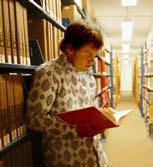
Specialist in International Student Placement.



• Change of Course, University and Education Provider

• Assistance with credit transfers
• Immigration & Visa Advice

• Student Visa and Appeal Matters
• Admission and Visa Assistance for other countries including Canada and New Zealand.

10 <> APRIL (2) 2010 INDIAN LINK Evisalaw Australia Pty. Ltd., Suite 1, Level 3, 533 Kent Street, Sydney, NSW 2000 • Tel.: (02) 92643011 Fax: (02) 92643922 • manish@evisalawaustralia.com CRICOS Code: 02635D CRICOS Code: 01241G CRICOS Code: 02831M Courses available throughout Australia in associations with leading Universities and Institutes. CRICOS Code: 02838D CRICOS Code: 02876J Visitors parking available pursueHelping you a betterlife CRICOS Code: 02938M CRICOS Code: 02928B
CRICOS Code: 02767C Manish Agrawal MARN 0323595 MMIA 2134





APRIL (2) 2010 <> 11 NATIONAL EDITION
Baton brings message of friendship to Harris Park
Her Majesty sent a message of hope, community and the friendly games to Australia via the Queen’s Baton Relay, which started from Buckingham Palace in October 2009. Expected to be one of the longest relay’s in history, it will cover more than 190,000 kilometers, travel through 70 countries and finally initiate the opening ceremony in Delhi on the 3rd of October .
On Monday, 19th of April, the Queen’s Baton Relay arrived in Harris Park en route to the Commonwealth Games to be held in Delhi later this year. It was the first stop in Australia, marking a significant message of multiculturalism and friendship in an area which has seen its fair share of segregation over the past six months.

A special event was held at Harris Park, also known as “little India”, for the local community. It was an event filled with music and entertainment, hosted by the Parramatta City Council as a way of mending fences between the Indian community and the community at large.

The festivities began early in the morning and given the starting time of 7am, it was a strong turn out. The morning began with Vedic chanting from the Sydney Vedic Patasala group. The youngsters ceremoniously blessed the commencement of the relay. Anjana Chandran was up next, on behalf of the United Indian Dance Association, with a Bollywood medley for the increasingly large audience. At only sixteen years of age, she held her own court and livened up the somewhat sleepy crowd. As the adults enjoyed the hot tea and food stalls set up by the local Indian restaurants, children were occupied with face painting and giant kangaroo-like bouncing men.
However, it wasn’t just an Indian themed event as The Parramatta City Choir sang and clapped their way through an Austrian song. Adriana Diab, a local and very gifted school girl, performed cover versions of inspirational songs keeping in line with the messages of harmony and courage.
And it was this message, of community, of multiculturalism, which the council had intended. In the spirit of the games, the organizers had enlisted a range of performers and sports men and women to carry on this message to the people.
The pride with which the Baton was received and celebrated was wonderful. Jack Hickey was one of the chosen triathletes who brought the Queen’s Baton to Harris Park and shared the on stage ceremonies with the cherub Indian community representatives, Anmol and Simran. The first stop in its national tour of Australia marked a surreal moment for all AustralianIndians. Everyone watched as the athletes posed with the gold and colourful Baton. On stage for official photographs were the Lord Mayor of Parramatta (Mayor Garard), High Commisioner to India Mrs Sujatha Singh, and the cuddly games ambassador Sheru. After speeches from all the dignitaries, the Baton was lead on its official walk and motorcade from Harris Park to Parramatta Town Hall. Amongst the many Baton bearers were Kristy Pond (Parramatta sportsperson of the year); Nathan Cayliss and Nathan Hindmarsh (Parramatta Eels’ players); school
captains and future sport stars from St Oliver’s Primary School and the Australian International Performing Arts High School.
On the way to the Town Hall, the bearers and the Baton were cheered on by locals. Though there might not have been large crowds gathered along the streets, as one would hope, there was plenty of support from people on their way to work or school on this brilliantly autumnal Monday morning.
The bearers were all extremely proud of their appointment; proud not only to be carrying the message of the friendly games from the Queen but also of their association with the local Parramatta community. These were the moments of unity which parlayed from sports heroes down to the young children watching them pass by.
As Harris Park began to wrap up its eventful morning, the festivities and the mood carried on to the Town Hall. As predicted, the turn out for the Parramatta activities was significantly larger than the Harris Park start off point.
There were key repeat performances, from Adriana Diab, the IABBV Hindi School Group (whose choreographer Akshita Mohan also doubled as Sheru) and the Platinum Bhangra Group.
An Aboriginal Smoking Ceremony was performed along with an explanation of the role of the Aboriginal peoples in the
Parramatta area for the many international news crews who attended the ceremonies, to thank the local Aboriginal Elders for permitting use of the land.
Once again, the respect paid to all cultures was the message of the morning. Nathan Brake, 2009’s Australian Idol runner up and goodwill ambassador to Parramatta, performed the Australian national anthem after the Baton had reached the Town Hall.
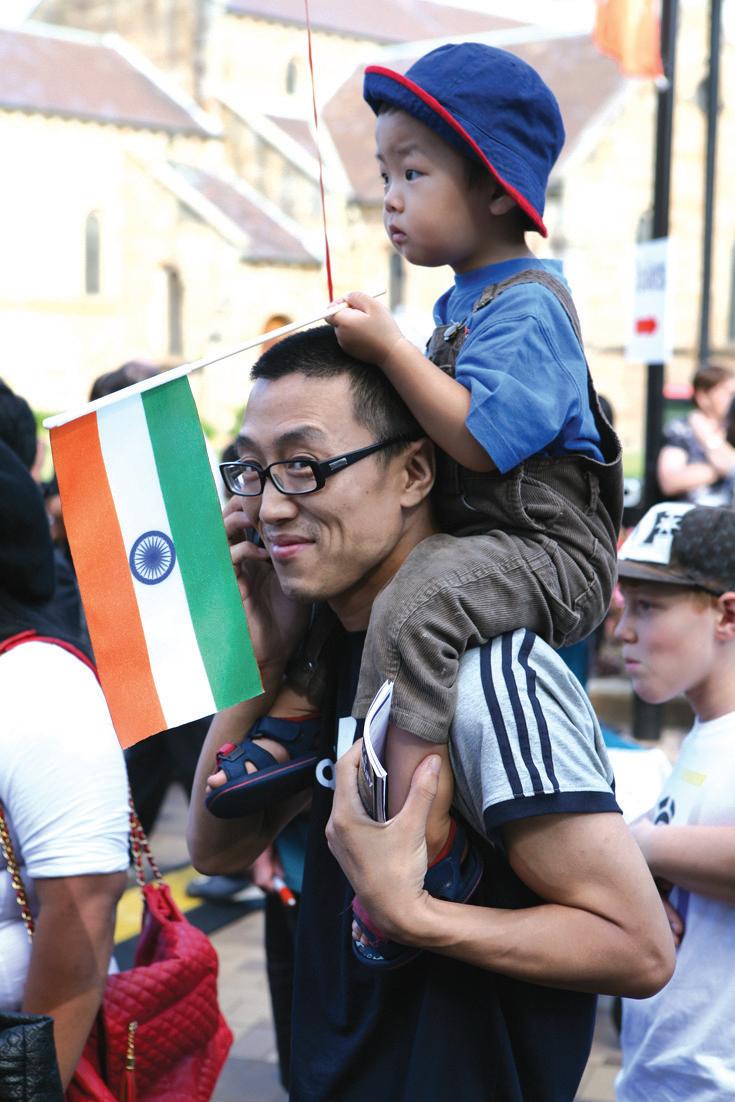

The stage had been set up for detailed speeches of harmony and joy as well as more performances to entertain and enthuse the crowd. Sujatha Singh extended “heartful thanks” to the community of Parramatta for the support they had shown towards the games and towards India. She also said that she was “looking forward to spreading the message of friendship and harmony” back to Delhi on the behalf of the Australian community.
Cycling champion Natalie Bates was the next Baton bearer to take to the stage as she posed for photographs with the High Commissioner, Lord Mayor and Sheru. She took the time to answer questions regarding the role of women in the Commonwealth Games and her hopes of achieving gold medals for Australia in cycling.
She took the Baton on foot to the Parramatta Wharf, followed by people proudly carrying both the Australian and

Indian flags, symbolizing the synergy between the two nations. Once at the wharf, a local competition winner took it on to the Ferry and sent it on its way to the Opera House.
It was a proud day for everyone. All Australians, whether born here or overseas, knew the significance of the moment. Given the current climate of the relationship between India and Australia, specifically relating to the representation of Australia in the Indian press, the efforts put forth by the Parramatta Council and the community showed the deep appreciation of all that the Indian community brings to this country. It also signified the great need for the Indian community, especially its younger members, to participate in greater community events.
As said by Manu Singh, from the Platinum Bhangra group, “It’s important to show the (Indian) culture in the way they (young Australian Indian’s) understand it and the way they take it forward.”
In the lead up to the games, there are many questions of whether Delhi will be ready in time. For now, the focus remains on the relationship between Australia and India and on fixing any rifts which have occurred over the past six months. It is a time to look past the differences and begin to see the future together, as one, at least for the spirit of the Games.
12 <> APRIL (2) 2010 INDIAN LINK COVERSTORY
KUDRAT SINGH watches as a community unites in wecoming Commonwealth Games icon
en route to Delhi
Clear blue skies, calm waters, the majestic Sydney Opera House and Harbour Bridge and an enthusiastic crowd characterised the arrival of the Queen’s Baton in Sydney on April 19. The organisers and the audience couldn’t have asked for a more picture perfect day as the Baton made its way to the shores of Sydney from Parammatta on Monday.
The excitement in the air was palpable as curious onlookers, tourists, athletes, sportsmen and a battery of media made their way to the Opera House on the iconic day and eagerly awaited the arrival of the much-talked about Baton.
True to style, the handcrafted and elegantly-designed Baton tailor-made for the 2010 Commonwealth Games in Delhi arrived at the Man-o-War steps amid much fanfare and tight security. The cone-shaped metal, coated with a diverse range of coloured soils collected from different parts of India, shone brilliantly in the sunlight as people watched school girls from Gladesville Public School receive the delicate baton and hand it to Commonwealth Games sprinter Matt Shirvington, who in turn presented it to the NSW Deputy Premier Hon Carmel Tebbutt.
The shape and design of the Baton has been created using a triangular section of aluminium, which has been twisted in the form of a helix to represent Indian diversity, according to a media release. “ The Queen’s Baton 2010 Delhi is a true Indian masterpiece. Culminating at the pinnacle of the Queen’s Baton 2010 Delhi is a precious jewellery box containing the Queen’s ‘message to the athletes’. The Queen’s message has been symbolically engraved onto a miniature 18 carat gold leaf, representative of the ancient Indian pathras”, added the release. The gold leaf inscription has been designed to reflect the essence and richness of ancient Indian culture. Modern laser technology known as micro calligraphy has been used for the first time to reproduce the Queen’s message in this style.
The Queen’s Baton Relay for the XIX Commonwealth
Games 2010, Delhi, was flagged off from the Buckingham Palace on October 29.
“As we gather in this beautiful day, we wish good luck. The Queen’s Baton has message to all the athletes. We welcome and congratulate our Commonwealth Games athletes,” Minister Kevin Greene told gathered Sydneysiders.
Indian High Commissioner to Australia, Sujatha Singh, thanked Australia for the welcome and used the platform to emphasise the spirit of friendship behind the games. “The Commonwealth Games is all about friendship, people getting together in friendship and harmony in the biggest and the best Commonwealth Games. We look forward to welcoming and receiving all of you to India”, she said adding that India was synonymous with multiculturalism and harmony.
T.S. Darbari, joint director general of the Organising Committee to the Commonwealth Games 2010, who was in Australia accompanying the Queen’s Baton as it relayed from Paramatta to Sydney, assured gathered Australians that Delhi would be safe. “I would like to reiterate that Delhi will be safe and secure for the Commonwealth Games,” he said, days after bombs were detonated outside an Indian Premier League Match in Bangalore.
He added that Delhi is today a changed city and it owes its changing landscape to the Games. He remarked that even Indians wouldn’t be able to recognise the city. Ironically, it wasn’t the growing population or the need to beautify the capital and its crumbling structures that served as a wake-up call, but the fact that the world’s attention would be focused on the city that has forced authorities to clean up their act.
The Baton was then carried by athletes from the Opera House to Circular Quay, during which it made several stops, where Indian dancers had put up cultural performances. Throughout the day, the Commonwealth Games flag fluttered atop the Sydney Harbour Bridge.
Participants in the relay included cycling World Champions
Karlee McCulloch and Ashlee Ankudinoff, Australian netballers Catherine Cox and Susan Pratley, Olympic and Commonwealth Games swimmer Kieran Perkins. Two smiling youngsters had the cameras clicking away as they did their bit for the baton relay - the wheelchair-bound Sophie Delozio who won hearts nationwide with her bravery, and Indian-Australian Shaan Patel. Another relay participant was the charismatic Clary Castrission of the Forty K Homes foundation who has devoted much energy towards charity in India: he is preparing to run a major marathon shortly, from Mumbai to Bangalore, in aid of charity.

After the Sydney reception on Monday, the baton made its way to Melbourne, the host of the 2006 Commonwealth Games, on Tuesday April 20.


On Wednesday April 21, it journeyed to Brisbane and the Gold Coast, who have submitted their official bid for the 2018 Commonwealth Games.
By the end of the journey, the baton will have passed through all 71 Commonwealth nations, travelling over 190,000 km in 340 days, making the Delhi 2010 relay one of the longest in the history of the Commonwealth Games. It will also visit all the capital cities in India’s 28 states and seven union territories, and many other cities along the way. A drive to plant trees along the route of Queen’s Baton Relay of 20,000 km in India is being undertaken.
To be held from October 3 – 14, the 2010 Commonwealth Games will host 19 sports on the program, making it the largest Games to date.
The Australian Commonwealth Games Association (ACGA) will be sending its largest team to ever compete in an overseas campaign, with more than 425 athletes and 175 officials expected to be selected.
APRIL (2) 2010 <> 13 NATIONAL EDITION www.indianlink.com.au
More pictures on pages 34-35 Photos: Madan Lepcha and Preeti Kannan
PREETI KANNAN participates in the official welcoming ceremony of the Queen’s Baton
Beyond sport
Welcoming the Queen’s Baton, Indian and Australian businesses grab an opportunity to network. PREETI KANNAN reports
Even as the Queen’s Baton made its way to Australia, Indian and Australian businessmen took the opportunity to discuss business on the sidelines of the spectacular Sydney relay. While the attacks on Indian students was a recurring theme at the Business-to-Business meeting between the Australia India Business Council (AIBC) and the Federation of Indian Chambers of Commerce and Industry (FICCI) delegation, the growing bilateral trade, cultural and sporting ties between the two countries and notably New South Wales continues to grow, allaying fears that the attacks had dented relations.

Led by noted businessman, Krishna Kumar Modi, chairman of the Modi Enterprises, the FICCI delegation comprising of nearly 20 entrepreneurs, representing education, agro products, jewellery, agricultural and other sectors, were in Sydney to explore ventures and forge possible partnerships with Australian counterparts.
Welcoming the Indian delegation, Ian Macdonald, Minister for State and Regional Development, Mineral and Forest Resources, Major Events and Central Coast, said that there was plenty of scope to build business ties between the two countries, given the fact that they had both tided the recession well. From business to culture to sport, the Minister touched on the crucial India-Australia partnership.
“The International Monetary Fund has forecast India’s economy to grow at 6.75 per cent in 2009-10 and rise to 8 per cent in
2010-11. For Australia, the IMF forecasts 2.5 per cent growth in 2010 and 3 per cent growth in 2011. We believe that you will find many opportunities in NSW. India is already one of our largest and most important trading partners,” he said.
With the NSW Government setting one of its four overseas offices in India, the minister signalled a clear interest in increasing trading ties between the two countries.
“Our Mumbai office is promoting NSW as a leader in financial services, infrastructure and construction, education and tourism services,” he said adding that during his visit to Mumbai, discussions had centred on improving trade and investment opportunities with NSW. Minister Macdonald also acknowledged the presence of Indian banks like the State Bank of India – the first Indian bank in Australia, Bank of Baroda and the Union Bank, in Sydney.
He observed that Australia’s financial
Trade facts: India
capital, Sydney, would strengthen its cultural ties with the sub-continent further with its first-time Parramasala festival later this year.
“And we cannot forget our sporting ties with India. I share India’s passion for cricket and am pleased to tell you that NSW has secured the rights to four international Twenty20 cricket games. They will be held at Sydney Olympic Park in Western Sydney over four years with the first and last matches to be played against India,” said the Minister.
Indian Consul General, Amit Dasgupta, however said there were serious perception problems in India about Australia.
“It is important to recognise there is a serious perception problem in India against Australia. It starts with how Australia perceives India,” he noted at a panel discussion on “The NSW-India opportunity.” He added that it was important to send sectoral delegations to tap in to the different sectors
l International Monetary Fund has forecast India’s economy to grow at 6.75 per cent in 2009-10 and rise to 8 per cent in 2010-11
l Bilateral trade had been valued at AUD 2.13 billion in 2008-09 and India was NSW’s 14th largest trading partner
l NSW exports to India were valued at $1.375 billion in 2008-09 − almost double the 2007-08 of $689 million
l India is NSW’s 7th largest export market
l Increase in exports was driven by coal
l In the five years to 2008-09, NSW exports to India have grown at an average annual rate of 29 per cent
on both sides.
Modi, on the other hand, observed that India was changing beyond recognition. “Cities are rapidly changing and growth in the future will not be generated in the US or Europe, but in India. There is scope for development with India,” he said. Responding to a question on the attacks, Modi said that Indians wouldn’t be deterred from coming abroad. “Indians will continue to come because the numbers of people wanting to study abroad are rising. Migration (of Indians) will continue,” he said.
Barry Buffier, DDG, Industry and Investment NSW, on his part, said Australia didn’t have a good understanding of India. He explored the idea of working closer with an Australian diaspora – Indians, who studied in Australia and went back, to improve ties. “After coal, education is the second largest export. Prior to the violence, the Premier established a Task Force and now and Education Council with representatives from the Police. There is a new website for international students and Sydney is quite multicultural as more than 230 languages are spoken here,” he said, speaking on the measures taken by the NSW government following the attacks. The panellists agreed that education was an area where links had to be developed.
A joint business council will be held in May in Delhi, where a similar delegation from Australia would visit India to look at business options in India.
14 <> APRIL (2) 2010 INDIAN LINK www.indianlink.com.au COVERSTORY
(From left) Harmohan Walia, Gambhir Watts, Nathan Bracken, Arun Jagatramka and Hari Harinath

APRIL (2) 2010 <> 15 NATIONAL EDITION
A conversation of fusion
Classical Indian music lends itself to fusion, to create pleasing melodies
The first strains of the kora waft in, carrying the playful melody of the guitar, underscored by the rhythmic tabla - this is Mamalangsingh, the first track from Djan Djan, a collaborative album between Mamadou Diabate, Jeff Lang and Bobby Singh.

Djan Djan, which means ‘far away, far away’ in Malian, is far removed from your average fusion album that simply creates a mish-mash of rhythm and melody from different traditions. The music in this album is comfortingly familiar, and yet refreshingly original.
Each track is a complex weaving together of the individual artist’ styles, yet the melodies remain simple enough to be hummed long after the album has finished playing. Focusing on no particular theme, Djan Djan is a conversation between three accomplished musicians, and listeners are privy to the wondrous outcome.
Meeting serendipitously at music festivals, the trio began this conversation with an improvised jamming session at the Brunswick Music Festival in Melbourne in 2008. They were in a studio the following morning, recording what have come to be the first five tracks of the album.
Each track is a complex weaving together of the individual artist’ styles, yet the melodies remain simple enough to be hummed long after the album has finished playing
“We went into the studio thinking that we understand each other and like each other, so let’s record together and see what happens with it,” says Singh.
“With our kind of music, it’s just a conversation. There’s no story, you just play music and it either sounds good, or it doesn’t.”
The trio’s recordings sounded good enough for the ABC to commission them for an entire album on the
basis of those five tracks. An Australian tour followed, where the three played and improvised upon the older tracks, while also creating new ones. “We all come from an improvisation background,” says Singh.
“After the tour we said, that was good fun, so let’s record it (the full album).”
Singh’s tabla takes on a unique guise in this album that does not situate itself in the Indian fusion milieu. Rather, most of the songs are written by Diabete and the tabla flows in harmoniously. “The tabla does lend itself… tabla is rhythm and can fit into a lot of things. I see such projects as an opportunity to learn about others’ rhythms,” says Singh who has worked with global musical traditions ranging from Spanish to Jazz to Balkan and German.
“We play the most complex rhythms in the world on the tabla, but just because other traditions don’t, it doesn’t mean that their music is any lesser. My guru taught me to respect every musical tradition in the world,” says Singh who is a disciple of the renowned tabla player Aneesh Pradhan, and visits India regularly to continue his learning and to perform.
“The amount of fusion that Indian classical musicians
are now doing is amazing. When I went (to India) 10 years ago and said I was playing tabla with flamenco music, the reaction I would get is, ‘but that isn’t classical’,” he says. “Some musicians of the older generation still don’t accept it, which is fine. But Zakirji (Hussain) is like ‘It’s rock? Bring it on. It’s pop? Let’s try it.’ Because of him and his celebrity status, he has made fusion a lot more acceptable.”
With such little scope for Indian classical music when Singh started off in Australia 10 years ago, he had no choice but to make more fusion music at the time. Ironically, it is his fusion music that has led to an increasing interest in his classical performances. “They see my fusion show and then get interested, so they check out what else I am doing,” he says. Singh runs pure classical baithak style sessions twice a month. “In fusion you cannot see the whole language of the tabla. If you want to see what the tabla can really do, you need to listen to Indian classical music.”
For more information, visit www.topshelf.com.au and www.bobbysingh.com.au
Shivangi Ambani-Gandhi
A Hang for rhythm and sound
different dimples on the hang has a different tone. The uniqueness of this instrument is that you can play melody
Being such a young instrument gives Prabhu creative freedom. Since there are no set instructions on how to play the hang, he can play intuitively. Prabhu has performed in many places around the world including Sydney, Adelaide and India. He has also played in Japan, performing in temples and was even invited to create
Prabhu says his inspiration to play the hang derives from nature and his life experiences. It could be a garden, the market place or the ocean. For example, his CD, ‘At the Temple Gate’ contains a track that was inspired by sparrows on the roof of a temple in Japan, as he awoke to
Prabhu composes his music spontaneously, depending
“I don’t write, because to be honest, I never studied music at a music school, either Western or Indian classical. Being a rhythm person meant that I didn’t need so much training. For me, I get the base of the composition in a moment, it goes into my heart and stays there; then I begin playing it and it takes its own form from there,” he
Prabhu calls himself a ‘keeper of the hang’, as he doesn’t own it, but simply follows wherever the
He looks forward to not just performing more in the years to come, but also introducing people to this
I took him to a tiny park at the end of our interview; Prabhu sat on a rock and played the hang as the wind whistled and trees rustled. He was one with nature.
 Malavika Santhebennur
Malavika Santhebennur
INDIAN LINK
MUSIC www.indianlink.com.au


APRIL (2) 2010 <> 17 NATIONAL EDITION
A dialogue through drawings
A unique concept in contemporary art has given rise to a series of individual, yet collaborated set of drawings. SHIVANGI AMBANI-GANDHI reports
One of the most intriguing works to come from the Indian subcontinent to the 6th Asia Pacific Triennial of Contemporary Art (APT 6) is the artist’s book titled The One Year Drawing Project. The work, commissioned by Sri Lanka-based Raking Leaves, an independent publisher of contemporary artists’ book projects, is on loan at the APT6 from the Anupam and Lekha Poddar Collection.
The work consists of 208 individual drawings by four senior Sri Lankan practitioners, Muhanned Cader, Thamotharampillai Shanaathanan, Chandraguptha Thenuwara and Jagath Weerasinghe. The project, in fact, took two and a half years to complete from May 2005 to October 2008, and involved each artist creating one drawing, posted out to one of the others. Like a series of correspondence letters, each artist would respond to the previous drawing by creating his own.
Walking along the wall of the Gallery of Modern Art, Brisbane, where the individual works hang, is a walk through the artists’ subconscious - particular moments of contemplation and expression in different parts of Sri Lanka.
Indian Link caught up with the Raking Leaves founder and curator, Sharmini Pereira, about the making of the One Year Drawing Project
Shivangi Ambani-Gandhi: What inspired you to start the project in 2005 and what was your vision?
Sharmini Pereira: The inspiration for the project came from different directions. I was interested in whether it was possible to curate a project with more than one artist that took the form of a book, and not an exhibition.
This underlying vision was what inevitably led me to establish Raking Leaves. I was interested in the format of the book as an object, as something that could be distributed and sold, exchanged and gifted.
I was particularly intrigued by the shared interest that all four artists had in drawing, which was rarely looked at.
More specifically I was interested to set into play a process through which drawings were generated as a response or dialogue over a period of time. Artistic exchange and collaboration are frequently talked about, but what do such undertakings actually involve? Or more pertinently, what do they give rise to?
SAG: How did the civil war situation affect the project? Were there any threats in continuing this project during that time?
SP: Fortunately there were no incidents stemming from the conflict that affected the project’s completion. I think the effects of the war were more liminal. A civil war brings a great deal of turmoil and disruption to daily life: power cuts; security check points; no-go zones etc. They say truth is one of the first victims of war, but time is also a forgotten victim. Everything stands still during a conflict. The future doesn’t arrive until one force defeats another, whilst the past or history is what sanctions the basis of war.
Year Drawing Project complete. And it’s certainly no coincidence that many drawings mark and punctuate moments of a situation that each artist had been living and working amidst, as part of their every day.
SAG: Can you tell us a little about the motifs used by the artists in these works? Some motifs are often repeated, like the giraffe; what is the significance of the imagery used?
SP: Muhanned uses a cut-out shape as his first drawing. The use of such a devise is typical of his work. The cut-out appears to resemble an animal or creature of some kind but it has no specific reference. One writer has argued that it is a map of Sri Lanka, which if anything, seems to suggest how powerful the element of ambiguity is in Muhanned’s work.

Chandraguptha’s camouflage patterns elicit a similar duality, entwining flowers such as the Eelam national flower with falling bodies and simple swirls. Buried in the exchange of drawings there’s also a portrait of the prime minister.
Shanathanan’s drawings are perhaps the most afflicted. Yet also the most playful in their laconic wit, that he combines with bombs and anatomical details.


SAG: In your opinion, has this project changed the artists’ new works or has the exchange of drawings influenced them?
SP: I think an artist’s work is always evolving. To spend 28 months working on a project inevitably brings changes to one’s practise.
Other than stylistic changes, what the highlights is the ability to expose yourself to another’s comments. To be able to sustain such a process is probably what distinguishes the project in terms of how it questions who influences who and where lies the agency to change.
SAG: As a curator, what did you expect would turn out of such a project and was the final result surprising for you?
SP: In commissioning the project as a book, I stipulated that each drawing should be no larger than A4 in size and that each artist should produce 52 drawings as part of the exchange. So my expectation in terms of what would be produced was that at the end, there would be 208 drawings that would be bound together as one volume.
Curatorially, I could not be sure that one artist would not drop out or abandon the project after a few months. What was surprising is that it took on its own momentum. Drawings were done without adhering to a timetable. So long as the exchange was not broken, the project continued.
What was surprising was that the time required to produce something didn’t matter as much as the intention to be involved.
Once all the drawings were compiled at the end of the project, all my initial expectations were reduced to nothing more than a concept. This had now been shaped and formed in the hands and minds of four extraordinary artists into something much more beguiling and powerful than any curatorial projection could have imagined.
SP: The OYDP was shown in India at the Devi Foundation in August 2009, but not in Sri Lanka. The 209 drawings require a large space to be exhibited. Sri Lanka does not have a suitable venue to show the work in its entirety.
The book, for this reason, provides a space for viewing the work when gallery spaces do not exist. You could say the work is being shown each time someone opens the book. At least that’s the conceit I like to tell myself when thinking about people’s response to the book project.
18 <> APRIL (2) 2010 INDIAN LINK ARTS www.indianlink.com.au
Thamotharanpillai Shanaathanan
Thamotharanpillai Shanaathanan
Chandraguptha Thenuwara
Spiritualism marks artist’s vision
Ayaz Jokhio’s works show that there are different ways of looking at the same thing
BY SHIVANGI AMBANI-GANDHI

The Queensland Art Gallery’s Watermall is transformed into a site of solace and quiet contemplation by Pakistani artist Ayaz Jokhio’s structure installed there, as part of the 6th Asia Pacific Triennial of Contemporary Art (APT6). The soaring, white, roofless, octagonal structure takes its inspiration from the following verse by Shah Abdul Latif Bhittai, the great Sindhi Sufi poet of the late Mughal era:
“A thousand doors and windows too, The palace has… but still, Wherever I might go or be Master confronts me there”
The work, titled a thousand doors and windows too… (2009) stands tall, surrounded by water and can be approached via a narrow plinth.
Stepping into the bare walls, with just the soothing sounds of gently flowing water breaking the silence, this work is quite unlike any other artwork experience.
“I consider this work a piece of ‘conceptual architecture’; a physical translation of Bhittai’s expression of the omnipresence of God,” says Jokhio. Within the octagonal room, one wall contains an arched doorway while the other seven each feature a curved alcove. While there are some Islamic references, Jokhio explains that the emphasis of the work is more conceptual.
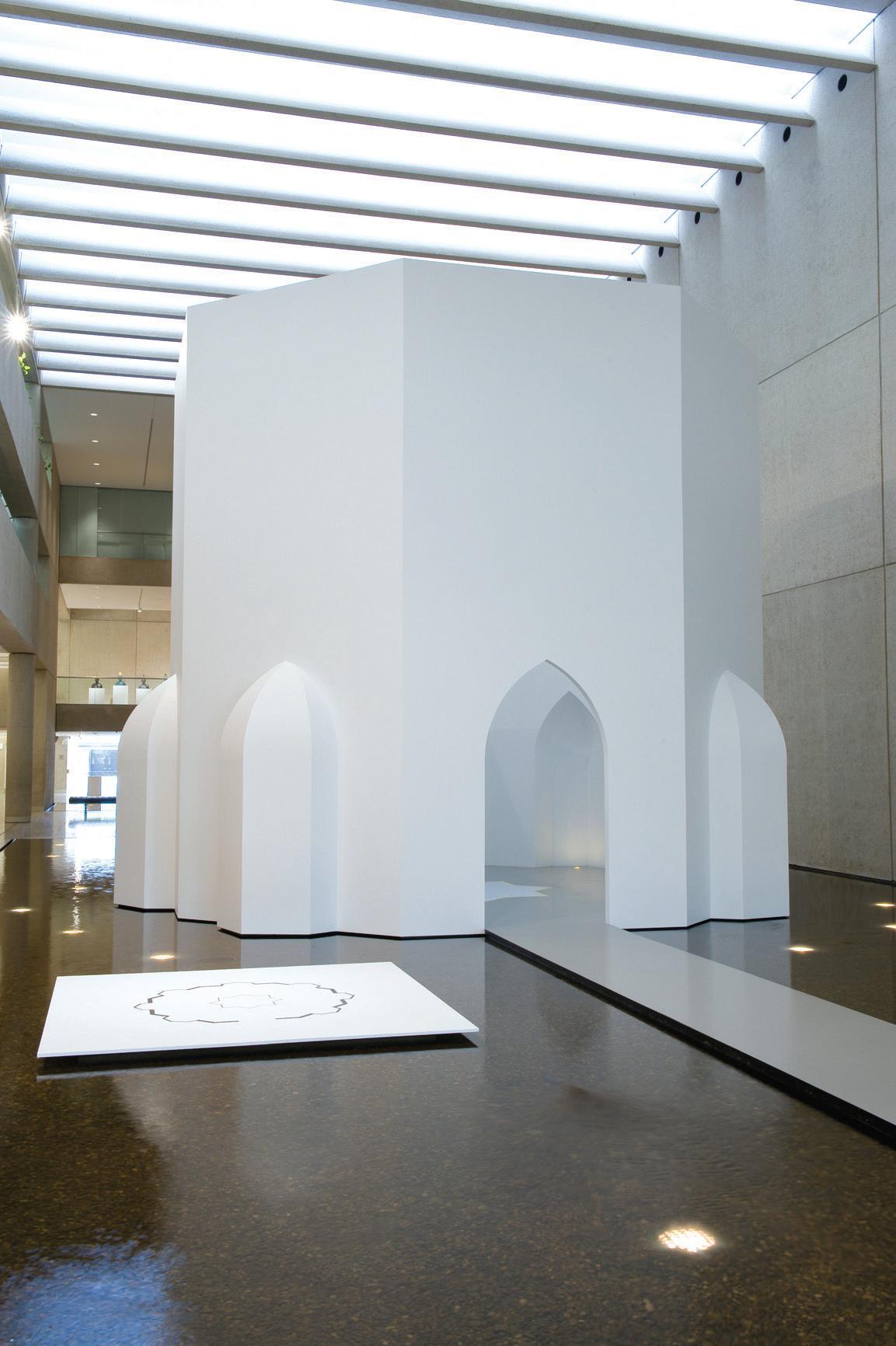
“An octagon has always been very important in spiritual or religious architecture, not only in Islamic but also in Christian, Hindu, Buddhist and Jewish architecture. In geometry, an octagon symbolises infinity,” says Jokhio. “By eschewing the intricate patterns and carvings from this structure, I wanted to put more emphasis on the basic geometrical representation of these shapes and elements.”
The curved alcove - or the mihrab - is the only reference taken from Islamic architecture, he says. “But again mihrab or niche is also a common element in all religious architecture. The word mihrab originally had a non-religious meaning and simply denoted a special and private room in a house, a throne room in a palace for example,” he explains.
The mihrab in a mosque indicates the qibla - the direction facing Mecca and therefore for prayer. By placing the mihrab in seven directions, Jokhio alludes to the omnipresence of God. “God is not only in the Kaaba, but he surrounds us like air. India’s famous spiritual teacher Osho once used the term ‘The wholeness’ for God/god, and I totally agree.”
While most of us are familiar with the Islamic tenet of one Allah, there also coexists the Sufi thought which puts emphasis on personal interactions with the divine. Jokhio doesn’t see these two strands of Islamic belief as being contradictory.
“I think these concepts are complementary. God is the one/same. But everyone perceives and thinks of him in a very
is similar and different at the same time and in the same thing,” says Jokhio.
This concept of similarity and difference coexisting has been a continuing area of exploration in Jokhio’s works. As part of a project for children at the APT6, Jokhio has created a version of his older work, 99 selfportraits 2008. The original work consisted of about 500 reproductions of a self portrait drawing sent to others to add hair and other details. 99 of these portraits were selected to be part of the work. For the Kids APT project too, children are given Jokhio’s portrait and asked to dress him up in various combinations.
“Islam describes god/God as having 99 names (99 different attributes). And Sufis believe that the human being himself is the god/God, he only has to be able to see his inner depth,” says Jokhio.
In a series of charcoal drawings titled Diptych, he pairs up objects of similar form but completely different meaning like bracelets with a handcuff and a sumo wrestler with the ‘Fat Man’ atomic bomb that detonated over Nagasaki.
“This series of diptychs is my idea of visual poetry. It borrows heavily from poetic practice of creating alliterations and metaphors and putting two different lines,
says Jokhio. “And by not giving any descriptive title to these diptychs I am trying to play a secret trick on the viewer: I have provided the image, you do the other half of the job by assigning it meaning.”
In another work titled Protest, Jokhio creates a collage using images of protesters around the world, culled from hundreds of newspapers and internet stories over a year, to create an image of what appears to be a single protest. Again, the viewer is at first led to believe this is a regular protest image from afar, but only upon closer inspection would one find that each image raises different issues, in a different time.
Jokhio again uses the newspaper collage technique in Rillee (The Quilt). “The method of collage for making a cultural product is very intriguing for me because, in terms of formal structure, both Rillee and collage are about recycling of the discarded substance.
Pieces of old clothes, just like pieces of newspapers, are usually put in a pattern in order to re-create another image,” says Jokhio. “Perhaps for me the blend of collage and Rillee is an occasion to comprehend my visual and conceptual components as an artist living in this age and area. In a sense the Rillees made on my canvases resolve ‘apparent’ contradictions of living in a
modern world with a deep-rooted past.”
And this past, of the Singh region, from where Jokhio hails, is an underling influence over all his works. “Art is the reflection of society. An artist cannot remain unaffected by socio-political situation around him,” he says. “I belong to a very remote area of the country, in the province of Sindh.
Historically, Sindh has a civilization over 5000 years old. It has also been blessed by the best minds and kindest souls of the world - Krishna, Buddha, Zarathustra, Christ and Mohammed – and we have imbibed in our minds all the best they gave to humanity.”
He talks about his own move into the urbanised, ‘modern world’ as we know it.
“The medium of my basic education was Sindhi. I learnt Urdu, which is Pakistan’s socalled national language, only when I was 16 when I left my hometown to be able to earn a livelihood. And now I have been learning English,” Jokhio says. “Now I live in Lahore, the second biggest city of Pakistan, where a majority consider Sindhis ignorant and backward people.”
Jokhio also comments on the way the world views Pakistan, especially its art.
“Miniature painting is known as ethnic art from this country, and this has encouraged many artists to cash in on this form.” He created a series titled Miniature Painting consisting of 7 rather tiny paintings (each
… the viewer is at first led to believe this is a regular protest image from afar, but only upon closer inspection would one find that each image raises different issues, in a different time
measuring 9 x 12 millimeters), framed in gold hung on the gallery wall. “(The paintings) were almost invisible on the empty huge walls of the gallery. From a distance one could only see a shiny glittering piece of gold,” he says. Also harking back to the contradictions between modernity and traditions, instead of using traditional media, Jokhio uses oil or acrylic on canvas.
“The quick and easy success of miniature painting in the local and international art world prompted many practitioners to take up this genre and make their name and money by experimenting with it while using the pretext of contemporising it,” he reveals.
Having worked across such diverse media and explored various forms of art including film, cartoons and poetry, I ask Jokhio if for him the message is more important than the medium through which he choses to convey it. “Both are equally important in the creation of an artwork. Art is never about just conveying your message to others, to say things, whatsoever is the message, with a certain degree of effectiveness,” he says. “I take it as a challenge to master a new medium and learn new techniques. The idea of being at the beginning every time is the thing that keeps you always young or fresh. I believe, if you can’t surprise yourself, how do you expect to surprise anyone else?”
APRIL (2) 2010 <> 19 NATIONAL EDITION ARTS www.indianlink.com.au
A thousand doors and windows too... (2009), by Ayaz Jokhio
Photo: Natasha Harth
Kejal’s arangetram astounds
We recently witnessed the arangetram of one of the youngest girls to reach this accomplishment in Sydney. At just 16, Kejal Dave has successfully performed Natya Arangetram in Bharatnatyam, the renowned Indian classical dance form. Over 200 guests gathered at Bankstown Town Hall recently to witness this achievement.
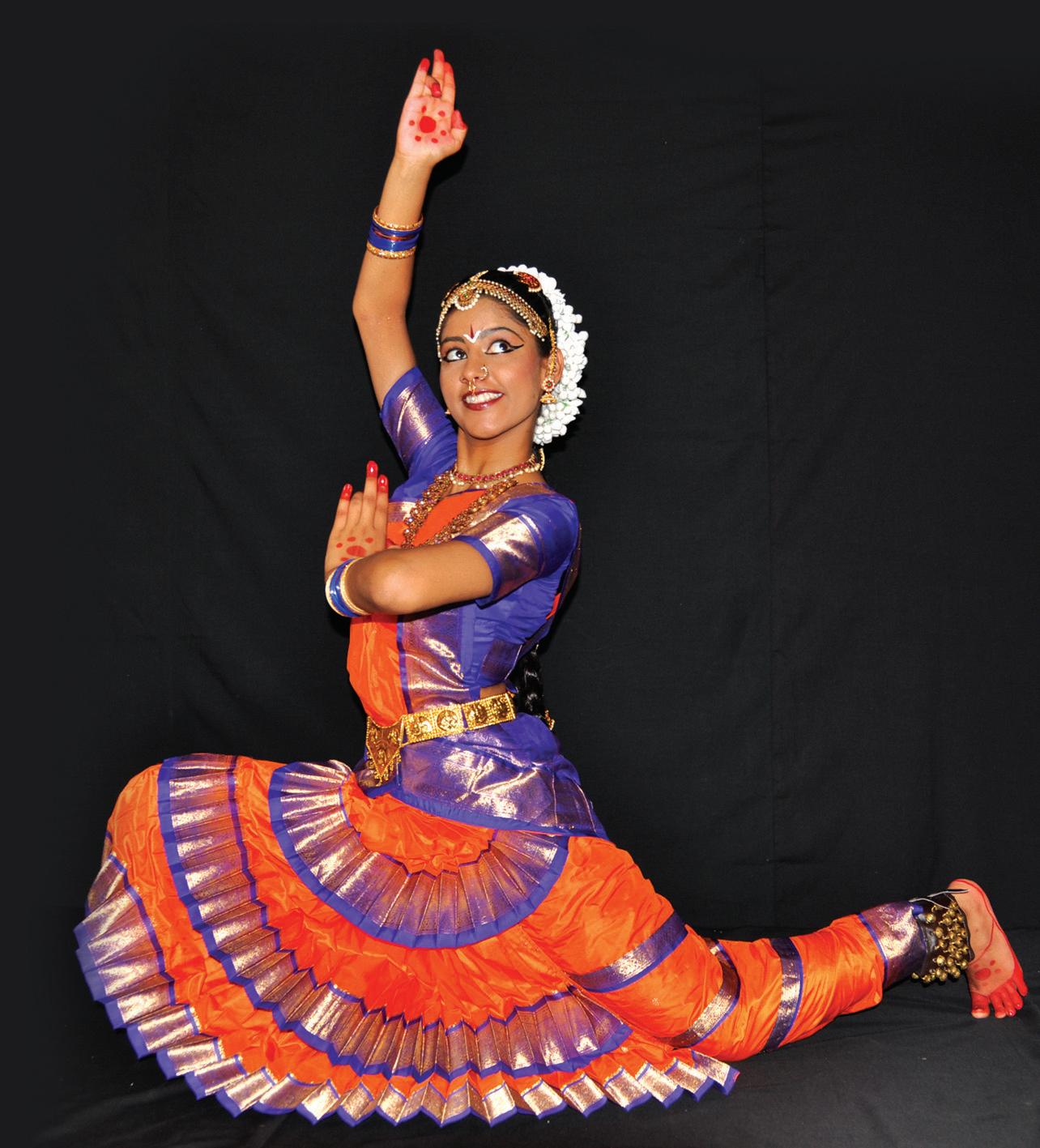
Kejal started learning Bharatnatyam at the age of 5 and has been committed to this style of dance for more than 10 years. The Dave family and the guru/ teacher’s dedication and hard work has brought Kejal to the high level of dancing that she is at today, and also prepared her for the graduation ceremony of Indian classical dance: the arangetram
The programme began with an opening speech by Parth Dave followed by welcome speech by Viren Dave. Karthiga Kanesar, the teacher, introduced the dances Pushpanjali, Jatiswaram and Keerthanam, followed by the performance by Kejal.
Puja Acharya then introduced the guru, Karthiga, describing her many achievements in this field.
Karthiga Kanesar is a very well-known dancer and teacher of Bharatnatyam and Kuchipudi, with the passion, skills and patience which allow her to bring her students to a high caliber of dancing.
The centerpiece of Kejal’s repertoire, Varnam, was the next item to be performed. This is one of the toughest and longest dances where the dancer’s skills and physical capacity are put to the test. This central and elaborate dance was performed very well.
Payal Acharya recapped the performances and
after a short interval, Kejal produced stunning performances in dances Tharangam and Thillana Tharangam involves dancing on a bronze plate, while balancing a bronze pot on the dancer’s head, and Kejal was absolutely marvellous at this dance. Kejal also performed an item in which the nine expressions of a human (or navarasa) are depicted.
Malay Rana introduced the chief guests, Mr and Mrs Wooby and Ms Kenney. Mr Ray Wooby and Ms Janine Kenney are principal and vice principal respectively, of All Saints Catholic Senior College, Casula. Mr. Wooby’s speech was very thoughtful and encouraging to members of the audience.
Kejal then performed a Peacock Dance in the guru’s unique style. The costume was stunning with a peacock feather fan, transforming Kejal into a graceful peacock in anticipation of rain.
Suraj Raval introduced Mr and Mrs Praveen Dave, Kejal’s uncle and aunt who came all the way from India, especially to witness
Kejal’s performance. Mr Dave encouraged Kejal’s dancing interests when she was young.
The final performance of the night, the Gypsy Dance, was performed, followed by Mangalam (short prayer and thanking of the guru and audience). There was a wonderful conclusion of the show with flowers and confetti falling on the stage. There was much assistance from all the Dave’s family and friends. The MC’s of the night also did an impressive job.
Kejal has many other achievements to her credit; she was selected for the National Institute of Youth Performing Arts – Australia, and this talented young lady has won many awards in singing, dancing and academics. However, this arangetram was one of her best achievements to date.
International acclaim for Australian dancers
Smt Jayalukshmi Kandiah OAM, internationally acclaimed artistic director and choreographer of Natanalaya Dance Academy has yet again proudly showcased the talents of her students on the international arena. Over a period of ten days the international tour spanned North India and Singapore, starting at the coveted Taj Mahotsav in Agra and culminating at the distinguished Raffles Jubilee Hall in Singapore. The troupe consisted of dancers Ratnambal Sarveswaran, Raphael Speyer, Prasanthi Purusothaman, Dharini MeenachiSunderam, Meera Meenachi-Sunderam, Swarna Cassar, Nikila Ramalingam, Lavania Sivapragasam and Sudha Vanthavasi. They were accompanied by renowned Singaporean artists; vocalist Smt Bagya Moorthy, Sri Ghanavenothan Retnam on flute and Sri Pallavarajan Nagendran on mridangam
To be given the opportunity to perform in view of the beautiful Taj Mahal comes once in a lifetime. The vibrant festival of Taj Mahotsav is celebrated every February in Agra, displaying the expansive wonders of India’s art, culture and craft on the one platform. The Natanalaya troupe commenced with an invocatory Ganesha Sthuthi and followed with a unique Varnam - amalgamating three distinct varnams depicting Lord Muruga, Goddess Meenachi and the divine Lord of Dance, Lord Nataraja
As the only Australian dance troupe to perform at the Taj Mahotsav, Natanalaya
was immensely praised by local media and audiences for upholding the traditions and classical arts of India.
Travelling on to the picturesque ancient city of Khajuraho, Natanalaya was honoured to be the first Australian-based dance troupe to perform in this historic town on invitation from the Madhya Pradesh Tourism Board. Following another rendition of the Varnam, the group performed the energetic Kaalinga Narthana Thillana - a vibrant and dynamic dance depicting the epic struggle between Lord Krishna and the five headed snake, Kaalinga
The tour of North India concluded in Delhi where Natanalaya then presented a full length repertoire. Their performance
was met with a glowing review in the Hindustan Times noting, “The skill, passion and devotion of the Guru to her dance and her students were evident as the troupe put up a beautiful performance.”
Reaching Singapore, the international tour ended with an exhilarating performance at the renowned Raffles Jubilee Hall in early March. The troupe was highly honoured to dance in front of a distinguished audience including the President of Singapore His Excellency S R Nathan, the Australian High commissioner Doug Chester as well as several respected patrons of dance. Presenting a full margam (dance repertoire), the performance was in aid of Singapore’s Sri Ruthra Kali Amman temple and concluded
with a special Mangalam in which the dancers created a procession for the Goddess, carrying her on their shoulders.
The dancers, many of whom are qualified professionals in other fields, were indeed privileged at the opportunity to perform in many prestigious dance festivals and arenas throughout North India and Singapore.

Natanalaya will be celebrating its twentieth year in Australia with a full length show Quest for the Divine on May 30 at Parramatta Riverside Theatres and will be accompanied by internationally acclaimed artists O. S. Arun, Ghanavenothan Retnam and Pallavarajan Nagendran.
Deepika Kumsy
20 <> APRIL (2) 2010 INDIAN LINK DANCE www.indianlink.com.au
Sydney Kshetra launches Sangeetha Gurukula
Barely a year after its debut down under, with the screening of digital movie Marghazhi Raagam, fledgling organisation Sydney Kshetra has clocked yet another milestone.
Sangeetha Gurukula, a new forum for musicians, music students, critics and rasikas was formally launched over the Easter long weekend.
Dedicated to the Sri Venkateswara Temple (SVT), Sydney Kshetra seeks to promote Indian culture and heritage, quite in the tradition of the temples of ancient India.
The brainchild of Nalini Shankar, Sangeetha Gurukula is “an environment for perpetual students, to share their experiences and pursue a musical journey together”.
Through Sangeetha Gurukula, music lovers can contribute to and build on each other’s understanding of Indian classical music and dance. As individuals and as a community, we can enrich our appreciation of these art forms, she stated.
While Nalini conceived this idea sometime back, she could not immediately execute it because of her diverse social commitments.
“I attended the Tyagaraja Aradhana in Tiruvayaru, Tamil Nadu for the first time this year. The atmosphere was simply electric as hundreds gathered on the banks of Kaaveri to pay homage to the saint. I also got to actually touch the original manuscript of Syama Sastry (maintained by his 6th generation grandson in Chennai). These experiences made me feel blessed and inspired me to act upon my aims of contributing to the world of Indian classical music back in Sydney,” Nalini told Indian Link
The Gurukula has the blessings of renowned musicians Isai Peroli Neyveli Santhanagopalan, Vidushi Vijayalakshmy Subramaniam, Vidwan Sri TM Krishna, Sri Mahesh G Bhuvaneswaran (grandson of Sri GNB).
For music lovers, critics and students, there is no doubt that this is a bonanza.
Sydney Kshetra joins peers like SMC, Pallavi, Swaralaya, LOTUS, Samskriti School of Dance, Rasika Academy and the several other groups to provide a holistic network to the Carnatic community in Australia.
“It is an oft repeated grumble that there is a lack of opportunities for younger students to perform on stage. As the numbers in Indian community grow, the dissenting voices would only become louder from culture vultures. To fill the void, the launch
of Sydney Kshetra is to be welcomed,” well known music critic and rasika Malli Iyer said.
The Gurukula hopes to have regular forums with a combination of theory and practical components - lecture demonstration as well as performances.
“We propose to conduct it quarterly, during school holidays when people have a bit more time up their sleeves. We will obtain feedback and inputs from the contributors. Additionally we plan to have online chat sessions for members, inviting overseas artists online to answer questions or provide insights on a particular topic,” Nalini explained. “Sangeetha Gurukula is open to community, asking for suggestion on what they want to see, so that we can all enhance our knowledge at all times,” she added. “Of course, it needs to be self sustaining, so we intend to introduce membership, offering special benefits to Sangeetha Gurukula/Sydney Kshetra members.”
The maiden forum commenced with a tribute to Carnatic legends – GNB, Dandapani Desikar and Periasamy Thooran. Namrata Pulapaka’s vocal concert was followed by a dance recital by Manjula Vishwanath’s students.
Sumi Krishnan then delievered a lecture demonstration, comparing Carnatic and Hindustani music singing styles.

“The inaugural programme deserves commendation for having achieved a balance in its style and presentation,” Iyer stated. “The maturity, confidence and promise shown by the young artistes was certainly not to be missed,” he further added. “Likewise, Sumi’s overview of tala structure, insight into gharana tradition and delineation of slow versus rapid tempo adopted by Hindustani musicians, was memorable.”
Audience participation was integral and the climax of the days’ proceedings was the music quiz between 5 teams. Quiz masters Mohan Ayyar and Hamsa Venkat persuaded the audience to bring out their hidden talents and knowledge. “There was light-hearted banter and everyone left with a pleasant taste of what they could expect in the future from Sydney Kshetra organizers,” Iyer fondly remembered.
To participate, perform or join their mailing list, contact sydneykshetra@gmail. com
Usha Arvind
A blend of classical and contemporary
How many artists can walk onto the stage at a premier of a new show, perform only twenty minutes of the original piece due to an injury and yet get a standing ovation and glittering critical reviews? Akram Khan achieved exactly that at what was supposed to be the premiere of his new solo in London. Khan will be at the Sydney Opera House in May this year with Gnosis, which has been described by one London critic as taking the viewer “to the outer reaches of nirvana”.
Inspired by the story of Gandhari from the Mahabharata, the queen who blindfolds herself for life to share her blind husband’s journey, Khan, who was just 9 when he toured for two years with Peter Brooks’ version of the same epic, says he was always fascinated by Gandhari. “She has a very powerful character, and had the hardest journey,” says Khan. For Gnosis, he researched the Mahabharata and specifically Gandhari’s character with scholars.
“There are discrepancies in what was written and how it is interpreted, as there is in all religions. I had to think about which version I would go with - rather I decided to create my own version, which is quite abstract,” explains Khan. “I wanted to separate the story from religion which can be too concrete, and instead see it as a fairytale to give it more freedom,” reveals Khan.
“For me, these themes are just landscapes, images, sketches from which ideas spring, and are then transformed into a more personal interpretation of the story; which I like to describe as a ‘story of movements’,” he writes in his creative statement.
So, Gnosis is also Khan’s own story as much as a mythical tale. “It is my journey in a way. I live in two worlds - one world is the classical kathak and the other is
contemporary. So the show is also composed of two halves, one classical and one contemporary.”
After spending several years doing ensembles and duets – his recent collaborators include Juliette Binoche, Antony Gormley, Anish Kapoor, Nitin Sawhney and Steve Reich – in Gnosis he returns to his classical Indian dance roots. The show begins in a classical set up as Khan revisits motifs of two earlier works, Polaroid Feet and Tarana. “By the middle of the journey I begin to deconstruct the formal presentation and to transform it into an informal situation,” he says.
It is this transformation and reinterpretation of the two dance styles which Khan brings to the stage, that has led him to such acclaim. As a British-Bangladeshi, Khan began learning kathak from the celebrated kathak teacher, Sri Pratap Pawar at his mother’s behest. He later got a degree in contemporary dance from De Montfort University, his first brush with classical ballet, contact improvisation and physical theatre.
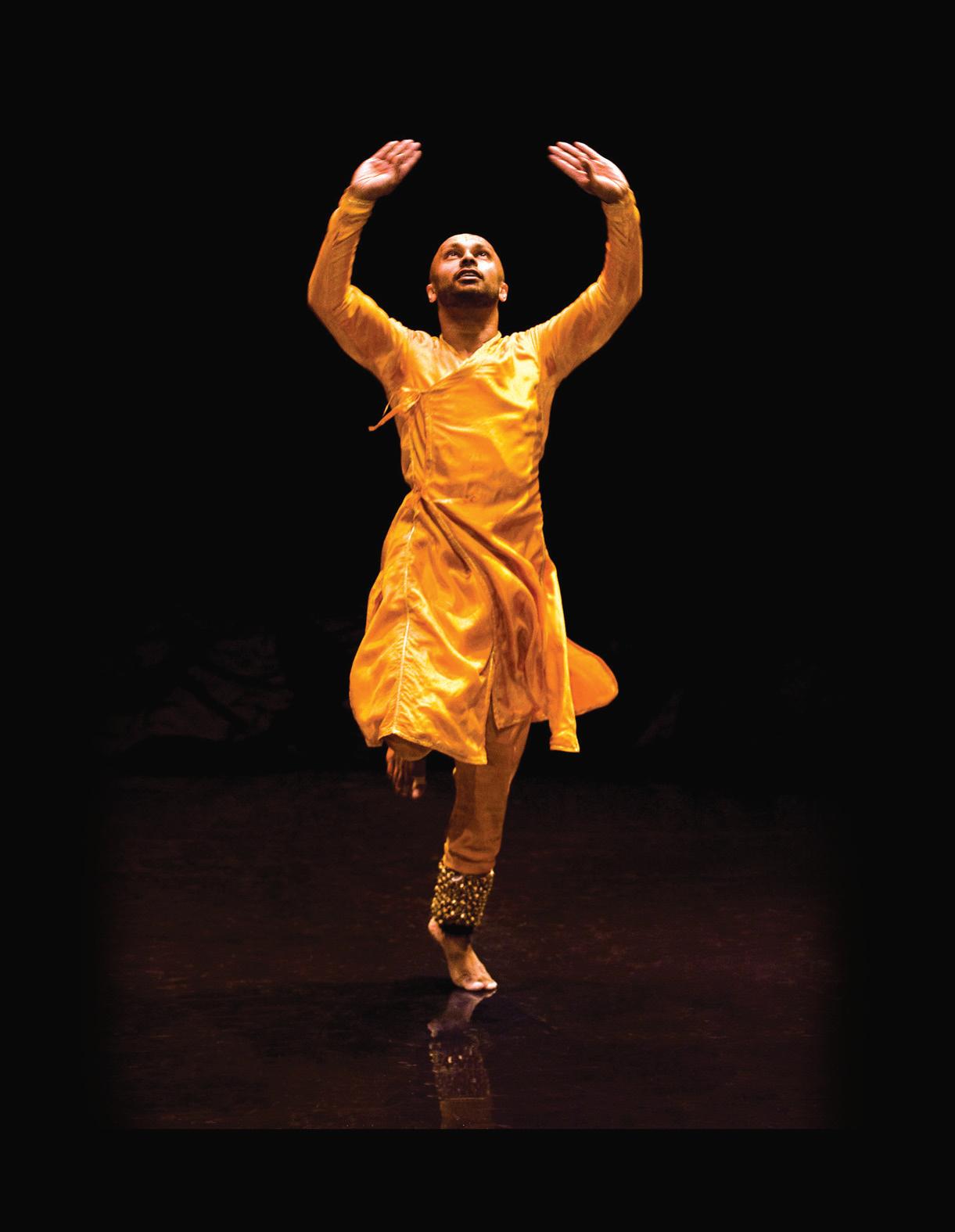
I ask if the two contrasting learning styles led to a cultural shock as a youngster. “My mother was always involved in the Bengali community and its events. So I understood and appreciated the guru-shishya parampara and the culture of respect for elders,” says Khan.
“Contemporary education was a shock, but also a curiosity as one starts to question the ways. Contemporary dance class is like a science class, while classical is like a temple. So I am trying to bring science to the temple and enhance spirituality.”
Akram Khan will perform Gnosis at the Sydney Opera House from May 26-27, 2010. Please visit www.sydneyoperahouse.com.au
Shivangi Ambani-Gandhi
NATIONAL EDITION DANCE www.indianlink.com.au
A talented artist brings a mythical character to life through the medium of dance


22 <> APRIL (2) 2010 INDIAN LINK Ph.0432824148 / 0413711588 / 0287986743
Hindu youth conference displays leadership and cohesion


The First Australian Hindu Youth Conference (AHYC) was hosted by Hindu Youth Australia (HYA), the youth wing of Vishva Hindu Parishad (VHP), on April 10 and 11 at the University of Western Sydney, Parramatta Campus. The theme of the conference was “Developing Leadership amongst Australian Hindu Youth”.
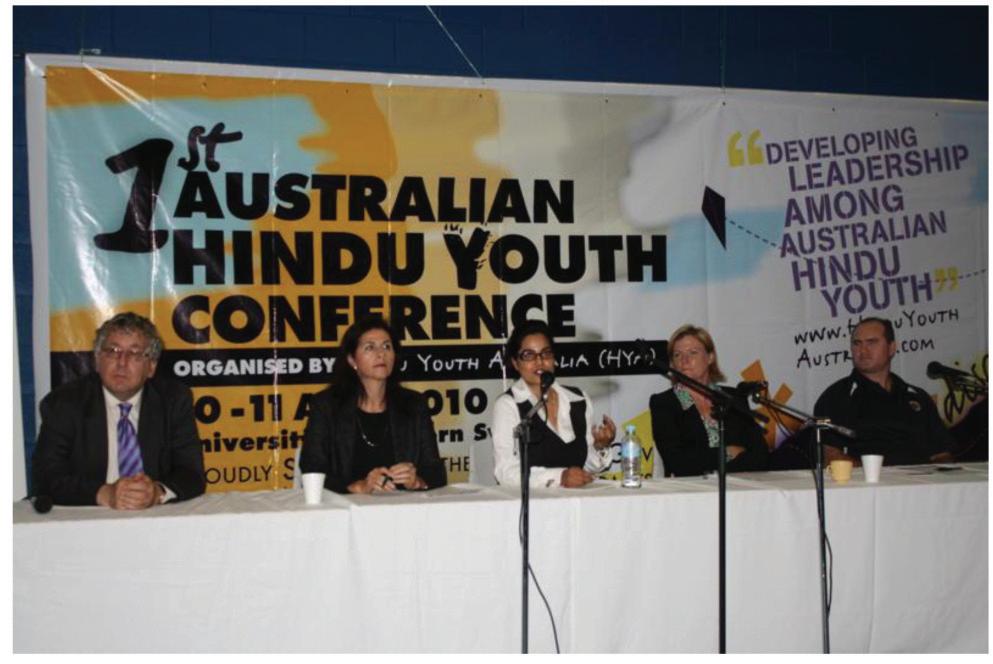
The event marked a year since the HYA was formed and served as a platform for various political leaders, community spokesman, youth volunteers and keynote speakers to drive leadership as the main theme.
The conference was attended by various dignitaries including Hon. Laurie Ferguson MP (Parliamentary Secretary for Multicultural Affairs & Settlement Services), Mr Barry O’Farrell MP (NSW Leader of the Opposition), Clr Paul Garrard (Lord Mayor of Parramatta). Also present were Senator Concetta Fierravanti-Wells (Representing the Federal Opposition Leader Tony Abbott) and Ms Julie Owens MP (Federal member for Parramatta) and Mr Anthony Roberts MP (NSW Shadow Minister for Citizenship, Shadow Minister for Volunteering and the Arts).
Officials from VHP included Swami Vigyanananda (Joint General Secretary –International Coordination) as well as Mr Brij Pal Singh (President of VHP Australia).
Aboriginal Elder, Uncle Max Harrison blessed the conference and welcomed all delegates to the land of Baramada (Parramatta – Head of waters).
The conference then commenced with a statistical and demographic report on Hindus in Australia. In his presentation, Mr Krishna Ramarathinam quoted that “Hindus have been an integral part of the Australian community for the last 150 years” and this has been acknowledged by Prime Minister Kevin Rudd in his message to delegates of the AHYC. Based on census data, Mr Ramarathinam then continued to highlight the phenomenal contributions of Hindus to the Australian society. The conference was supported by “The Australian Government’s Diverse Australia Program Small Grants” issued by Federal Department of Immigration, and Mr Ferguson spoke about the significance of this conference in promoting peace and cultural diversity.
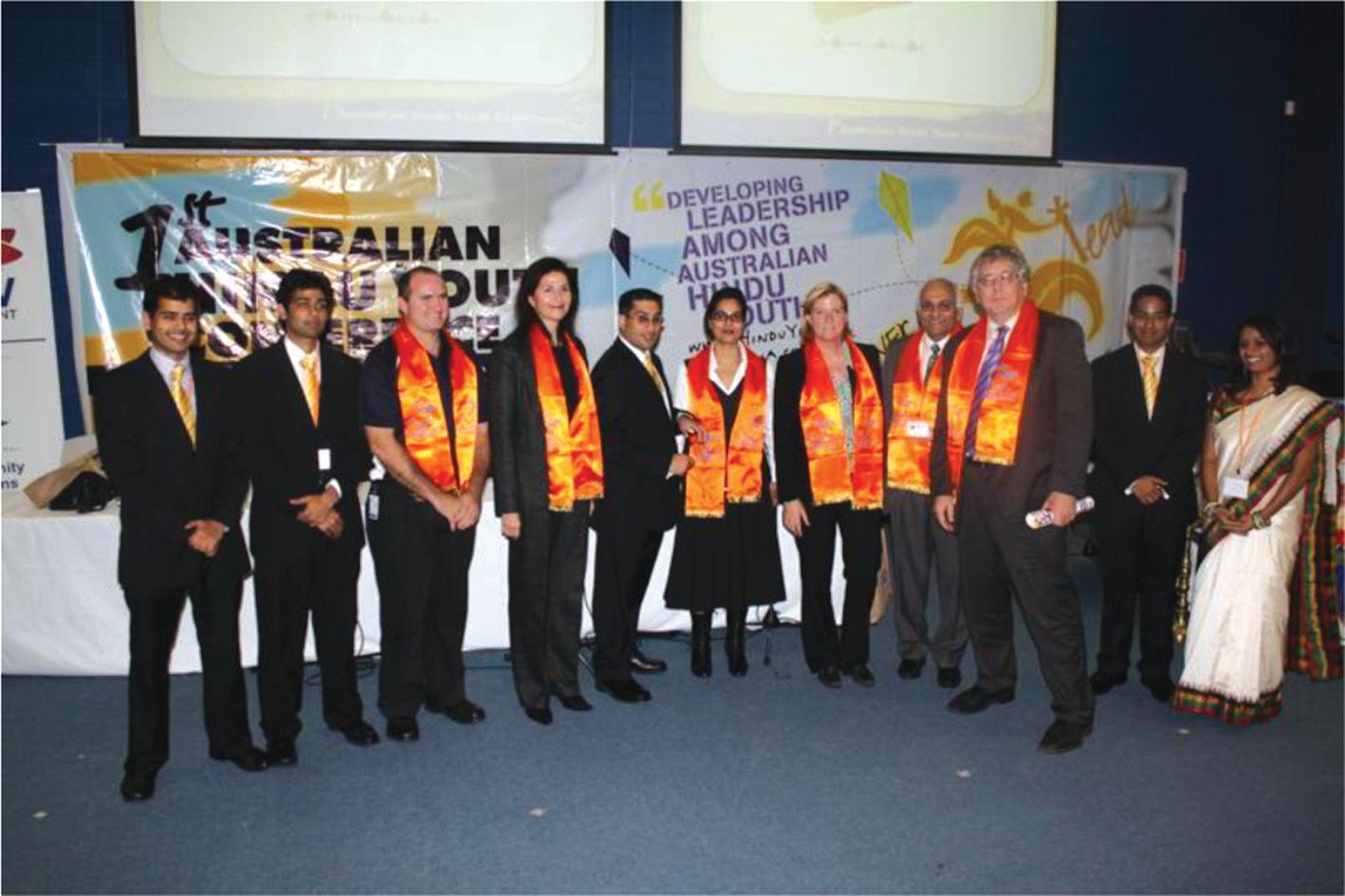
Clr Garrard acknowledged the wonderful spirit in which the Australian National Anthem was sung and provided valuable insights into the need for leadership amongst youth. Nikhil Rughani delivered a succinct and brilliant keynote address, speaking of the challenges he had faced as a Hindu student studying in a Catholic school and highlighted the need for a Hindu community entity that the Hindu Australian youth can look to. Mr Rughani highlighted the contribution of Hindus to the wider community and inspired the youth to build leadership skills by getting involved. Mr Rughani also raised the necessity for the establishment of an Australian Hindu school, which he tentatively termed “Project Saraswati”.
A Bharatnatyam dance performance by Neeta Sura and her students from the Nrityaniketan dance school delighted the 250 conference delegates present. They portrayed a sense of elegance, grace and received a huge applause at their dramatic finish. A powerful and traditional Vedic chanting performance was displayed by the Sydney
Veda Patasala group, who chanted hymns of wisdom with a strong sense of purpose and refinement.
Other presentations followed through the second half of the first day, presented by Venkatesh Kulkarni and Pooja Sashi.
Nikhil Rughani facilitated the much-awaited panel discussion, which saw a balance of representation from various government representatives and community leaders including Ms Julie Owens MP, Hon Laurie Ferguson MP, Senator Concetta FierravantiWells and Mr Chris McAlpine (Capacity Planning from Parramatta City Council).
The second day of the conference focused on personal development which was greatly beneficial to the youth. Cultural performances and interactive workshops took more of a centre stage. The day began with bhajans from Mr Aashis Srestha, a well renowned artiste from Nepal followed by a short, dynamic presentation by Ms Pratigya Rizal, focusing on the role of youth in today’s society.
Hindu Society then gave an informative presentation on the role and activities of their society, as well as the need for university students to positively identify themselves with their culture. Ms Janaki Rughani presented a enlighening talk on the benefits of yoga and inspired individuals to take an active part in the 2012 International Yoga Festival, followed by a yoga workshop by Keenan Crisp. Mr Crisp was a commando for the Australian Army, and a community leader, who after spending 3 years in India learning yoga, is now one of the nation’s most prominent yogis. Subangan
Nirmaleswaran presented an interesting demonstration on the various uses, styles and techniques of the mridangam, one of the most famous rhythmical instruments in Hindu devotional music.
Next, the youth wing of the Gayatri Parivar, the Divine India Youth Association (DIYA) held a workshop on how to perform a practical pooja in 20 minutes. Ms Sukanya Jaiswal, Mr Sujan Amin and Ms Garima Verma went through various rituals of Hindu worship and explained the meaning and significance of each practice in great detail.
The post-lunch session saw Ms Nirja Malik with her insightful presentation on the Satwik (meaning pure, free of impurities) way of life. Mr Arjun Nidigallu then took centre stage and gave a brilliant presentation on Hindu philosophy and its relevance to today’s youth. Ms Pooja Sashi and Mr Divesh Lal, the event managers of the conference, held a short interactive forum on what the delegates would like to see at the 2011 conference as well as what HYA plans to achieve in the next 12 months.
An enlighening talk from Ms Akanksha Khanna explained “Why HYA is NOT a religious organisation”. Ms Bhavana Satyamurthy gave a short presentation on the need for a Hindu youth centre where events such as conferences, discussion groups, seminars, cultural events, etc could be held.
Another forum was then held by Ms Thanvi Kuppanda and Mr Rajan Chandrasekaran in which audience members gave constructive feedback on the various activities and presentations that were on
display over the two days.
All of these points were recorded and will be presented by HYA in their conference report. The conference DVD will also be released within the next few weeks. More information is also available on www. HinduYouthAustralia.com over the next two weeks.

In the vote of thanks, HYA was insistent in thanking their principal sponsors, the Australian Government’s Diverse Australia Program small grants scheme, issued by the Federal Department of Immigration, as well as the NSW Government’s Community Relations Commission. They also thanked many volunteers, their families and several organisations for making this conference a huge success.
The aim of the conference was to inspire, engage and enrich the youth about Hindu Dharma and more importantly help them identify themselves as Hindu Australians. The feedback received so far has been positive and appreciative of all the efforts that volunteers have put in.
APRIL (2) 2010 <> 23 NATIONAL EDITION
COMMUNITYSCENE www.indianlink.com.au
Scenes from the conference



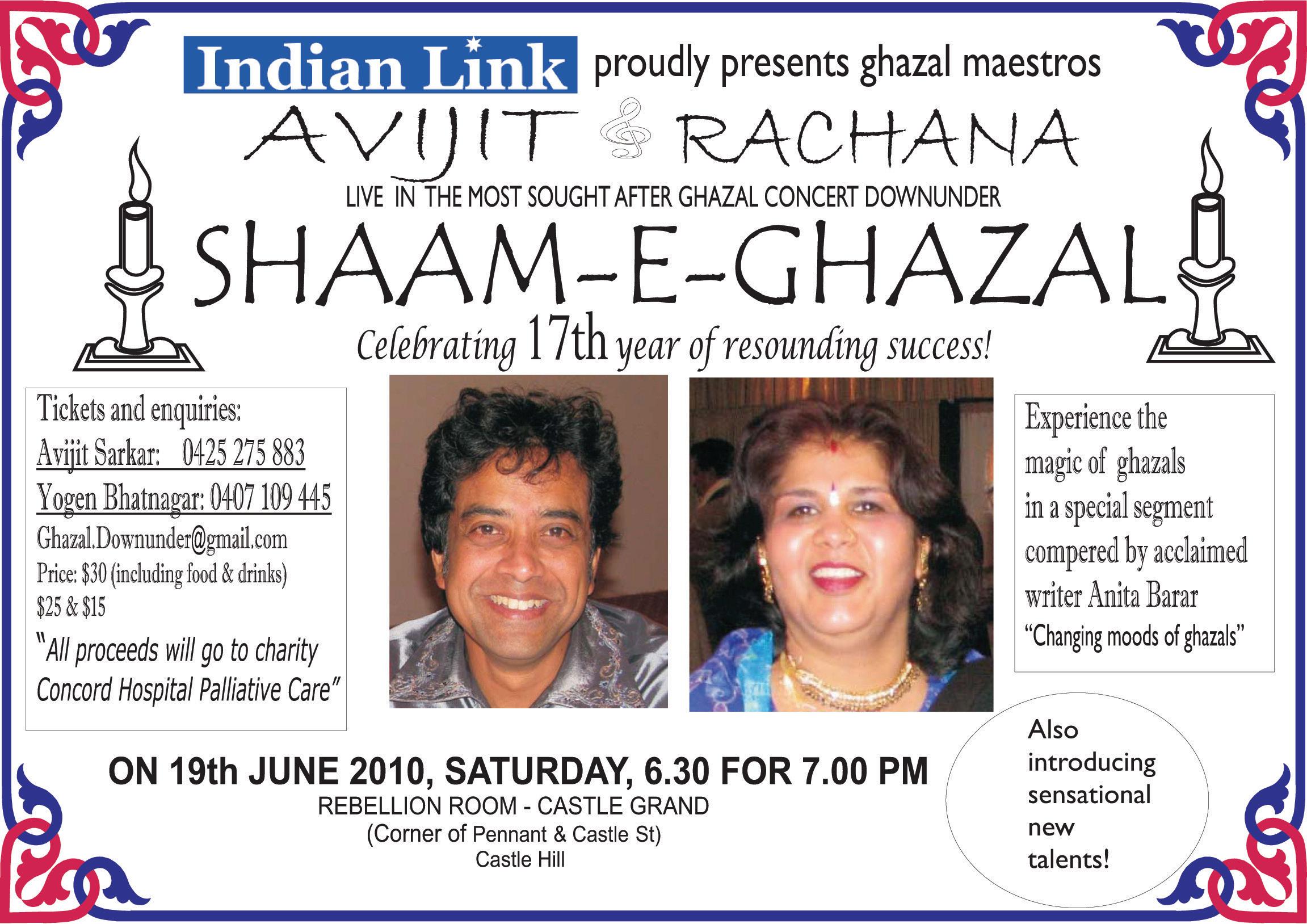
24 <> APRIL (2) 2010 INDIAN LINK
Garland making at Royal Easter Show
Flowers – ephemeral no doubt but powerfully symbolic; the muse of many a poet and artist, they represent different things to different cultures. From elaborate gardens to intricate flower arrangements, floral artistry has metamorphosed into a billion dollar industry over the ages, serving special occasions quite as much as everyday needs. While ornate displays are the vogue world over, in India, the art of toran and maalai making is a rich tradition, handed down from generation to generation. Be it to adorn the temple deity or wedding mandap, matron and maiden, flower power reigns supreme.
It is this ancient Indian ritual of garland making that Sydney resident and floral artist Hema Mohan proudly showed off to over 90,000 visitors at this year’s Royal Easter Show. Accompanied by the gentle notes of Alaypayudhey, Hema and her associate Leela Venkatraman offered step-by-step instructions on how to make an orchid garland.
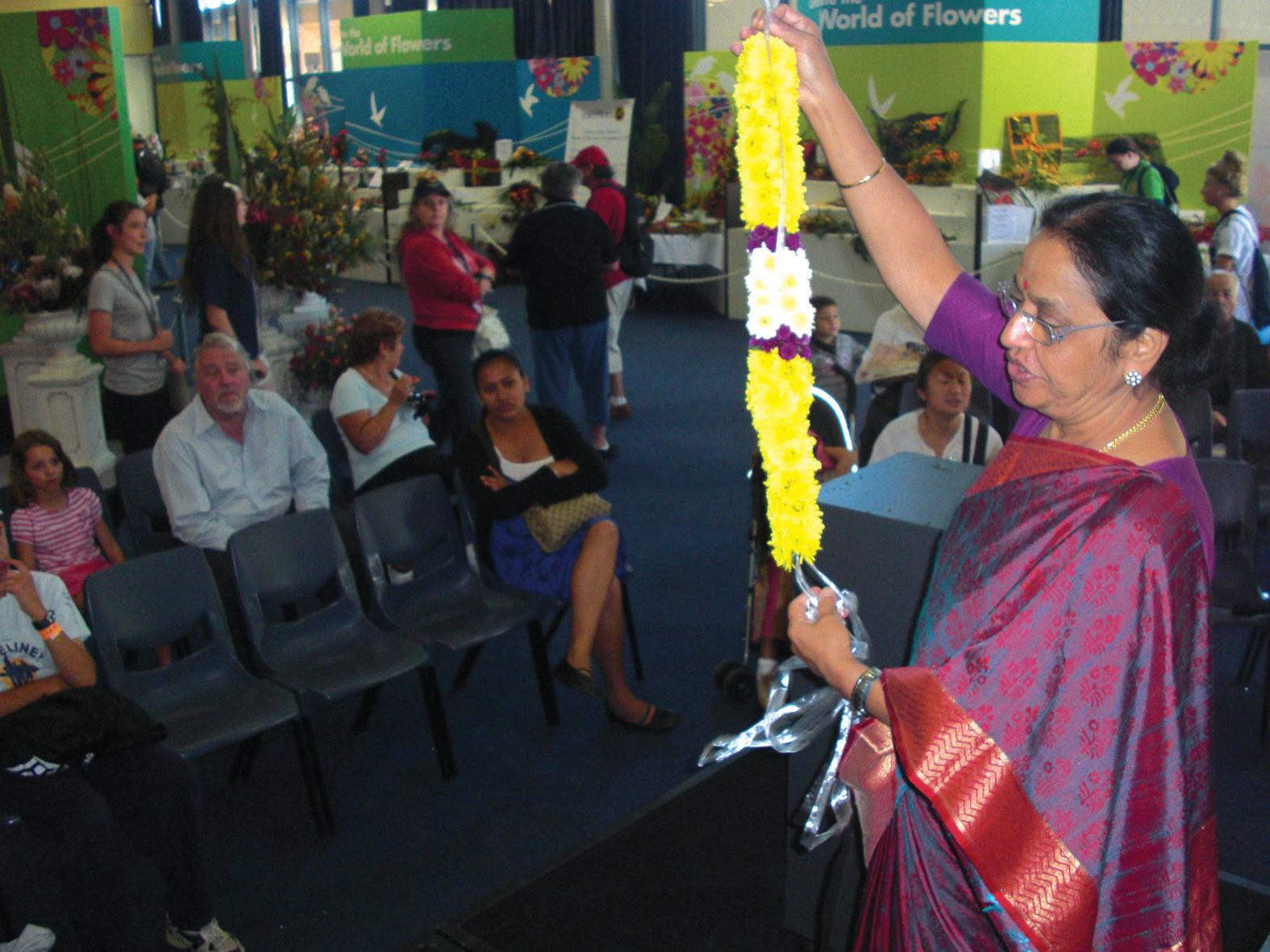
An active member of the Royal Horticultural Society of NSW, she has been a part of the iconic Sydney show for a decade now, putting up Indian tableaux and giving live demonstrations.
Her exhibit at the Flower and Garden pavilion showcased India’s rich cultural heritage and was part of a seven-nation montage that included Australia, Japan, Singapore, France, South Africa and UK.
“The first thing that comes to my mind, when I think of India,” she told Indian Link, “is colour and arts – the sheer diversity of both is mind-blowing, and my ‘arrangement’ reflected this very well. It stopped almost everyone take notice of the display.” Incorporating balance, harmony and depth, the colourful exhibit was complimented by a pleasant arrangement of natural flowers to fall in line with Society’s expectations, she explained.
A welcome touch was the judicious use of spices to create a rangoli and ethnic props (all part of Hema’s personal collection over the years) to add depth and dimension to her display.
I am very proud to use the Srirangam Temple in Tamil Nadu as my focal point, she added. Hema specially prepared and played a DVD on the vibrant tradition of floral art in India and its diverse uses to support her demonstration.
Working with blooms is not merely Hema’s hobby (an expensive one, unfortunately, she quips) but a passion too, deftly weaving complex patterns with the most fragile flowers. “I have been a member of the Horticultural Society for approximately 15 years. This is a meeting place for all who love ‘flowers’ basically and enjoy making various floral arrangements to suit different places and occasions. Despite being expensive and time consuming, there is no shortage of
members,” she avers.
Through the society, Hema became involved with the Easter Show. “Senior members would offer tips and advice on participation and that is how the maalai demonstration got started,” she said.
Hema, who procures her flowers daily from the Flemington Markets, is particularly partial to chrysanthemum, carnations, roses, daisies and orchids.
She is also actively involved with the Hindu temple at Helensburgh, where she supervises a ladies group, which meets weekly to make garlands for the deities.
“We meet every Thursday at the temple
100 % GUARANTEED
100 % GUARANTEED
and all the volunteers, approximately 20 or so thoroughly enjoy making garlands. It gives us immense happiness to contribute thus. New volunteers are always welcome to contribute their time and skills or learn the art of garland making,” she says. With the ten day Brahmotsavam coming up in October, Hema hopes new members will lend support to the group.
The Floral Art group of RHS of NSW meets on the last Wednesday of the month at Beecroft Bowling Club, 128,Copeland Road, Beecroft.
DURGA DEVI JYOTISH MANDIR
World Famous Astrologer
Panditji Srinivasaraju in Sydney
Panditji is an expert in Palm, Face, Photo Reading, Numerology, Horoscope & predicts your past, present & future. Performs Home / Shanti Pujas, Astabandana, Sudershana Chakras, Laxmi Chakras, Vastu Consultation - Home & Commercial
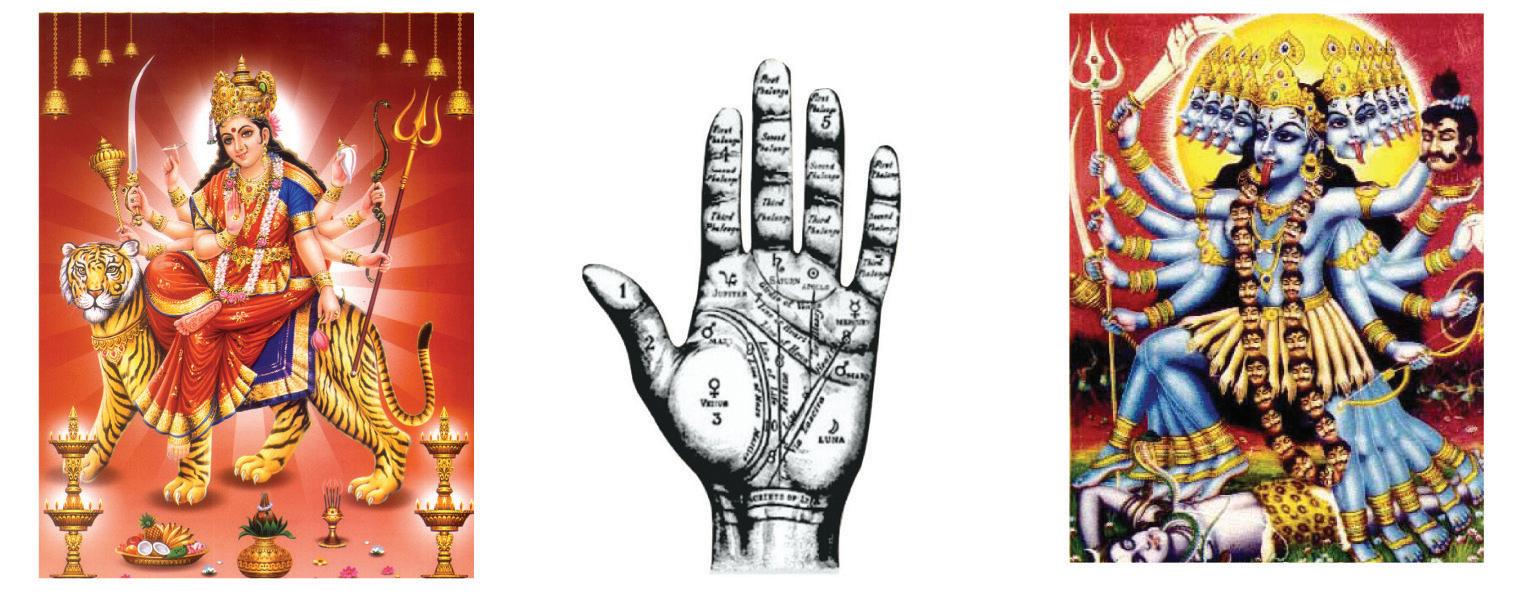
Are you suffering from any of the following problems: health, family, marriage, love, business, employment, husband & wife relationship, property, court, children promotion etc.
REMOVE MAGIC AND GIVE PROTECTION
Shakthi Pooja & any evils don’t worry any more... Lucky & Vasikaran CALL FOR APPOINTMENT
M: 0413 897 421 / 0435 782 182
100 % GUARANTEED
APRIL (2) 2010 <> 25 NATIONAL EDITION
COMMUNITYSCENE www.indianlink.com.au
Usha Arvind
INSIDE THE SHOP - INDIA IN AUSTRLIA , 5 BELAR STREET, ST., MARY’S NSW 2760
People Places Parties

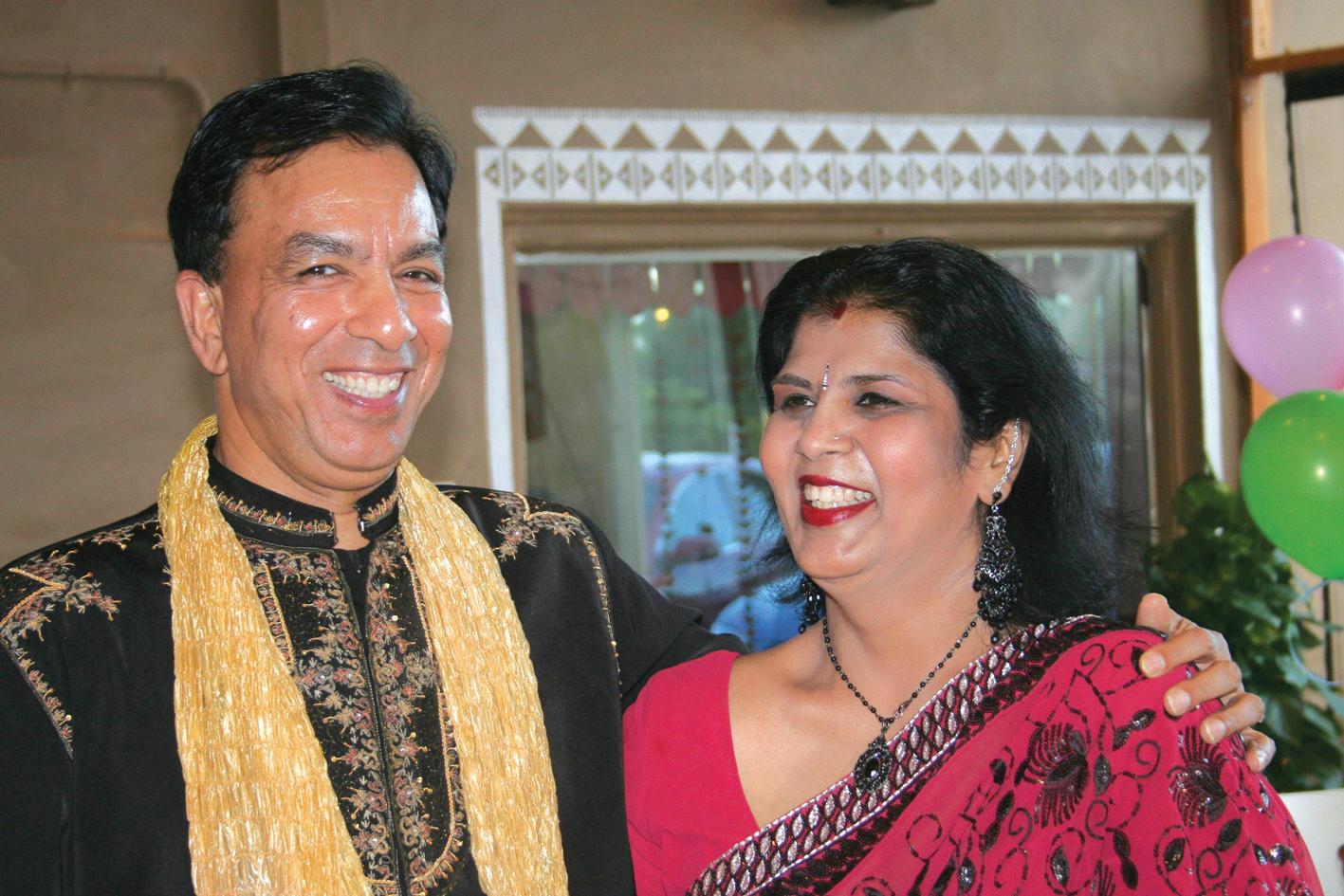


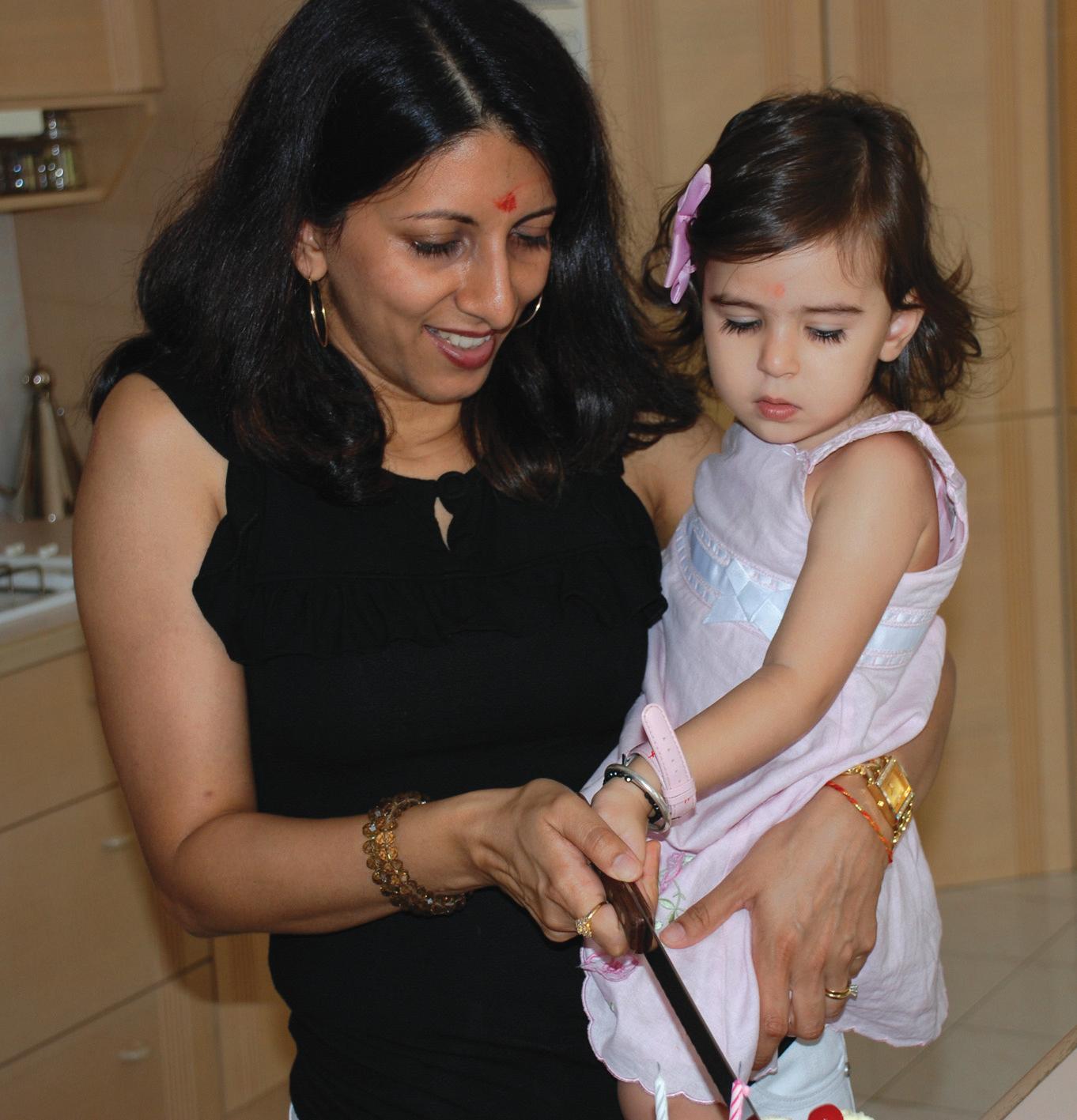



26 <> APRIL (2) 2010 INDIAN LINK
Kanta Lamba (extreme right) at a special lunch hosted by the Premier to celebrate “Women of Different Faith”, a special honour for her
Kristelle and mum Vinisha cut the cake to celebrate her 2nd birthday
Panj Pyaras and Sangat celebrating Baisakhi at Parklea Gurudwara Sahib
Samay enjoys his birthday party with friends
THISMONTH www.indianlink.com.au
Rachana and Yogendra Bhatnagar are all smiles at their 25th marriage anniversary celebrations at Kashi Indian restaurant

APRIL (2) 2010 <> 27 NATIONAL EDITION
Library grant for Bengali resources
The Mayor of the City of Canterbury and Member for Lakemba, Cr Robert Furolo has welcomed a $60,106 grant from the Kenneally Government to establish a new collection of Bengali-language resources and activities at the City of Canterbury Libraries.
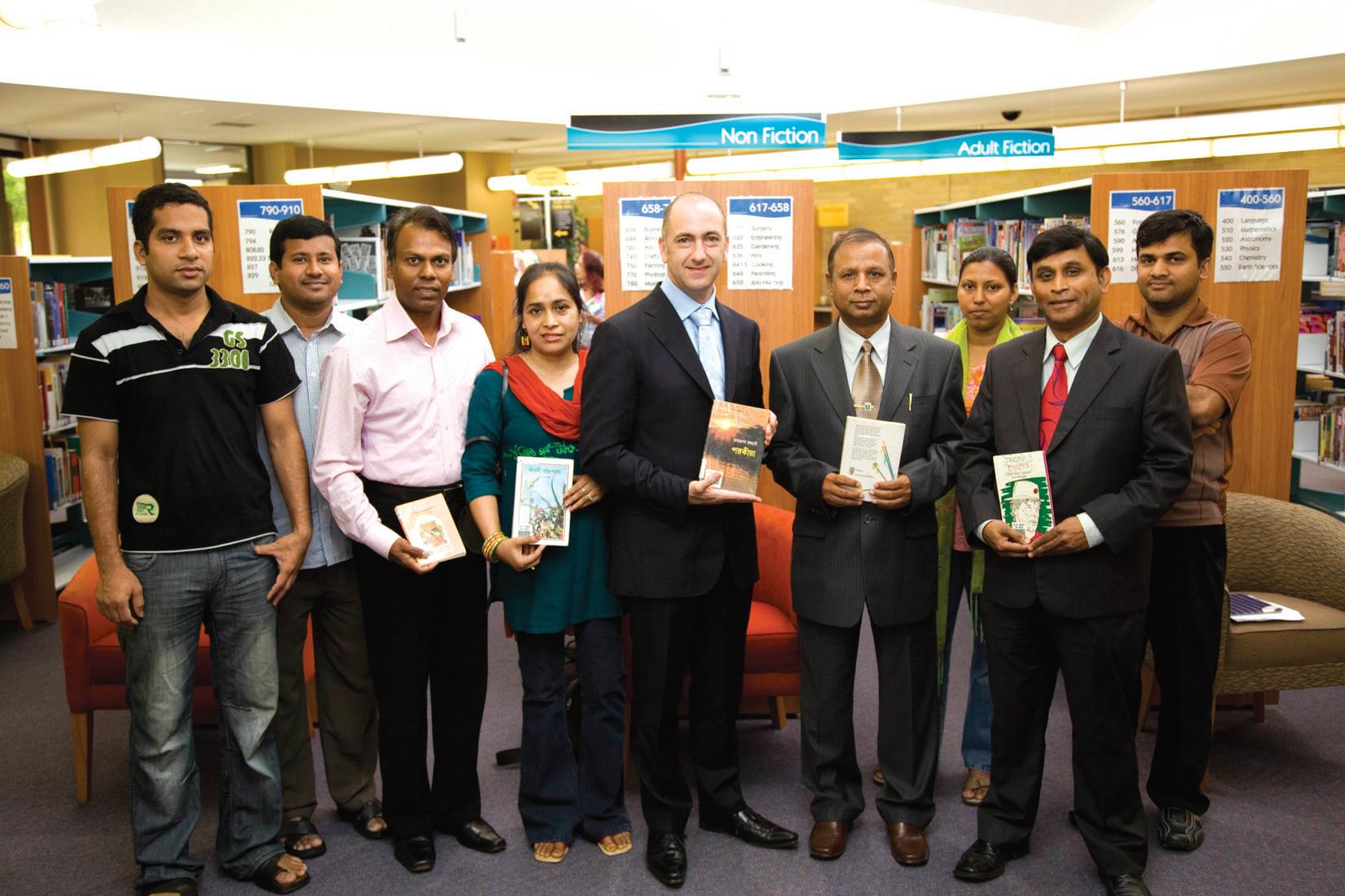
It is the culmination of months of campaigning by the councillor, who has been fighting hard to expand the ethniclanguage collection.
“More than being just bricks and mortar, Canterbury Library is a social institution that engenders a sense of community. Therefore libraries need to evolve to meet the needs of local residents,” Cr Furolo emphasised.
The Bengali community, which has grown by 511% according to Council statistics, is one of the fastest growing ethnic groups in the City of Canterbury.
“It is now the fifth highest non-English language group outside of Chinese, Arabic, Vietnamese and Korean”, Mayor Fuorlo stated.
“We’re committed to meeting the needs of our diverse community and this funding from the State Government provides us with an opportunity to develop a range of resources and services which will meet the needs of our Bengali community,” he added.
“Our library currently provides a range of resources and services which specifically targets the needs of Arabic, Chinese, Greek, Korean and Vietnamese speaking members of our community. And we’ll now be able to purchase more than 1,200 books, DVDs, music CDs, newspapers and magazines, as well as offer a range of activities such
delivered through Campsie and Lakemba Libraries, which are the two branches with the highest number of Bengali speaking members. The other libraries within the council include those at Earlwood and Riverwood.
As a preliminary step, the council organised a Community Selection Meeting
suitable items for inclusion in the library’s collection.
It will also be organising the translation of key library brochures into Bengali and the inclusion of a Bengali cultural celebration into the Library’s Celebrating Cultures program.
“Our libraries have a fantastic track record of providing high quality services
overwhelmingly successful and there has been an overall increase in community language loans over recent years. And I am sure, our new Bengali collection will build on this success by reaching out to an important and rapidly growing group of people within our City,” Mayor Robert Furolo said.
IWA Seniors enjoy anniversary gala
The passion and zest for life of committed senior citizens of the Indian Welfare Association (IWA), brought about an enjoyable evening of dance and entertainment on the Easter long weekend at Bahai Centre, Silverwater to celebrate its tenth anniversary. Indian Consul General, Mr. Amit Dasgupta was the Guest of Honour and he very aptly summarized the gathering saying, “….the core values of freedom, democracy and secularism which the Indian community stands for will be passed on to the talented younger members.” They participated wholeheartedly to make this gala event an occasion to cherish and build upon in the future. The introductory speech by the President, Dr. Sampath Narayanan was followed by felicitations to Mr. Amit Dasgupta and Mrs. Saraswathi Venugopalan, a founder member and Secretary of the Association.
The proceeds of this function will be donated to Haiti Earthquake relief in keeping with tradition of the Association. IWA has launched fundraising drives in the community to collect and donate funds for Gujarat Earthquake in 2001, Canberra bushfires in 2003, Tsunami Relief in 2004, Cyclone Larry in Queensland in 2007 and the Black Saturday bushfires in Victoria in 2008. Additionally, senior citizens have always risen to the occasion for members of the community who are in distress and have provided financial, physical and moral support as needed.
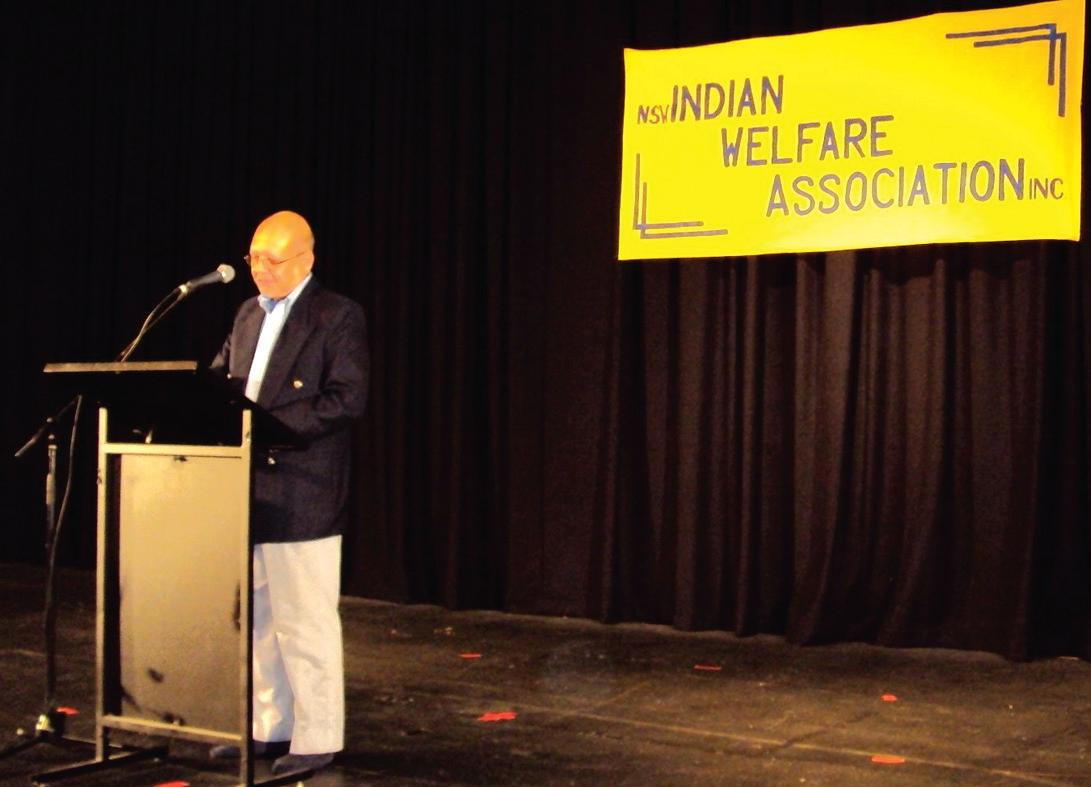
IWA also prides itself on its attempts
to build bridges between the generations, since all the variety entertainment involves rejuvenating and enlivening Indian art and culture with locally bred young talent. It encourages the younger audiences to continue the rich traditions of dance, music and helping with national integration. Accordingly, the highlights of the evening entertainment were provided by students of Thrayee School of Classical Dance under the guidance of Smt. Gayatri Krishnamurthy and students of Nrityagriha School of Dance under the guidance of Smt. Padma Balakumar. The theme of the evening was “Bharathiyam” to commemorate the contribution made by Subhramanya Bharathi, a well known freedom fighter, composer and poet. The performers were able to invoke a sense of patriotism in the audience with their dance items, notably the varnam, the thillana as well as getting their young pupils to perform the “Kolaattam” (an equivalent of ‘dandiya’) and used folk music based on Bharathi’s creations.


Among other attractions that captivated the audience was a short skit was created by Sri N K Srinivasan on national integration using the motto“unity in diversity”. The concluding item was a presentation of light music by MYU and his crew. A total of over 25 young artistes performed before the audience and it was heartening to see that Indian culture and tradition remains in good hands.
Malli Iyer
28 <> APRIL (2) 2010 INDIAN LINK
COMMUNITYSCENE www.indianlink.com.au
Usha Arvind
Dancers at the IWA gala
Amit Dasgupta
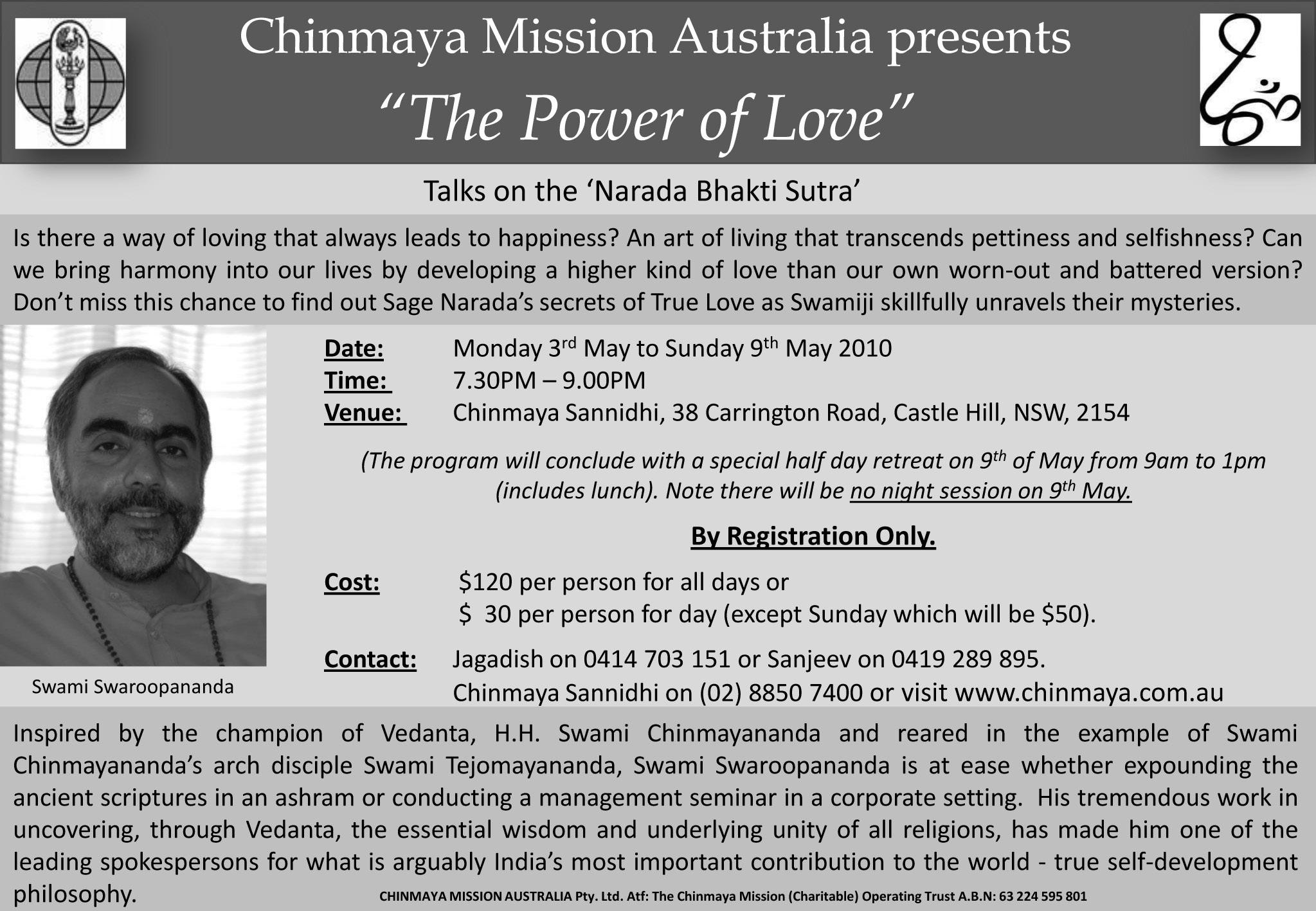

APRIL (2) 2010 <> 29 NATIONAL EDITION
TANTRIK, NOORI, SIPLI, NUMEROLOGY & KALA ELAMM SPECIALIST






YOUR ALL PROBLEM SOLVED HERE WITH GUARANTEED IN JUST 11 HOURS

LIKE BUSINESS, DISPUTE IN HUSBAND-WIFE, FAMILY PROBLEM, HEALTH PROBLEM, COURT CASE, DIVORCE, CHILDREN, CHILDLESS, EDUCATION, IMMIGRATION, LOVE-MARRIAGE, LOTTERY, VASHIKARAN, MUTHIKARAN AND MANY HARDPROBLEMS OF YOUR LIFE

NOTE: VASHIKARN & MUTHKARN IN JUST 5 HOURS
ALL PROBLEM SOLVED THROUGH THE PHONE
CONTACT: + 91 – 9815820078 / + 91 – 9988400440
(CHANDIGARH) India
Email: astrologerkaran@yahoo.co.in

30 <> APRIL (2) 2010 INDIAN LINK 139 STEPHEN STREET BLACKTOWN PHONE: 9671 7820 on traditional Indian food FLAMING HOT DEALS Call now on 0425 30 26 26 Quality Quantity Service Take-away Catering from $8pp PROBLEM! PROBLEM! PROBLEM! WORRY ENDS HERE
&
GOLD MEDALIST ASTROLOGER
PALMIST PT KARAN SHARMA
(Phd in ASTOSCIENCE)
Vijay Gandhi becomes US federal judge
Vijay “Jay” C. Gandhi has become the first Indian American federal judge in the Central District of California and the second community member to become federal judge in the history of the United States.
Gandhi, 38, sworn in as a Magistrate Judge for the US District Court for the Central District of California recently, is also one of the youngest federal judges currently serving in the Central District.
Gandhi will sit in Los Angeles and will preside over matters arising from all three divisions of the court. The Central District of California is the largest district in the US, serving more than 19 million people.
“We are exceptionally proud of Judge Gandhi for his accomplishments, especially given his steadfast commitment to the South Asian community,” said Joseph J. Centeno, president of the National Asian Pacific American Bar Association (NAPABA). “He will be an outstanding magistrate judge.”
Gandhi was formerly a litigation partner at Paul, Hastings, Janofsky & Walker LLP. He practiced law for nearly 12 years at the firm, as an associate from 1998 to 2006, and as an equity partner, thereafter.
He also worked on a full-time basis as a volunteer Deputy District Attorney and firstchaired multiple jury trials as a prosecutor.
Gandhi has been repeatedly recognisd as a “Rising Star Lawyer” in the “Super Lawyers” Edition of Law & Politics Magazine.
He is also a prolific writer and speaker on securities and business litigation, and has coauthored a book about securities law claims.
Prior to joining Paul Hastings, Gandhi clerked for Kenneth M. Hoyt, US District Court Judge for the Southern District of Texas.
Gandhi received his JD degree from the University of Southern California Law School, where he graduated Order of the Coif and received multiple American Jurisprudence awards.
Gandhi is also a Past President and Lifetime Member of the South Asian Bar Association of Southern California, an affiliate of NAPABA.
Migrants to become majority in Australia by 2025
Migrants from other countries including India will overtake the number of locallyborn residents in Australia by 2025, revealed a media report.
An Australian-born family will become a minority within the next 15 years, outnumbered by a surging wave of migrants from Europe and Asia, the Daily Telegraph reported quoting demographic consultants Macroplan Australia.
Most migrants to Australia come from Britain (14.2 percent), followed by New Zealand (11.4), India (11.2), China (10.5) South Africa (5.3) and the Philippines (4.1).
The ratio of foreign-born residents was higher in Sydney and Melbourne because these were the two most popular destinations for new arrivals, Bob Birrell, co-director of the Centre for Population and Urban Research, was quoted as saying.
“We’re getting lots more Indian and Chinese immigrants coming to study, but many of those will end up settling here,” Birrell said.
According to 2006 census data, 40 percent of the population was either born overseas or had at least one parent who was born abroad.
But at present immigration levels, that proportion will jump to more than 50 percent by 2025. Migrants are expected to swell the population from 22 million today to 36 million by 2050.
But experts are of the opinion that a migrant majority will be healthy for Australian culture and attitudes.
“It all adds to the cosmopolitan nature of modern Australia,” Bernard Salt, a demographer was quoted as saying.
“It means our views become less blinkered, and we become more tolerant, confident, engaged, opportunistic and optimistic because we are open to new ideas, not obsessed with keeping things the same,” he said.
Giving voting rights to NRIs not easy, says Chawla
Even though the Manmohan Singh government is keen to give voting rights to non-resident Indians (NRIs), Chief Election Commissioner Navin Chawla says it appears this may not be an easy task.
Interacting with reporters recently, Chawla said the Election Commission wrote to the government in March about the issues involved in NRI voting. “NRIs are settled all over the world. They come from various states and various constituencies. In big countries, there would be quite a number of places where votes may have to be cast,” said Chawla.
“The Election Commission will need to carry the voting machines to all these places and bring them back safely,” said Chawla. He added that the commission will have limited time - from the date of announcing the list of candidates till the polling date - to complete the process.
The current rule dealing with a voter’s minimum stay in a constituency before being eligible to vote may also require changes, said Chawla.
Chawla said that currently voters in 82 percent of the country have an election photo identity card (EPIC) and their names appear on photo electoral rolls.
“We have taken Kerala’s efforts in achieving a 100 percent record as a role model and we expect that by the end of the next year, voters in the entire country will have EPIC and their names will appear in photo electoral rolls,” added Chawla.
AirAsia’s Tony Fernandes ventures into Formula
1
Goan origin entrepreneur Anthony “Tony” Francis Fernandes, owner of no-frills air carrier AirAsia, has forayed into Formula 1 Racing in Malaysia, and says this sport will be a sell out in India.
“The beauty of Formula 1 is that it creates world class champions, it creates engineers, marketing people. That’s why I did it,” said Fernandes, whose father is a Goan who was born in Kolkata and migrated to Malaysia.
“We have to allow our children to think they can be world champions,” the 46-year-old chartered accountant by training said recently, adding the reason why he forayed into the sport is it helps develop human resources and offers a lot of business opportunity.
Narrating his experience, he said people like Vijay Mallya, the chairman of UB group and Kingfisher Airlines, bought an existing team called Jordon and renamed it Force India.
“But I had to build everything from scratch,” he said, adding “from the business aspect, I think, Formula 1 is in right position. Next year there is a race in Delhi”.
The track will be located 40 km southeast of the Indian capital.
“A lot of the world is yet not interested in Formula 1. But it will change. Definitely in India it will be sold out,” he said, maintaining that thus far Formula 1 was a European game.
“With 200 million Indians and Asians watching it, there is a lot of revenue opportunity. Cost is going to go down. It’s a good business. We can help develop our own people in it,” said Fernandes who was in the music business for 14 years before buying AirAsia.
His other businesses include a mobile
phone business called Tune Talk and a financial services business known as Tune Money.
Broadway musical Hair to rock with Gandhian values
Hair, the cult rock musical that explored the theme of hippie movement in the US, is set to make its debut in India, mixed with Gandhian values.
The credo of the characters of the 1967 musical is - “Be free, no guilt, be whoever you are, do whatever you want, just as long as you don’t hurt anyone.”
The group believes that though their message remains the same as it was 40 years ago, a new feel has been added to it to connect to today’s youth.
“Today, the message of Hair remains as relevant as it was in the 70s: love, peace, joy and happiness but the means to reach them have been adapted to the 21st Century. If the intention of Hair then was to make outer revolution to stop wars, the intention of Hair now is to make inner revolution,” Antoine Redon, the producer of the musical, said in a press release.
“World peace cannot be achieved without first achieving inner peace. How to face wars? How to behave in the face of opposition? Are love and non-violence not the best weapons? Hair 2010 will thus advocate the Gandhian values of ‘ahimsa’ and ‘satyagraha’ in his native land,” Redon added.
Hair tells the story of the ‘tribe’, a group of politically active, long-haired hippies living a bohemian life in New York City and fighting against conscription into the Vietnam War.
While the screenplay and lyrics are written by James Rado and Gerome Ragni, the music is by Galt Mac Dermot.
The performance will feature Indian actors such as Ankur Sabharwal, Samara Chopra, Rajeev Khati, Arjya Majumdar, and Tritha Sinha.
The Broadway musical is a preview to the full-length performance to be held in New Delhi again in October to coincide with the Commonwealth Games 2010.
New Zealand TV anchors aspire to become Bollywood stars
Television presenters of a reality show in New Zealand will travel to Mumbai to learn the nuances of acting in Bollywood, the largest film industry in the world, a media report said recently. Matthew Ridge and Marc Ellis of the show “Matthew and Marc’s Rocky Road” would travel to Mumbai and try to become Bollywood movie stars, TVNZ reported.
From working as snake charmers to learning the art of dancing in Hindi movies, Marc and Matthew will join thousands of hopefuls in their quest to become film actors, the report said.
They would try their hand at becoming a stuntman, or the perfect villain, and will compete against each other in the show. Mumbai is the ‘Los Angeles of India’, and Bollywood actors have iconic status in the country, TVNZ said.
Indian Americans catching up in US politics
Recipient of this year’s prestigious Ellis Island Medal of Honour, Indian American business leader Rao S. Anumolu believes the Indian community, doing an “A+ job” professionally and economically, is now catching on in politics too.
“Indians here are mostly professionalsdoctors, engineers and in finance field, etc,” says Anumolu, president and CEO of Long Island (New York)-based ASR International Corporation, who would be presented the medal recognising those making outstanding contributions to their communities, their
nation and the world, on May 8.
“In these professions, there is ample opportunity to prove themselves professionally and economically, and they are doing A+ job,” he told IANS in an e-mail interview.
“In politics, the second generation is catching on and they are much more in tune as participants, be it (Louisiana governor) Bobby Jindal or others, but not to the extent you expect,” he said.
Asked what makes Indians excel, Anumolu said: “My take on that is: Talent has always been there in India. The question is of providing sufficient resources to support the basic human talent for growth.”
“Now, in India too they are flooded with the resources, knowledge, know-how, equipment, and whatever is needed to succeed. Indians are excelling worldwide. Anywhere they can excel because they inherently have good talent and they work hard,” Anumolu said.
With the Indian economy now booming, Anumolu’s ASR is “supporting companies here which are going to India and setting up big ventures there”.
“With our support, they are able to go there with full force and implement them with these resources and know-how. So, indirectly we are helping everyone,” he said when asked about his plans to venture out to India.
Both the US House of Representatives and the Senate have officially recognised the Ellis Island Medals of Honour and the recipients are read into the Congressional Record. Anumolu is the only Asian Indian to have been also cited by the US Congress in 2003 for the contributions made by him and ASR International Corporation towards homeland security in the US.
He came to Chicago for higher studies in 1969 and went on to turn ASR into a trailblazer in developing innovative systems and leveraging technology to provide costeffective, high quality services to Fortune 500 companies like BP, Rolls-Royce, Exxon, Textron and government agencies.
“They work with us because we serve them well in a cost-effective manner,” he said. “We support Fortune 500 companies and provide services worldwide. Of course most of our work is right here in the US.”
Anumolu, who has also been honoured by national Telugu organisations such as TANA and ATA, has consistently “supported many associations of Indian origin. In turn, they send out aid when and where needed in India”.
“They are better than me in channelling the resources...so we give it to them,” he said.
Anumolu has no political favourites, be it in India or the US. “We stand neutral on the political spectrum. I have friends on both sides of the aisle. We keep away from politics,” he said.
“Our mission is clear - we are focused to achieve a few things. And we believe that this is a major contributor to societal growth, whether it is here or anywhere in the world,” Anumolu said when asked what he believed brought him the honour.
His formula for success: “Anything you take, work at it, focus on it, try to learn from it, and then move forward with total determination and you will succeed beyond your imagination.”
His two sons, Praveen and Naveen too are now fully involved in the family business, yet Anumolu who keeps fit and at peace by not getting “involved in unnecessary activities” and doing “interesting things all the time”, has no retirement plans.
As he told his nephew recently, “I just started my career. Lots to be done. We have only started scratching the surface. We will keep going!”
APRIL (2) 2010 <> 31 NATIONAL EDITION
IANS DIASPORA www.indianlink.com.au
India’s central bank hikes rates further to tame inflation
Interest rates on housing, automobile and corporate loans were set to rise with India’s central bank hiking key rates in its monetary policy for this year were unveiled recently, to suck excess liquidity out of the system to tame inflation.
The Reserve Bank of India (RBI) also projected India’s growth for this fiscal at upward of 8 percent, against 7.2 percent as per the earlier projection, while the annual rate of inflation at the end of March 2011 is forecast at 5.5 percent.
RBI Governor D. Subbarao, who unveiled the policy here, hiked the repurchase (repo) rate and the reverse repo rate by 25 basis points each. At the same time, he also increased the cash reserve ratio to 6 percent from 5.75 percent earlier.
The repo rate, which was 5 percent prior to the recent revision, is the interest charged by the central bank on borrowings by commercial banks. A hike in this rate increases the cost of borrowing for commercial banks.
The reverse repo, which stood at 3.5 percent, is the rate at which the central bank borrows money from commercial banks. A hike in this rate makes it more lucrative for banks to park its funds with the RBI.
The new rates were unveiled by Subbarao before chief executives of commercial banks. He said the revised repo and reverse repo rates are effective immediately, while the cash reserve ratio is to take effect from the week beginning April 24.
Reacting to the monetary policy, Finance Minister Pranab Mukherjee said it signalled a move toward neutral policy rates -- one that helps tame inflation but also ensures that the country’s growth momentum does not suffer on account of a credit squeeze.
“This policy should have a gentle impact in tightening money in the economy and should dampen further inflationary pressures,” Mukherjee told reporters, soon after the policy was unveiled by the central bank.
On the issue of inflation, the finance minister said it was difficult to predict the actual outcome in the long-run and depended on a combination of some statistical analysis and intuition.
“But my own belief based on analysis done in my ministry is that inflation is now on a downward trajectory and in 2010-11 will be less than 5.5 percent and, in fact, closer to 4 percent with an upward bias.”
The key policy rates and credit ratios announced by the central bank are: Bank rate: 6 percent; Repurchase (repo) rate: 5.25; Reverse repurchase rate: 3.75: Cash reserve ratio: 6 percent; Statutory liquidity ratio: 25 percent
According to the central bank, the hike in cash reserve ratio was expected to suck out some Rs.12,500 crore ($2.75 billion) out of
the system. The hikes in the policy rates will also impact on the amount of funds available for commercial credit.

“The economy is recovering rapidly from the growth slowdown but inflationary pressures, which were triggered by supply side factors, are now developing into wider inflationary process,” Subbarao said.
“As the domestic balance of risks shifts from growth slowdown to inflation, our policy stance must recognise and respond to this transition.”
The industry, by and large, welcomed the measures announced in the monetary policy. “It is the best bargain in the prevailing situation,” said Amit Mitra, secretary general of the Federation of Indian Chambers of Commerce and Industry (FICCI).
“The monetary policy has suggested and supported the government strong feeling to sustain the growth momentum,” said Swati Piramal, president of the Associated Chambers of Commerce and Industry (Assocham).
“We believe the RBI is aware of the challenges faced by industry at a time when credit growth is picking up and capacity expansions are taking place,” added Chandrajit Banerjee, director general of the Confederation of Indian Industry (CII).
Hurt Tharoor says he is ready for ‘thorough probe’
A couple of days after being forced to quit over his alleged links to the Kochi IPL franchise, former minister Shashi Tharoor Tuesday said he had done no wrong and urged Prime Minister Manmohan Singh to probe the charges of impropriety and corruption hurled against him.
As the Lok Sabha listened with rapt attention, Tharoor, speaking for the first time after his resignation as minister of state for external affairs, said his conscience was clear but he felt “deeply wounded”.
“I am deeply wounded by fanciful and malicious charges made against me and I have requested the prime minister to

have these charges against me thoroughly investigated,” an emotional Tharoor said amid loud thumping of desks by his Congress party colleagues.
The former UN diplomat and bestselling novelist said: “I have done nothing improper or unethical, let alone illegal. Nonetheless, in view of the ongoing political controversy, I have no desire to be an embarrassment to the government and believe that my departure at this stage will allow the prime minister and his cabinet colleagues to focus on the great challenges facing our nation.”
Saying his resignation was in line with “the highest moral traditions of our democratic system”, the MP from Thiruvananthapuram said he also wanted to let parliament continue its legislative business stalled by opposition members demanding his sacking.
Tharoor, 54, was blamed for misusing office in favouring his Dubai-based friend Sunanda Pushkar to secure sweat equity in the Indian Premier League (IPL) Kochi franchise worth Rs.70 crore. Some critics alleged that Pushkar was Tharoor’s front -- a charge both of them have denied. Dressed in a spotless white kurta pyjama with a tricolour scarf draped around his shoulders, Tharoor said that his career as a public servant was unblemished by any financial taint.
“I am new to Indian politics but I have a long record of public services, unblemished by the slightest taint of financial irregularity... I have led an unblemished life of personal integrity and probity and it is important to me that my name is cleared (of the charges),” he said.
The former UN official said he had returned to India after long years of international service “because I had always cherished the desire to make a difference in my own country”.
“I returned to India because I believe in an India of openness and straightforwardness, not of hypocrisy and double dealing... I believe in an India of pluralism and diversity, not of religious bigotry and caste politics.”
He also underlined his connections to Kerala -- his home state.
“I am proud to represent the capital of Kerala, a state that in so many ways is a trailblazer for India’s progress, though in other respects it seems to have been left behind in the race for 21st century development.”
He said it was a “great privilege” for him to have served the government and the Congress under the leadership of Manmohan Singh and UPA chairperson and party president Sonia Gandhi - “two of the finest public servants our country has ever had”.
The resignation, he said, marked a new beginning for him.
“I am heartened by the love, friendship and loyalty I have received from well-wishers in Thiruvananthapuram, across my home state Kerala and throughout (the) country. I am determined to continue to do my best for India and for the ideals that brought me back here.”
Three former captains hold the key to Modi’s future Lalit Modi’s continuance as Indian Premier League (IPL) chairman and commissioner is in the hands of the three former India captains and their voice and vote will decide his fate.
Nawab Mansur Ali Khan Pataudi, Sunil Gavaskar and Ravi Shastri are expected to have their say at the IPL Governing Council meeting on April 26, and may even have their way too.
The focus seems to be on the high-profile board members, ignoring the three cricketers in the council. But the three hold all the aces and can influence the outcome of the meeting, according to knowledgeable sources who are privy to the working of the Council.
Both Gavaskar and Shastri are deeply involved with the Twenty20 league as members of the Governing Council as well as television commentators. So, their inputs on the happenings are as vital.
32 <> APRIL (2) 2010 INDIAN LINK
The hi-tech Thyagaraj Stadium, the greenest sporting arena in the world, was inaugurated in New Delhi on 1 April. Designed by the Australian sports architecture firm Peddle Thorp, the 5000-seater was built from scratch at accost of Rs.3 billion (US$65 million) IANS
Photo:
Even as Modi digs in, garnering support from both political leaders and corporate honchos, his senior colleagues in the cricket board are mounting pressure for his ouster. Board members are aware that Modi has something up his sleeve and he is not going to quit without dropping a bombshell. He is bound to spill beans over some of his colleagues, who have stakes in the franchises and will see to it that they, too, have to answer for their omissions and commissions.
The members also realise that there are a lot factors that need to be taken into account. There is a political fallout, a huge business angle with the richest in the land involved and foremost the future of Indian cricket. At least two officials, one an ubiquitous politician and another a careerist board official, are looking to step into Modi’s shoes, both trying to muster political support.

After a crucial meeting between former Board of Control for Cricket in India (BCCI) president Sharad Pawar and his successor Shashank Manohar recently, both were guarded in saying that a “collective and unanimous” decision would be taken at the meeting of the IPL Governing Council meeting in Mumbai and that will be in the interest of “Indian cricket, cricket-loving public and players, including up and coming players”.
Manohar is believed to have impressed upon Pawar the enormous damage the BCCI is likely to suffer if Modi is not reined in. Some other board members also are concerned of the loss of BCCI’s goodwill if the charges of corruption and financial embezzlement are thrown at it.
Modi was back in Mumbai from Dubai after attending the International Cricket Council (ICC) meeting as India’s alternate director on behalf of BCCI president. Now that the decision has been left to the Governing Council, Modi may not go over to Delhi to meet Pawar and Manohar, and instead concentrate on the conduct of the semi-finals, third place game and the final at the D.Y. Patil Stadium in Navi Mumbai.
Cricket observers are attaching more importance to the meeting between Pawar and his cabinet colleagues, Finance Minister Pranab Mukherjee and Home Minister P. Chidambaram, as they would have discussed the political ramifications of the controversy and Modi’s role in the whole affair.
The beleaguered Modi received unabashed praise from Vijay Mallya, owner of IPL franchise Bangalore Royal Challengers, who said there is no need to replace the architect of the IPL as its commissioner. And Modi was quick to tweet thanks for the gesture.
“Why should he be replaced, unless he has exceeded his brief or failed with something to do with IPL? As far as the IPL is concerned Modi has done a fabulous job,”
said Mallya.
Union Minister for New and Renewable Energy Farooq Abdullah echoed similar views.
“Why should he go? We have to see. There is a meeting on (April) 26th. Let’s see what the charges are and what his replies are. We can’t become judges,” Abdullah said. Seeing Mallya and Abdullah come out openly in support of Modi, a couple of other board members have whispered their support for him.
A senior board official said much will depend on Modi’s attitude and behaviour when he faces charges at the Governing Council meeting because he is given to rash and unexpected outbursts when things do not go his way.
“The next one week is crucial for Modi and Indian cricket. We all want him to handle the IPL, but he should mend his ways. He should be amenable to reason and shouldn’t treat the board members like his corporate
staff,” the official told IANS not wanting to be named.
“Indian board cannot afford to have this periodic public scrutiny arising out of unsubstantiated charges and innuendos.
The IPL has created such a terrific impact and when everything was going smoothly, the sudden controversy over the ownership of one franchise has triggered this needless controversy,” said the secretary of a state association.
Minimum Rs.25,000 cr revenue from 3G auction
India recently completed 52 rounds of an auction to award radio frequency spectrum for third generation telecom services in the country, with the government expected to get Rs.25,769.82 crore as minimum revenue from the bidding.
At the end of the ninth day of the auction, which began April 9, the provisional winning price for a pan-India licence stood
at Rs.6,354.23 crore, up 81.5 percent from Rs.3,500 crore reserve price fixed by the government.
Delhi continued to attract the highest bid at Rs.733.71 crore, followed by Mumbai receiving a price of Rs.667.77 crore, Tamil Nadu Rs.643.37 crore and Maharashtra Rs.624.75 crore, according to latest data available on the website of the department of telecommunications.
Four states - Madhya Pradesh, Orissa, Assam and Jammu and Kashmir- could not attract even a single player.
The 3G services will facilitate much faster connectivity than what is available now and enable applications such as Internet TV, video-on-demand, audio-video calls and high-speed data exchange.
Slots for three to four players are available in each of the 22 circles into which the country has been geographically divided for these services.
The government has already given Bharat Sanchar Nigam Ltd (BSNL) and Mahanagar Telephone Nigam Ltd (MTNL) spectrum for 3G services on the condition that they will pay the same licence fee as would be levied on private players after the auction.
Along with the fee that will be eventually paid by the two state-run enterprises for the licences, the government will provisionally get Rs.25,769.82 crore from the auction, which is about 85 percent of the projected earning of Rs.30,000 crore from the 3G auction.
This is on the presumption that every available slot gets filled at the provisionally approved price.
Communications Minister A. Raja Monday said he expects the revenue earned to be over Rs.35,000 crore.
Nine telecom companies - Bharti Airtel, Reliance Communications, Vodafone Essar, Idea Cellular, Tata Teleservices, Aircel, Etisalat, S Tel and Videocon Telecommunications - are participating in the online auction process.
It is a simultaneous auction for 22 circles over a secure website. At each round, the price is hiked from between 10-1 percent based on demand.
The auction is being held from 9 a.m. to 7.30 p.m. on all days, except Sundays and national holidays. The process will end only when the demand is equal to the number of slots available in each circle.
The bid data, including the winning companies’ names, will be made public after the auction’s completion and approval by the government. The winning firms will have to deposit the money within 10 days after the auction.
The successful bidders would be allowed to offer 3G services on a commercial basis from Sep 1.
H e a l i n g W i t h H o m o e o p a t h y
IELTS
For expert coaching in Lowest Fee Guaranteed
• Power Packed Sessions.
• One and Two Weeks Crash Courses Available.
• Money completely refundable, if not satisfied with the first tuition session.
IELTS GURU
Suite -1, 71 A Macquarie St, Parramatta, Phone 0411 520 546, 9687 9741 www.ieltsguru.com.au
Heal your body by enhancing your immunity with
K a n c h a n S a x e n a
BHMS (Gold Medallist)
Registered with Australian register of Homoeopaths
Member Australian Homoeopaths Association
Successful treatments for individuals suffering with recurrent infections such as colds, tonsillitis, skin conditions, gynaecology problems (fibroids, cysts, menorrhagia, breast lumps, leucorrhoea), migraine, anxiety, sleep disorders, depression, allergies, asthma, gastrointestinal problems, arthritis, backaches, sinusitis, nasal polyps, adenoids, eye infections, infertility, worm infestations, calcaneal spur, UTI, Renal stones, ENT problems, teething problems ,hair loss many more….. Clinics located at: Wentworthville and Parramatta (appointment required)
Contact: 0431818552 Email : drkanchansaxena@gmail.com
* Most Private Health funds rebate Homoeopathy * Homoeo¬pathic medicines don’t have side effects, they are safe even for pregnant women and babies.
Special - (Homoeopathic awareness week)
Free consultation for seniors in Parramatta clinic-1st May to 8th May 10
APRIL (2) 2010 <> 33 NATIONAL EDITION
IANS
auction to add a new team to the lucrative tournament.
Photo: AP
Uniting Force
It travels the world bringing people together. And so in Harris Park, the Queen’s Baton received a very special welcome. The Sydney sojourn of the Baton became a highlight for the Indian community


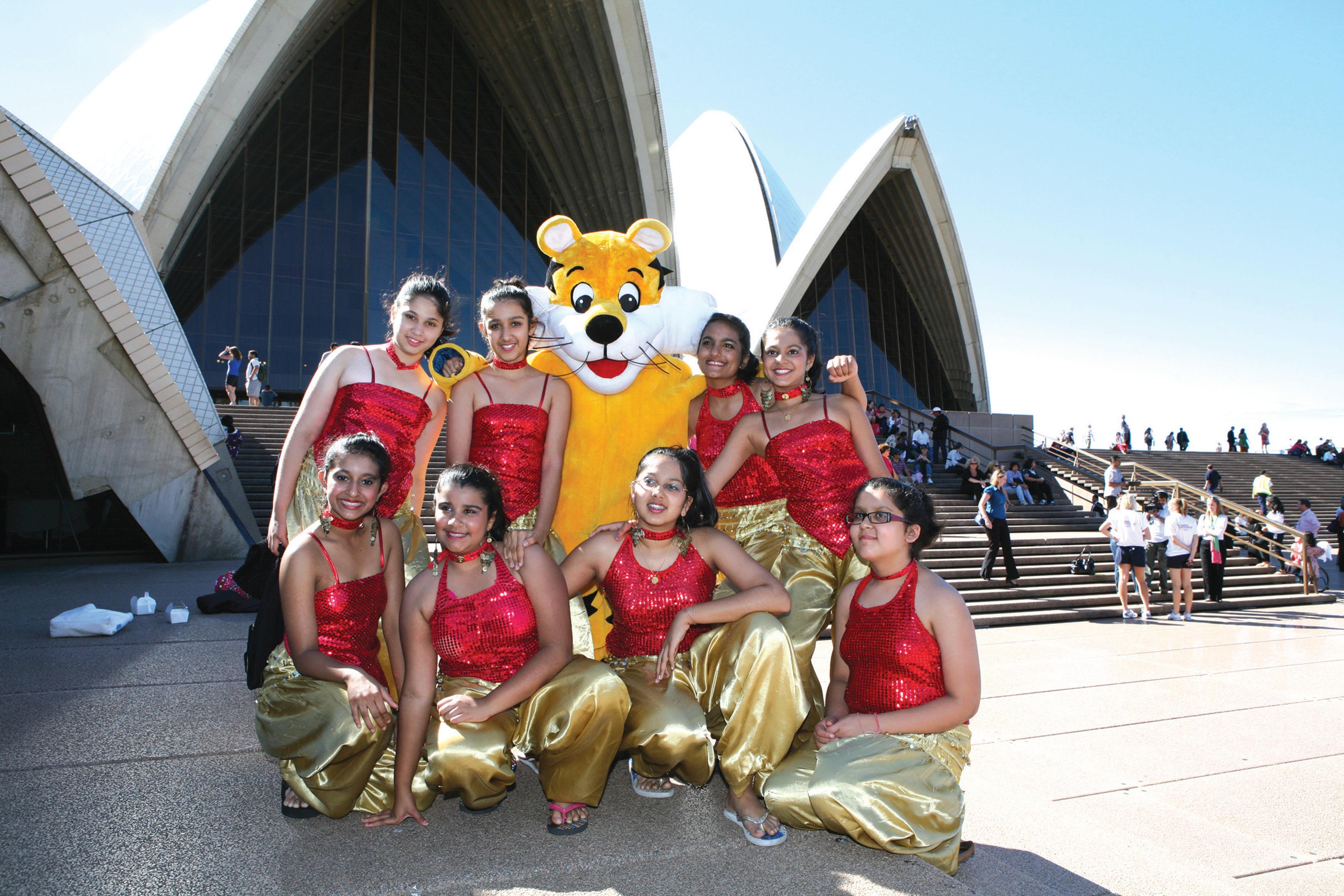
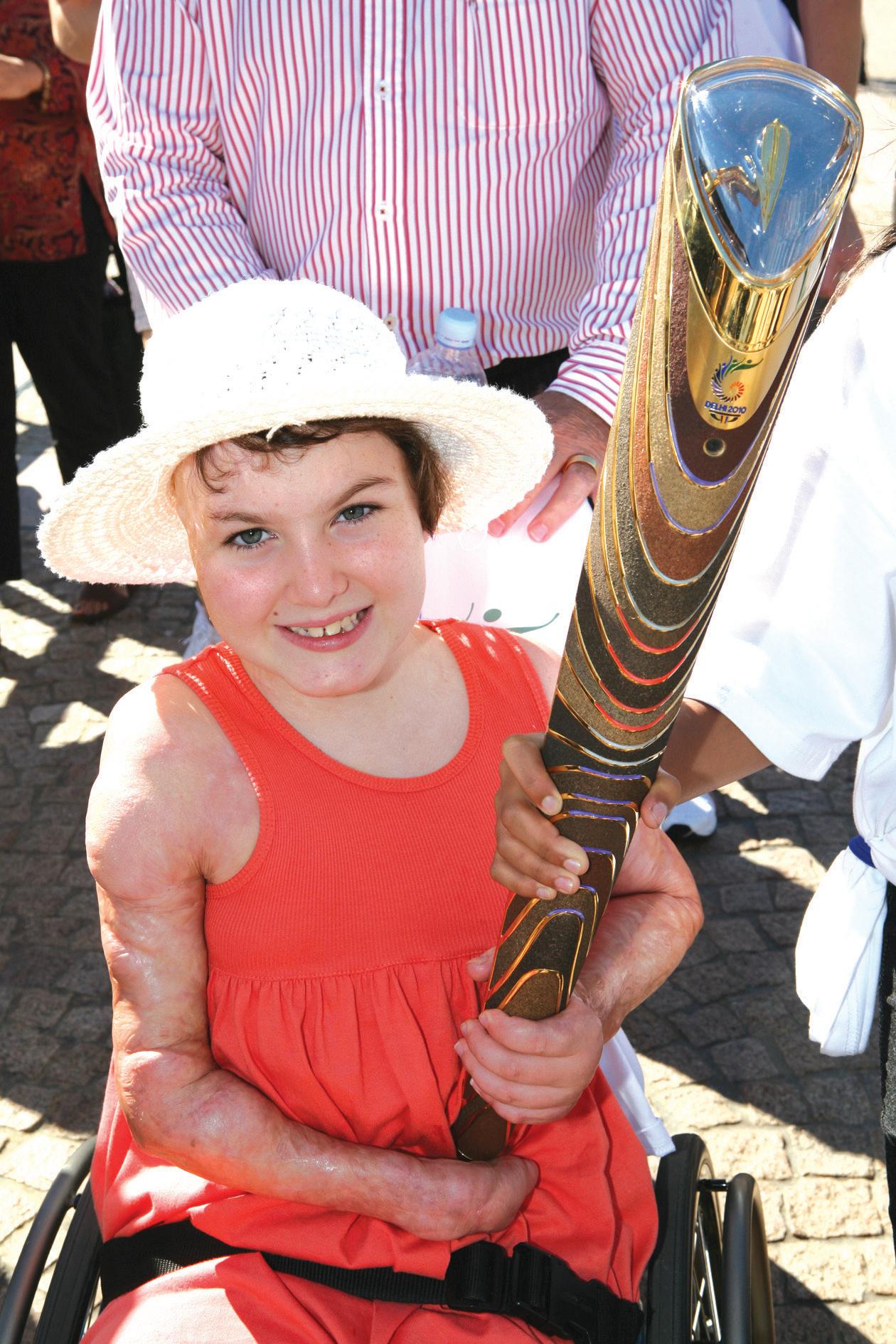
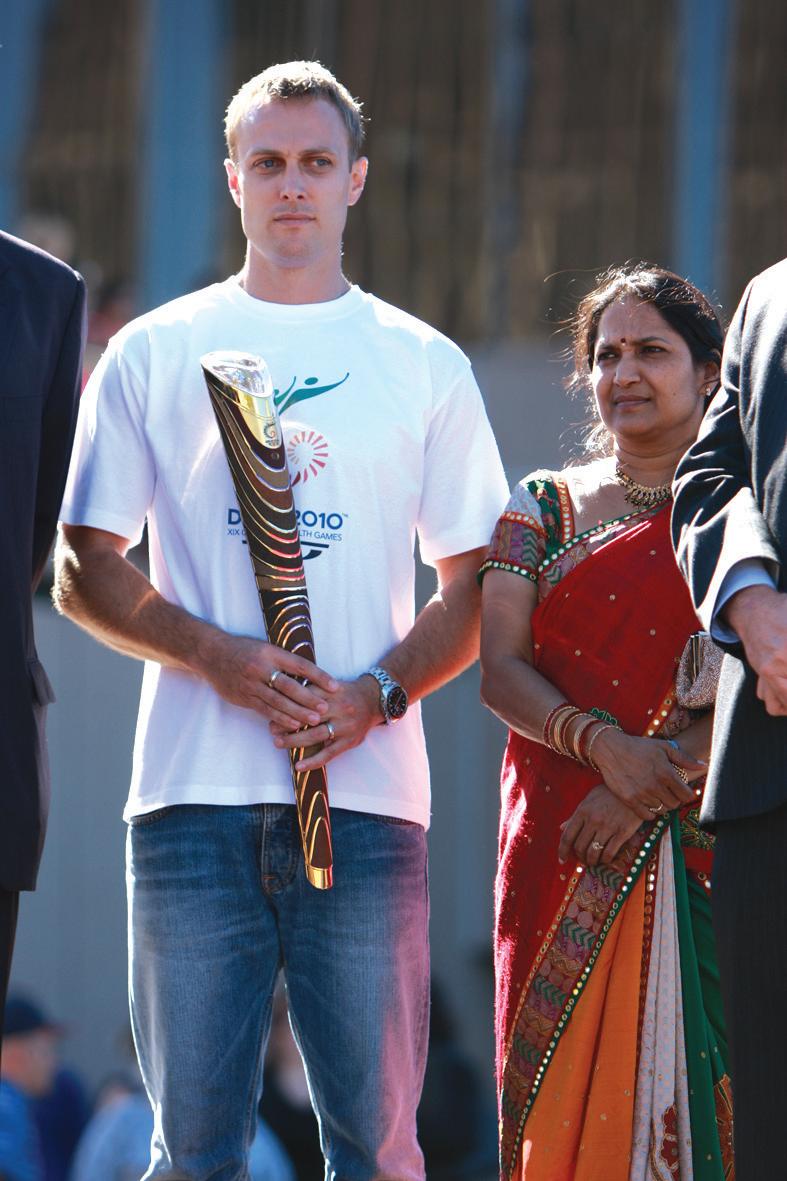

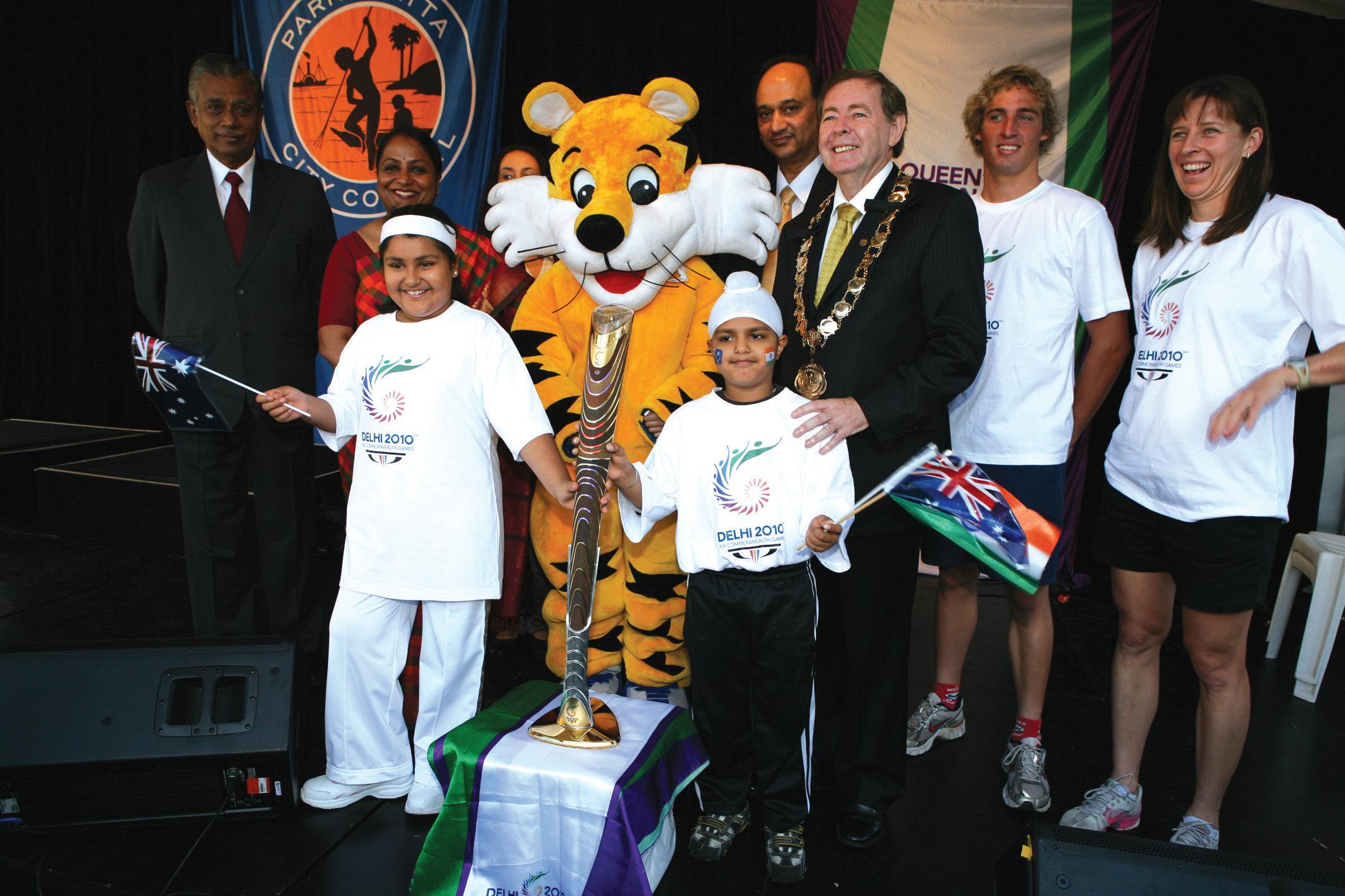
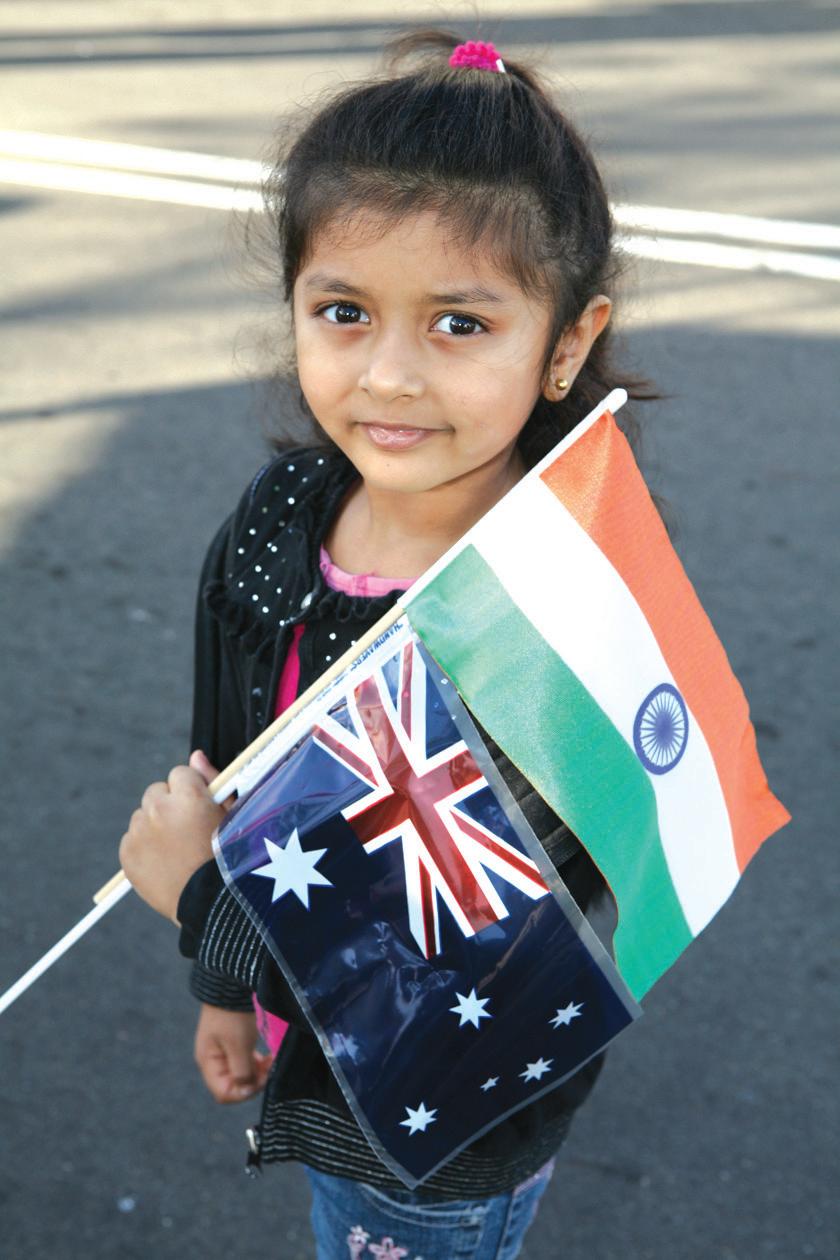
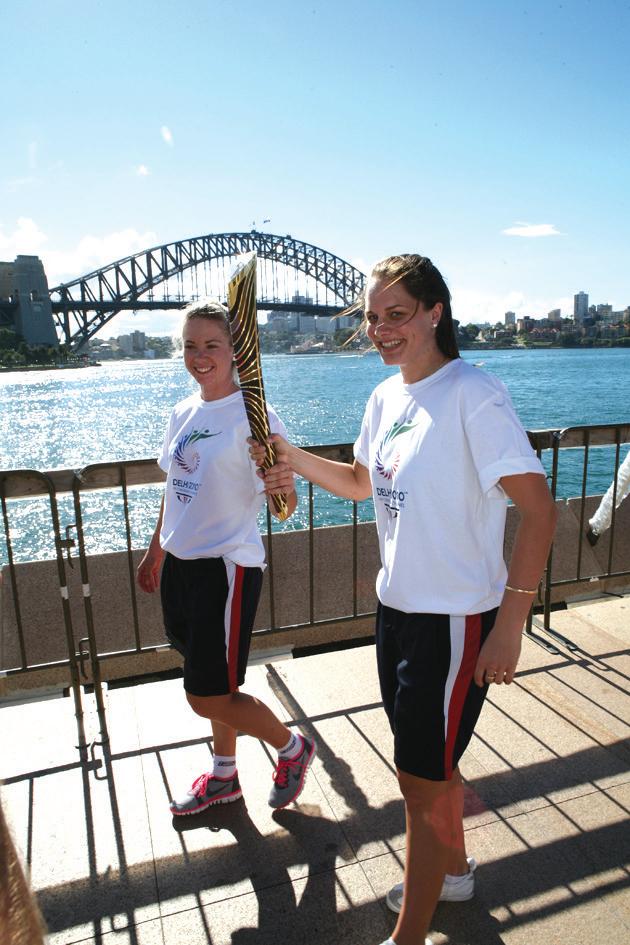
Photos including cover: Madan Lepcha

34 <> APRIL (2) 2010 INDIAN LINK COVERSTORY





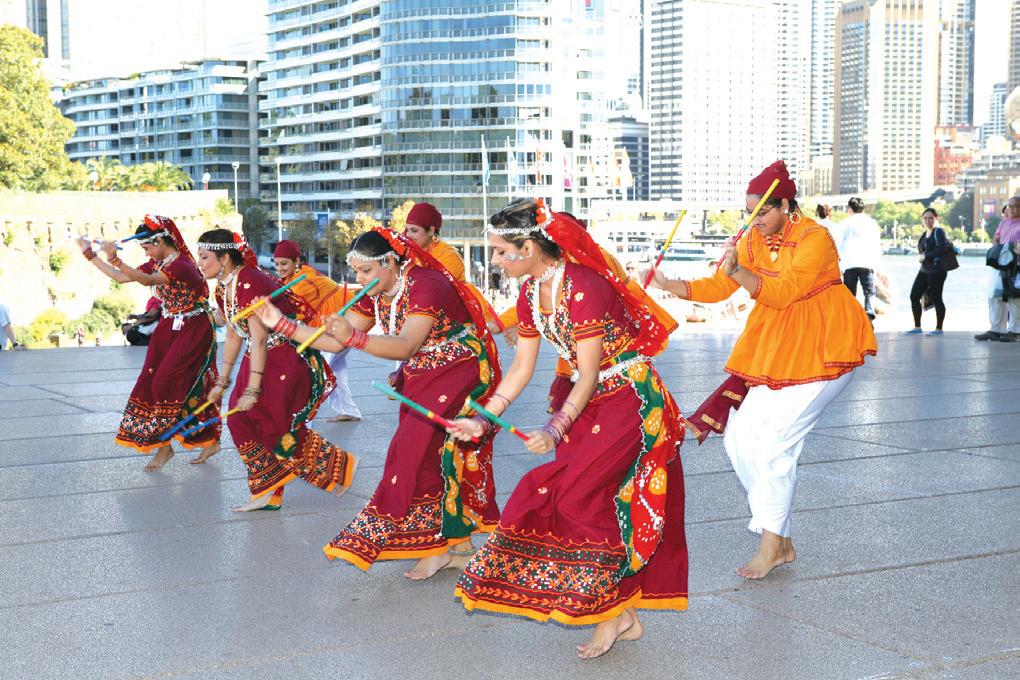

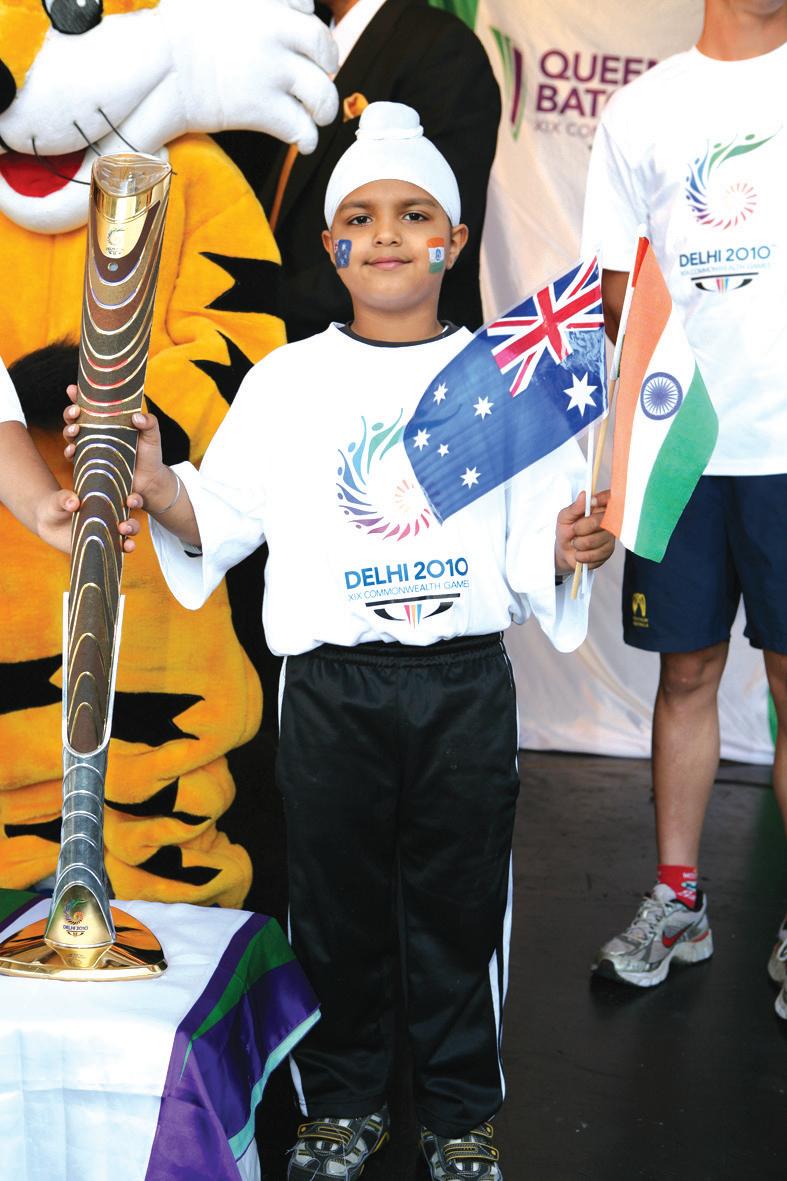
APRIL (2) 2010 <> 35 NATIONAL EDITION www.indianlink.com.au
Tales from Pakistan
The path of the poor is always long and hard, a journey that has few respites
If Man Booker prize-winning The White Tiger gave a glimpse into the hidden lives of the poor and powerless in India, Daniyal Mueenuddin’s In Other Rooms, Other Wonders does the same for Pakistan. And it should not be surprising how similarly the hopeless nature of the poor rings out in both. However, while in The White Tiger, the protagonist does make it into the upper echelons of the rich - albeit by ill means - in Mueenuddin’s world, the poor have no escape. In this touching collection of eight short stories, just as the characters seem to make their way up the ladder, she is cruelly pushed back down. I say ‘she’ because in Pakistan, as in India, a poor woman is twice as vulnerable - and it is the female struggle that Mueenuddin usually concerns his tales with.
I say ‘she’ because in Pakistan, as in India, a poor woman is twice as vulnerable - and it is the female struggle that Mueenuddin usually concerns his tales with
In the title story for instance, Husna a poor, distant relative of the ageing landlord, K K Harouni seeks refuge in his house, first as a servant and later as his mistress. Conniving her way through, she manages to extract some meager material possessions and even respect and fear of the other servants, by manipulating the old man. Upon his death however, she is cruelly thrown out by his three daughters. In the touchingly ironic last scene, it is Rehana, the youngest estranged daughter who taught “some esoteric form of Islamic women’s studies” in Paris, who strikes the cruelest blow. In another tale titled Saleema, the young maidservant in Harouni’s household has an affair with the elderly and respected valet, Rafik. She too appears to be
building up her life and the semblance of family by bearing Rafik’s bastard son. However, soon things spiral heartbreakingly down for Saleema when Rafik’s wife and legitimate son appear on the scene, and then the landlord dies, leaving her back where she started. In a startling reality-check, Hassan the cook tells Saleema
after Harouni’s death, “You came with nothing, you leave with nothing.” He adds, “It’s over. There never was any hope.”
The rich too seem to lead similarly hopeless lives. Harouni must sell away acre after acre of ancestral land to pay for losses from bad business decisions, even as his managers make huge profits through their corrupt ways. One of corrupt managers, Jaglani who has risen up the social and political ladder, is diagnosed with cancer and his incompetent son must bear the humiliations of his father’s colleagues. The beautiful, rich, young Lily - a party animal filling her days with drugs, alcohol and casual sex - wants to change her life by marrying a young, hard-working and caring man, but virtuousness she finds, does not come easy.
My favourite story though, is the last one - A Spoiled Man. Lonely and poor, Rezak lives like a nomad in a wooden cabin that can be dismantled and carried away. Finally, he too finds a well paying job, buys himself a TV and other luxuries and even a wife. However, as in all the other stories, soon enough the wife disappears, Rezak is beaten by the police and dies. For a while, his cabin remains untouched - like a mausoleum, which the memsahib even visits to pay a momentary homage to the humble Rafik. But then, in a poetic, philosophical way, Mueenuddin encapsulates the emptiness of our being in his final paragraph: “Gradually, like falling leaves, the locks were broken off, one person taking the thermos, another the wood tools…The door of the little cabin hung open, the wind and blown rain scoured it clean.”
In Other Rooms, Other Wonders, Daniyal Mueenuddin RRP $23.99
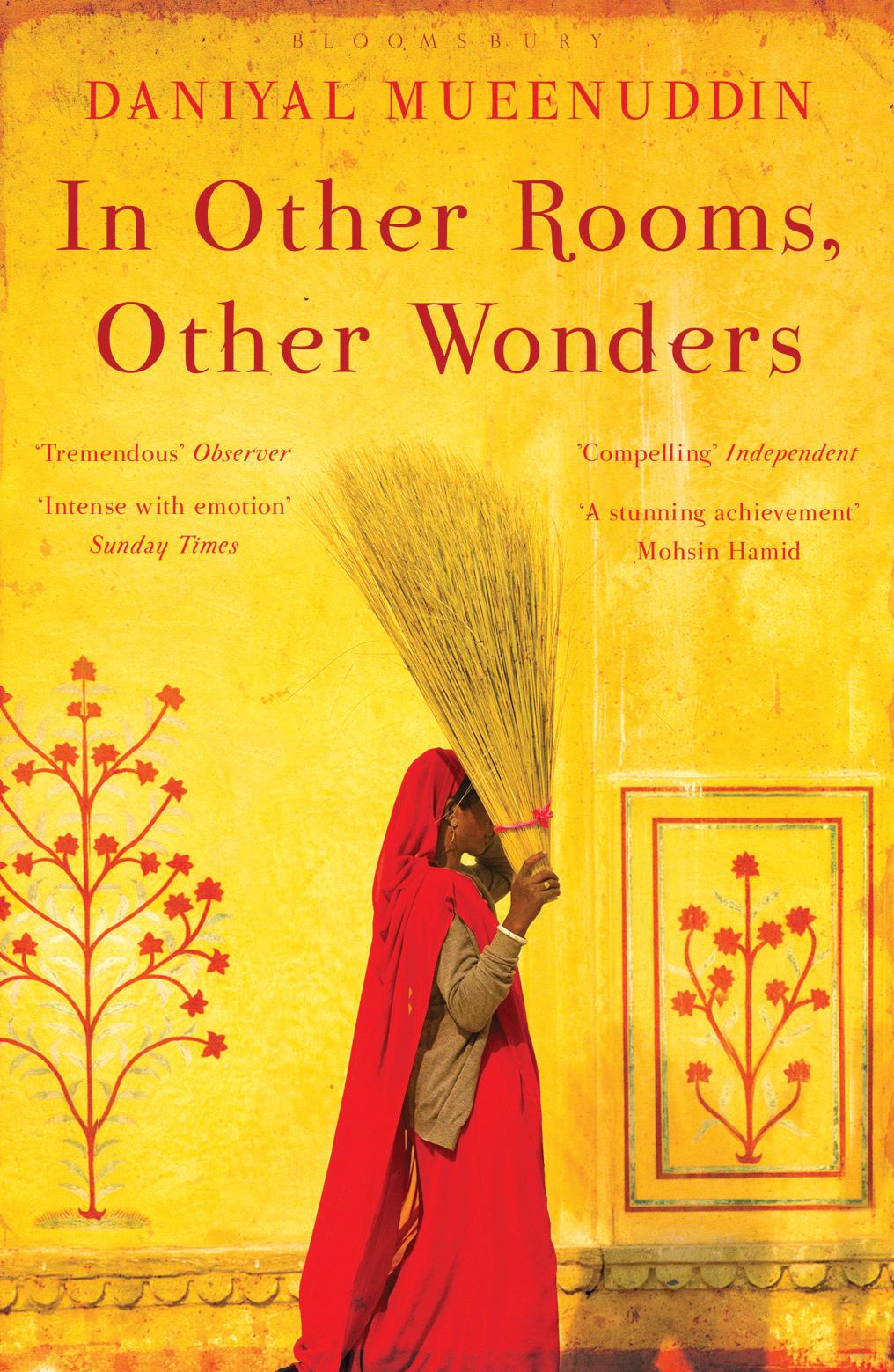
Shivangi Ambani-Gandhi
WORLD FAMOUS INDIAN ASTROLOGER
Pandit Ravindra Shastry Now in Sydney
family
for home & business and he can predict your past ,present and future
If you are suffering from any problem like ... LOVE*MARRAGE*HEALTH
FAMILY PROBLEMS*RELATIONSHIP*HUSBAND AND WIFE PROBLEMS*CHILDRENS PROBLEM
BUSSINESS*FINANCIAL*STOP ALCOHALIC*COURT PROPERTY PROBLEMS*SPRITUAL PROBLEMS
EVIL EFFECTS*BLOCKAGE NEGATIVENESS*MANGALIC*ALL DOSHAS AND ALL PROBLEMS

Every problem have a solution, Pundit can remove all problems by perfoaming prayers and poojas and he gives protection, he does all poojas,chakras,yantras,shanti pooja etc. private and confidential

Pls call for an appointment
(Ph) 02-96131171, (m)0412229372, 0412130600 email. swamy_astrologer@yahoo.com
Address: 97 wigram street, harris park ,nsw 2150 (5mins walk from paramatta station and 3mins walk from harris park station) He can speak: English,Hindi,Tamil,Telugu and Kannada
36 <> APRIL (2) 2010 INDIAN LINK
BOOKS www.indianlink.com.au
in
of astrologers
in reading face(photo),palm,horoscope and vastu
Ravindra born
generations
Expert



APRIL (2) 2010 <> 37 NATIONAL EDITION
Growing odds against migration
BY NOEL G DE SOUZA
NASA’s night space images show almost all of India and the eastern half of China covered by lights from habitations. In Australia, dots of light appear only in the south-eastern belt and the southwest corner of Western Australia, indicating that Australia is a sparsely populated continent.
Australia has 22 million people living on 7.61 million square kilometres, equating to a low density of 2.83 persons per square kilometre, contrasting with the United Kingdom’s density of 254.7 persons per square kilometre and India’s staggering 358.5 persons per square kilometre.
In 2009, the Australian Bureau of Statistics estimated that with increased immigration, Australia could have a population of 42.5 million by 2056, the mid-range estimate being 35.5 million. Immigration is the major contributor (two-thirds) to Australia’s population increase, its current growth rate of 2.1% being higher than that of India and almost double that of the world’s average.

Because for many decades Australia’s natural growth rate kept falling, the country’s population is rapidly ageing. The Intergenerational Report 2010 sub-titled Australia to 2050: Future Challenges points out that there will be slower economic growth and “real GDP per capita growth will slow to 1.5 per cent per annum from 1.9 per cent per annum over the previous 40 years. Ageing and health pressures are projected to result in an increase in total government spending from 22.4 per cent of GDP in 2015–16 to 27.1 per cent of GDP by 2049–50.” Therefore, a larger population is considered as necessary.
The incentives to have babies has helped increase natural growth and thus counter ageing. However, that does not go far enough to increase a working and wealth-creating population which can support the aged and other welfare recipients. The gap is being filled with migrants. Prime Minister Kevin Rudd believes that a larger population will be good for national security, long-term prosperity and for enhancing Australia’s role in the region and the world. But several arguments are being put forward against a larger population policy.
The Environmental Argument: The most persuasive idea against the low population density argument in favour greater migration is that only about ten percent of the continent is inhabitable. By that yardstick the current population density is close to 30 persons per square kilometre.
Bob Brown, leader of the Greens in the

Senate, makes a valid point that we need to investigate the carrying capacity of the land and of its infrastructure before increasing the population to the level of 35 million. Incidentally, the Greens cannot be accused of being anti-migration because they have a generous asylum seeker policy.
The Infrastructure Argument: During the postwar period, most migrants have tended not to move into the vast open spaces in Australia (the so-called “bush”) but rather to crowd into the main cities, particularly Sydney and Melbourne. The main proponent of reduced migration is former New South Wales Premier Bob Carr. Addressing the recently-held Urban Development Institute Conference, he pointed out that 80% of Sydney’s 50,000 yearly population increase came from immigration.
As NSW’s Premier, Carr realised that the States and not the Federal Government bore the costs of urban and health services. Habitually, Federal governments have brought in migrants but left the burden for their welfare to the states, these being mostly New South Wales and Victoria. Almost all the electoral pressure that state governments face for increased jobs, housing, transport and health are traceable to migration to the big cities, wherein the carrying capacity is close to breakingpoint. In 2008-2009, Sydney grew by an astonishing 85,400 persons. Queensland Premier Anna Bligh has called for a national population policy so that Australia’s infrastructure can then be planned.
The Cultural Argument: Dr Bob Birrell, who has been monitoring migration for several decades, makes a very potent cultural argument against high and rapid migration. For Dr Birrell, one would have to wander “deaf, dumb and blind” not to see the “reduced quality-of-life” in our big cities. He recently sounded a warning that bringing in large numbers of non-English migrants puts Australian culture at risk. He also makes the point that Australian “losers” and disadvantaged new migrants living side-byside, as in Victoria, produces an explosive situation, as might have happened in the case of Indian students. This raises the need to give hope to the “losers” through skills training.
Kevin Rudd has neither said that the population should increase either quickly or indiscriminately, but pressure is building for Rudd to drastically reduce the migration intake (by half, says Bob Carr). Business leaders, on the other hand, led by property developers and retail merchants, favour greater population increase as that would augment demand for their products.
Productive migrants can improve Australia’s financial situation. A Minister for Population Growth has now been appointed to study the situation.

38 <> APRIL (2) 2010 INDIAN LINK
New data estimates on future population growth in Australia escalate another round of antimigration arguments
OPINION www.indianlink.com.au
(Bob Carr) pointed out that 80% of Sydney’s 50,000 yearly population increase came from immigration
Through a Glass Darkly
Adolescents nowadays live in a world that is as self-absorbed and materialistic as themselves
 BY GRAHAM SIMS
BY GRAHAM SIMS
Having spent a considerable part of my career as a high school teacher, Principal and Inspector, I thought I “knew” adolescents, at least as they were in those days. Now, as a retired “oldie”, I’m not so sure.
I know that the pressures on them, and the world in which they live, (and in which we also still live), are very different from those in which we grew up, but some recent experiences nag away at me, and give me cause for real concern.
Let me first put my concerns in context.
Teenagers are “supposed” to think their parents and most adults are dinosaurs, who don’t understand them, who arbitrarily inhibit their freedom and independence, who don’t approve of their friends, their lifestyle or dress-sense etc., etc.
Parents are “supposed” to think their teenage children (and/ or other people’s) are immature, irresponsible, untidy, lazy, grumpy, moody, selfish, star struck etc., etc.
However, notwithstanding these time-honoured dichotomies, there has traditionally been some common ground and some societal boundaries, structures and conventions that have, albeit with difficulties, enabled parents to survive the “joys” of having teenagers, and help teenagers through the “joys” of having parents.
And, perhaps most importantly, society survived and even flourished.
Traditionally, parents, as adults, have had power, authority, status, respect ... call it what you will.
Children have been subject to that authority, not only from their parents, but from other authority figures such as teachers, the police, the church ... indeed, not so very long ago, from their elders in general.
Of course, there were tensions and rebelliousness, but, by and large, the process of growing up, however painful for all sides, eventually took its course, with only minor casualties. Serial offenders were called “juvenile delinquents”, and society took them in hand.
It’s all changing! In fact, I fear, it’s already changed!
And, the reasons and ramifications are darker, more complex and more far-reaching than we have wanted to think about.
Some recent experiences have really focused my mind. To be blunt, they worry the life out of me. Let me share them. A few weeks ago, I caught a train into the city, just before the end of the school holidays. At Beecroft, four young people, three girls and a boy, all aged 15-16, sat opposite me and talked, non-stop and at full volume.
Their sole topic was their respective parents, and their vitriol and scorn were frightening. Some examples: “Guess what? I’ve confirmed I can divorce my parents, and I can’t wait. They’re such f***wits!”
“My parents are so stupid. I lie to them all the time and they never catch on. I steal their money. I tell them I’m staying with Anna overnight, while I’m really with Ben!”
“They‘re so gross! They think I am still a virgin!”
“I bought most of my assignments on line. It’s all crap, but nobody cares!”
“My parents want me to be a doctor. I’ll take their money, f*** my way through uni and then piss off overseas”.
There was more, much more, before they got off at Macquarie, a few stations later.
Now, dear readers, I know what you’re thinking, but this was not naive adolescent bragging, it was not said to
impress me or the few other adults in the carriage. Indeed, I doubt they were even aware of our presence.
Nor did I perceive any gentleness, good humour or even tacit acknowledgement of anyone’s feelings other than their own.
It was, to be honest, quite nasty stuff, and it left me with a heavy, sad feeling in my heart.
These were four young Australians, presumably from quite well-off North Shore backgrounds, and, also presumably, on the way to being well (and expensively) educated, by parents who thought they were doing their very best for their kids.
Even the conventional girl-boy sensitivities seemed to be missing. The girls seemed quite at ease in sharing with the boy the “joke” about their parents’ naivety in believing they were still virgins, and all four obviously shared the view that sex was freely offered to and by anyone who felt like it. Morality never got a mention!
Now, I’ve long prided myself on my empathy with young people. Several of my former students remain friends after 40 years. I’ve been M.C. at quite a few of their weddings and, in my postretirement reincarnation as Principal of three schools, I found I still enjoyed an easy rapport with today’s students.

The thought did therefore occur to me to speak to the four young train travellers, politely, to remind them that, however much they scorned them, it was their parents who worked to provide them with a safe and comfortable home, with food, clothing and money to spend on their leisure and pleasure, until they had the education, skills and maturity to support themselves.
I might also have reminded them that adults, including parents, are not without our faults, but that, as young people they were fortunate to be living and growing up in a country such as Australia, where we enjoy relative prosperity, security, stability and opportunities which their counterparts in many other countries can only dream about.
All this I thought of saying ... but I chickened out, and said not a word, and I need to acknowledge why.
Actually, I hope I’m wrong, but these four youngsters seemed so utterly self-absorbed, self-assured and self-centred, and so scornful and dismissive of the adults in their world, that, for the first time in my life, I lacked the confidence to believe that anything I could say to them could possibly make any impact.
Worse still, perhaps, was the nagging thought that they would treat me with the same contempt they all too obviously felt towards their parents ... so I said nothing, and the teacher in me is ashamed.
The three girls, by the way, were
“dinki-di” Aussies (two blondes and a brunette). The boy was clearly of Indian background. I guess the only redeeming feature was that the four of them seemed good mates, and their relationship appeared one of equals.
Why do more and more of today’s young people feel so alienated from, or defiant of, their own elders, and why do so many adult figures, parents, teachers, church leaders, police, counsellors etc. now operate in environments in which “holding the line” or “trying not to make things worse” is about the best we can hope for?
One would need to be deaf, dumb, blind and stupid not to realise that, while gifted, dedicated, individual teachers, schools, parents and community leaders can still make a difference, the behaviour patterns, standards, mindset and expectations of our youth are no longer significantly based on those modelled by the traditional authority figures of responsible adults.
Rather are they now moulded and manipulated by the media, the advertising industry and the communications/entertainment world, which have each identified and targeted young people, indeed, younger and younger people, as a group whom they can influence to buy their products and services.
Of course, there has long been a “children’s market” for clothing, toys, games, entertainment etc., but the consumers with the actual authority and money to purchase such products or services, at their discretion, were parents, as adults.
Children and adolescents were largely limited by their relative lack of buying power and by the conventional authority of their parents to say “No!”
(“That bike is too expensive!” “You don’t need another pair of shoes!” etc.) Somehow, as adults, we have yielded more and more of our authority, and conceded it to children, who, more than ever before, now have power without responsibility, historically a dangerous combination.
In ways which may have begun with subtlety and discretion, but which are now blatantly “in your face”, the huge market for youth, pre-teens and even infants now dominates consumer industries, with the power of the peer group pre-eminent.
In retrospect, it was naive of us adults not to realise that the era of materialism, consumerism and instant gratification which has so impacted on us, would not even more perniciously impact on our young people, who do not have the life skills, judgment or experience to resist peer pressure, to make individual, informed decisions, and at times to say “No”.
Furthermore, the age of communication through technology, with its “virtual reality”, already means that today’s youth communicate with each other and, frighteningly, even with total strangers, in quite different ways from the now limited ways in which they now tend to communicate with their own parents, teachers, community leaders and traditional adult role models. (The power of “Facebook”, “My Space”, texting etc. needs no further comments.)
Their world is increasingly alienated from our world... and it saddens me mightily.
Erik H Erikson, a distinguished Harvard psychologist, wrote in the 1960s that our society, any society, gets the children it deserves. If our children disappoint us, he suggested, it’s because the world we’ve created for them, which, of course, influences their values and aspirations, disappoints us even more.
APRIL (2) 2010 <> 39 NATIONAL EDITION VIEWPOINT www.indianlink.com.au
Why do more and more of today’s young people feel so alienated from, or defiant of, their own elders, and why do so many adult figures, parents, teachers, church leaders, police, counsellors etc. now operate in environments in which “holding the line” or “trying not to make things worse” is about the best we can hope for?
Need Tutoring? Want to improve your Grades? Then Call
Vignan Educational Services
In Collaboration with Master Coaching
Primary Maths, English
O C trial tests , Selective trial tests
School Certificate
HSC Course
English: Std Adv, Ext
Maths: Std, Adv(2U), Ext 1, Ext 2
Chemistry, Physics and Biology
Call: 02 8677 4285
Or visit 131 Hawkesbury Rd Westmead
BEST TIMBER FLOORING

Lic No: 206453C
Specialist in timber flooring & supply installation
• Laminate (variety choices)
• Engineering
• Floating
• Solid pre-finished & Raw
• Warehouse Direct to public
• Satisfaction guarantee
• Free quotes
Showroom: 1/42 Harp Street Belmore NSW 2192
TEL: 02-9787 5630
MOB: 0425-249 877 (Raymond)
Himalaya Spice Centre
Your one-stop spice shop
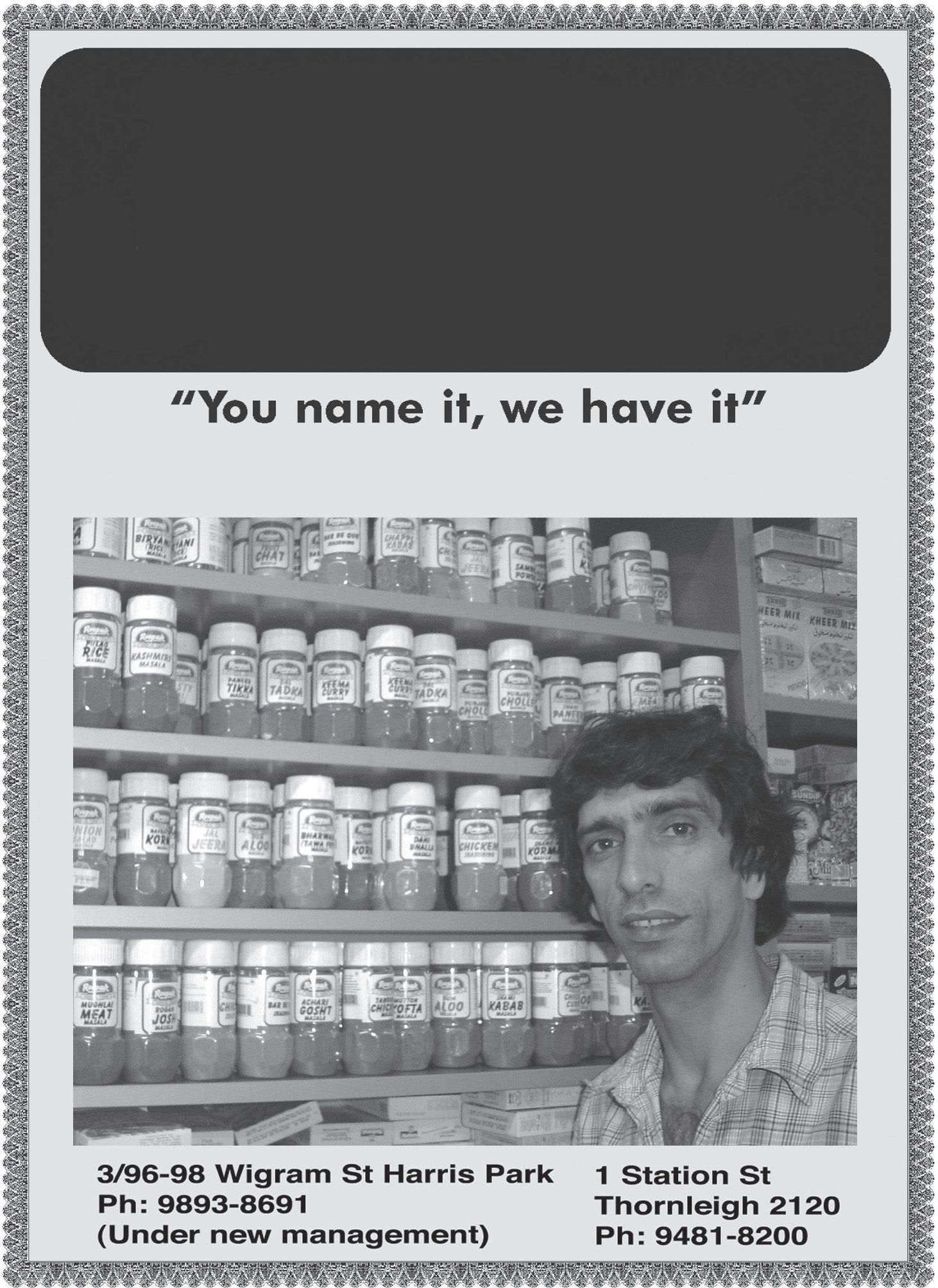
SARVE
SHREE SAI GURU

ASTROLOGICAL MANDIR ASTROLOGER
PANDIT . VIJAYENDRA MAHARAJ (BRAHMACHARYA)
WE WILL CONSIDER YOU BY READING YOUR PALMLFACELHOROSCOPELNUMEROLOGY AND BY OTHER ASTROLOGICAL METHODS WE CAN PREDICT YOUR PAST PRESENT AND FUTURE BASED ON YOUR KARMALFATELPRAKRUTHI
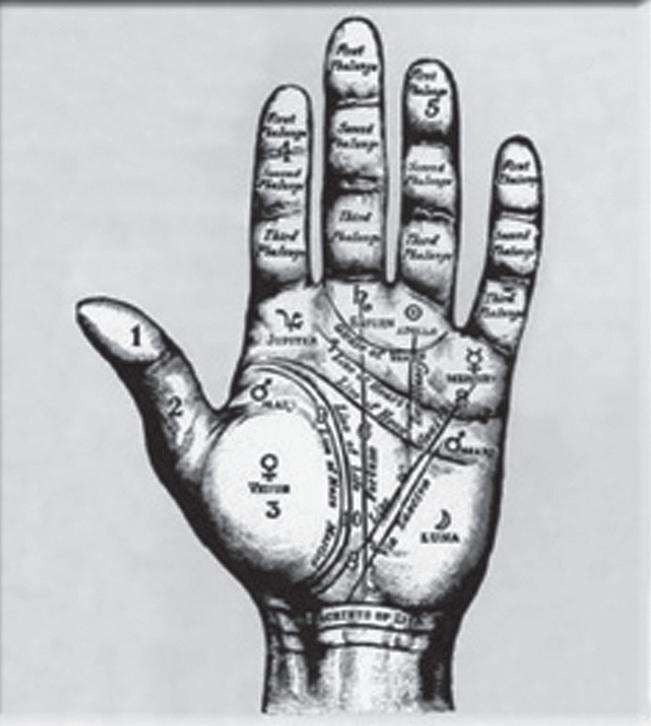
WE CAN SUGGEST AND SOLVE THE PROBLEMS IN FAMILYLLOVELRELATIONSHIPLBUSINESS WEALTHLHEALTHLHUSBAND & WIFE PROBLEMSLMARRIAGE MATTERSLFINANCIAL MATTERS ENEMITYLEDUCATIONLDIVORCELSICKNESSLCHILDRENS PROBLEMS ETC
WELL KNOWN IN SPIRITUAL HEALINGS, DEVI MANTRAS, LAKSHMI POOJAS, SHANTI POOJAS, PANCHABOOTHAS, REMOVE MAGIC AND GIVING PROTECTION
PRIVATE AND CONFIDENTIAL
PLS CALL FOR EARLIER APPOINTMENTS
0422 068 700 L 0435 770 050
Himalayan Supermarket, (Inside), 19 South Street, Granville, NSW 2142 (1 minute from station)
40 <> APRIL (2) 2010 INDIAN LINK
JANA SUKHINO BHAWANTHU
The unnoticed face in Martin Place
A silent observer stands witness to India’s longstanding connection with Australia
Walking to the Intercontinental Hotel in Sydney’s CBD recently, I engraved face representing a Indian lady on the outside wall of the Old Post Office building in Martin’s Place. The face was one of many, sculptured with Roman and Greek features on the wall of this colonial building, in close proximity to the stone statue of Queen Victoria on her throne.
This particular face seemed to gradually glow in the bright morning sun, waiting to be noticed, admired and respected for her contribution to the great nation of Australia. The highly decorated colonial GPO building is now the hub of Australia’s most influential financial many expensive fashion houses and cafes.

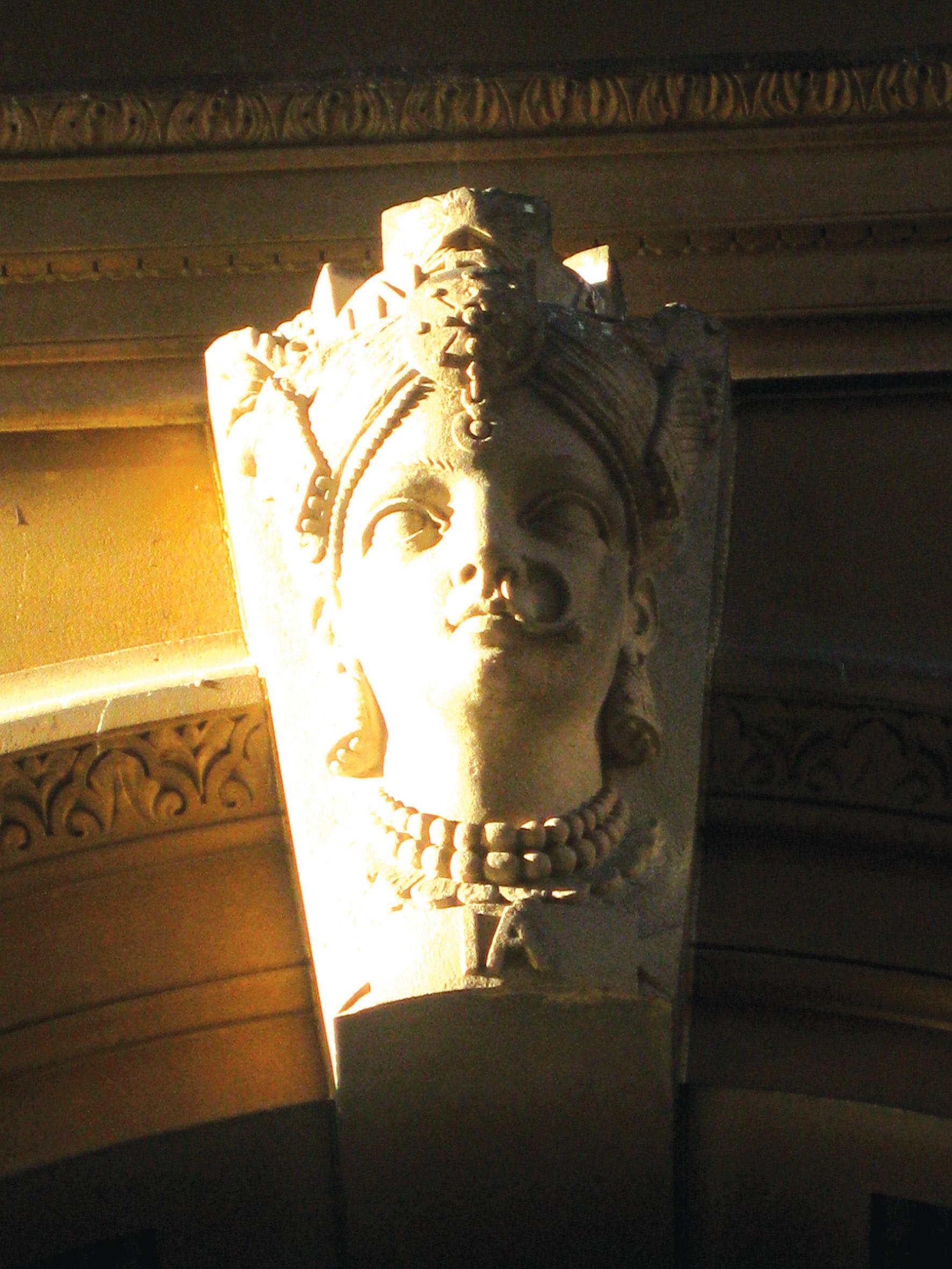
To me, that face represented the closeness of the Indian subcontinent to Australian society. I still remember attending a subdued exhibition in Sydney which highlighted the connection between Australian and India through trade in the 18 settlement in Australia gained momentum. So while tucking into my pommed et glace a al vanille (warm apple tart with vanilla ice cream), I pondered on whether the trade relationship India shared with Australia had any cultural or social impact on society. After all, the Great Silk Road, apart from promoting trade between continents, also brought Buddhism from India to China and East Asia.
The answer is yes. There are two major contributors to Australia, a result of this trading – the first is the impact on the style of Australian housing and the second is the impact on the Australian wool industry.
To me it was like trying to investigate connection between the Aboriginals of Australia to the tribal people of India, as achieved by AK RoyChoudhury of Institute in Kolkata, through his famous paper titled, Genetic Relationship between Indian Tribes and Australian Aboriginals
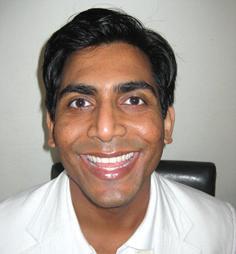
In Australia, Bengal bungalows became evident in the style of housing early 18th century. Bungalow basically means ‘Bengal-style low thatched houses’. In Sydney, there are several well-known bungalows built by Calcutta Merchants, East India company officials and lawyers who settled in this new and young country. The Denbigh bungalow built in 1817 by Charles Hooker (Calcutta Merchant); the Epping Forest bungalow built in 1832 by an ex- East India officer; the Horsely bungalow built in 1832 by Lieutenant George Weston from the East India Company; the Annandale bungalow built in 1813 by Colonel George Johnston are some of these. Several other bungalows were built in the Sydney area by eminent Calcutta lawyers and members of the Australian Association of Bengal, including thirty-three Calcutta investors
who settled in Australia. Many of these bungalows had a unique style with the most magnificent verandas to give them the classic touch that distinguished the Bengal housing style, which had existed in that state for many centuries.
Even the word ‘bungalow’ became the symbol of high society as in 1867, the suburb of Hunter’s Hill in Sydney was graced by The Chalet, a German prefabricated house which was called ‘bungalow’ by William Jack. The ‘Bungalow’ at the Governor’s house, Mount Macedon, was the earlier single storied house on this site. In the 1870s, a house built at Bendigo by GWB Vibert was known as
Speight designed ‘The Bungalow’ at Mildura and in 1892, Alan Walker designed another ‘bungalow’ in Hobart, making the Bengal bungalow style house a common one in Australia. The word ‘veranda’ was associated with bungalow-styled house in the world of wining and fine dining. The second great connection between the nations of Australia and India is in the form of the Bengal sheep. The Australian wool industry is now internationally acclaimed and has made a great social, economical and cultural impact on the country’s culture. However, credit to the Bengal sheep for such social change was kept in the dark. It was long believed that Australian sheep descendants of two rams and four ewes that the King of Spain presented to the Dutch Government. These were later purchased by Kent and Waterhouse of Australia. Kent and Macarthur were pioneers of the Australian merino industry. It is known today that Macarthur bought 60 Bengal ewes and lambs, to which he added two Irish ewes and a young ram to the flock, almost at the beginning of the Australian merino industry. Macarthur then found that his flock of Bengal ewes bore a mixed fleece of hair and wool, after crossing both the Irish and Bengal breeds. This made him decide to breed the ewes for fine wool, and thus was born the great Australian merino wool. And so it was that the Bengal sheep has contributed to the prosperity of this young and vibrant new nation. Historical evidence now indicates that it was actually in 1792 that the Bengal sheep were first imported to Australia from the port of
To me, the beauty of the unnoticed Indian face on the outside wall of GPO building in Martin Place is a face which I feel, should glow with eternal pride and joy
NATIONAL EDITION MAINSTREAM www.indianlink.com.au
INDRANIL HALDER
Australian links to Bengal can be seen not only in the merino sheep but also in the style of housing


42 <> APRIL (2) 2010 INDIAN LINK WANNA GET 7 BANDS IN IELTS Tired of sitting IELTS again and again!!! Was it your 3rd, 4th or 5thattempt, when you gave the exam and were disappointed to see the result?? Don’t waste your precious time and hard earned money on giving IELTS numerous times. For Supervised coaching and Understanding the core requirements of the Test (IELTS): 1 Reading 2 Listening 3 Speaking 4 Writing And to achieve your objective Contact on 0413950760 Indian Restaurant for Sale 50 seater restaurant in western suburb, prime location, near train station, good clientele, regular customer base, not to be missed, asking price 65,000 negotiable Serious buyers only For more information call 0411330920 or 96764880 TAKE AWAY FOR SALE Located in Wentworthville plaza Price $79 k onwards Regular customer base No competition in the plaza Easy to convert to an indian takeaway. Highly populated area Contact Cam 0431 690 186
Govinda Getaway
An idyllic retreat for tucker and tummy
BY PREETI KANNAN

Picture this – a quiet weekend amid lush greenery and pristine forest air, beginning the day with yoga and eating healthy, vegetarian food. This isn’t a getaway for just health buffs or fitness freaks, but for anyone interested in rejuvenation of the body, mind and soul.
Located on the fringes of the Royal National Park in the luscious bushland of Otford, Govinda Valley Spiritual Retreat Centre offers Ayurvedic cooking retreats where people can cook and eat healthy meals, based on ancient Ayurvedic recipes and more importantly, on their body types.

Patrick Stultiens, General Manager and Booking Manager at Govinda Valley says that the retreat, besides teaching people to cook, is combined with yoga sessions that comprise of breathing techniques and asanas

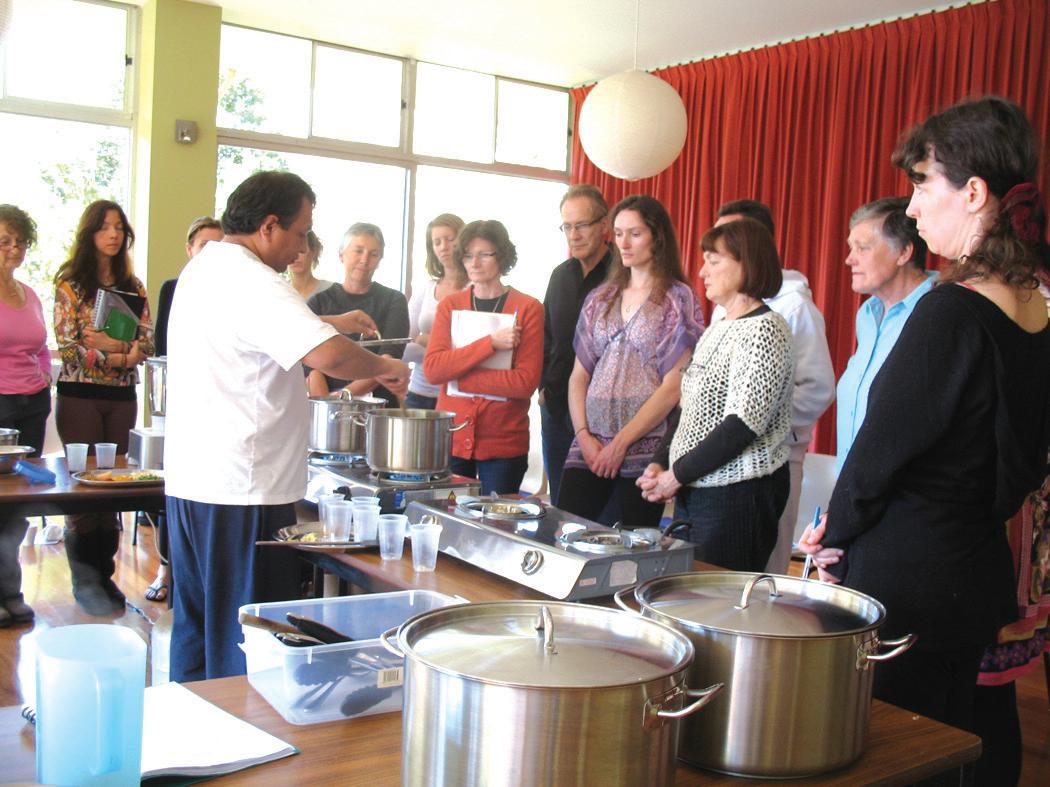
The retreat focuses extensively on eating right and equipping people with the culinary skills required to maintain a healthy diet.
“It is proven that people are looking for appreciation and respect in life. Besides that, health is the second most important thing for people. We initially provide consultation to see what category of body type they fall under and then advise them on what food is best suited for them,” Stultiens told Indian Link
According to Vedic knowledge, the quality and content of a person’s diet are very

significant factors which affect their state of mind, and there are three types of body types – Vatha (from air), Pitta (from fire), Kapha (from earth). Stultiens observes that people who display Vatha characteristics are quick with their speech and movements and need to eat solid foods, while Pitta people burn with a passion and generally eat spicy meals, while they should eat foods that cool them down. Kapha people, on the other hand, do not cope well with change and need stability in their lives.
“The food prepared on the weekend is good for all three body types. However, we also teach them how to make food suitable to their body type. We give them print-outs and advise them to read some books. It is a firm introduction after which people can go back home with the information on what they can eat,” he said, adding that people often have their own interpretation of what is heavy and light food without really knowing what exactly is best for them.
“The important thing at Govinda Valley is that people get to eat food they haven’t tasted before. There is too little knowledge on vegetarian foods. It is possible to eat rich, tasty, healthy food with plenty of variations. The food we make here also comprises of tofu, paneer and cheese,” he added.

While, the retreat comprises of a vegetarian menu, Stultiens says that they understand people who eat non-vegetarian food and advise them accordingly. The menu has been developed to suit people’s activities and lifestyles. Experienced yoga experts and chefs work at the retreat. “The setting of Govinda Valley is very inspiring. Besides the yoga and cooking classes we teach, people get to be
with like-minded people,” he added.
“Cooking with Ayurvedic principles in mind, each meal is prepared from scratch, using fresh, seasonal and unrefined ingredients,” observed Jahnavi Vinden-Clark, head chef at the Govinda Valley Retreat Centre. “A lot of the meals we prepare at Govinda Valley are based on Indian recipes and ingredients, as they are ideally suited to this formula. While traditional ‘health food’ is often regarded as colourless and boring, Indian food is a very sophisticated cuisine, which, traditionally is prepared in a very healthy way. It is also extremely economical, and while it may take a little longer to prepare, the reward is great and the benefits immeasurable,” she said.
“According to Ayurveda, the most important thing is not actually what we eat, but how it is eaten. Ayurveda offers many practical and commonsense guidelines on how best to eat to maintain health. For example, snacking between meals, (adhyaSana in sanskrit) is considered extremely detrimental for one’s health. Ayurveda also teaches the importance of following the body’s natural signs and signals, such as belching after a meal - the stomach’s signal
that it has ingested enough food at a sitting,” she added.
“There is also an understanding of individual body types and the need for our food to be suitable for our individual type. That is, it should be composed of elemental properties that are opposite to what is already present in our bodies. Ayurveda teaches us how to recognise the balance of elements at play in our bodies and in our environment, so that we can always know what food or influence will be most beneficial to us at any given time,” she pointed out.
The four-year old centre, besides hosting corporate/business conferences and seminars, also has weekend retreats for individuals. It provides accommodation facilities for up to 64 guests. There are 4 deluxe 2-person rooms with ensuite bathrooms, 8 rooms hosting 4 guests each and 4 rooms with 6-guest capacity. The Yoga cum Seminar Hall has the capacity to host all retreat guests for conferences and presentations, or up to 60 people performing yoga asanas, plus a huge stage area.
For more information on the next set of retreats, visit www.govindavalley.com.au
APRIL (2) 2010 <> 43 NATIONAL EDITION
HOTSPOT www.indianlink.com.au
Ayurveda teaches us how to recognise the balance of elements at play in our bodies and in our environment
WENTWORTHVILLE AUCTION WIDE FRONTAGE 117 Wentworth Avenue This freshly painted double brick home is set on a large block of 626sqm approx and has a wide frontage of 19.5m, features include 2 good size bedrooms, large lounge, dining area, neat kitchen and bathroom, 2nd toilet in laundry and lock up garage all set within a short walk to trains, shops and schools.

Open For Inspection: Saturday 3:30-4:00pm
Laing & Simmons Wentworthville 9688 4000














Contact Alan Fowler 0413 057 699 or Leanne Ollerenshaw 0414 790 887

44 <> APRIL (2) 2010 INDIAN LINK
RARE FIND 37 Lytton Street When location counts! This solid brick veneer home is set in a quiet street within a 10 minute walk to shops & station features 4 bedrooms with separate lounge, large eat in kitchen, sunroom, ducted air conditioning, alarm, lock up garage, outside utilities room and set on an east facing block. Not to be missed. OPEN FOR INSPECTION: Saturday 2 -2:30pm AUCTION: Saturday 1 May 2010 on site at 2:30pm Laing & Simmons Wentworthville 9688 4000 Contact Alan Fowler 0413 057 699 or Leanne Ollerenshaw 0414 790 887 WENTWORTHVILLE AUCTION GREAT LOCATION 46 Lytton Street This large home features 4-5 large bedrooms, separate large lounge & dining area, modern kitchen, with gas cook top, separate family area, 2 bathrooms, balcony, lock up garage and BBQ in an easy to maintain yard, all in short walking distance to shops, schools & trains. Currently tenanted until 31/8/2010. OPEN FOR INSPECTION: Saturday 2:30-3pm AUCTION: Saturday 1 May 2010 on site at 3pm Laing & Simmons Wentworthville 9688 4000 Contact Leanne Ollerenshaw 0414 790 887 or Alan Fowler 0413 057 699 SOUTH WENTWORTHVILLE AUCTION MOVE STRAIGHT IN! 43 Brewer Crescent This beautifully presented 3 bedroom rendered home features renovated kitchen & bathroom, floor boards throughout, built ins, ceiling fans, internal laundry, lock up garage, outdoor entertaining timber floor decking area and a 632sqm block. Be the First to inspect! Open For Inspection: Saturday 12-12:30pm Auction: Saturday 15 May 2010 on site at 12:30pm Laing & Simmons Wentworthville 9688 4000 Contact Jim Malamas 0433 622 145 or Alycia Haddad 0433 882 145 PENDLE HILL AUCTION WHAT MORE COULD YOU WANT 15 Burra Street This home is situated on the high side of a corner block of approx 708sqm with future opportunity of subdivision subject to council approval. Currently sits a fully renovated 3 bedroom family home including large bedrooms with built in wardrobes, large lounge room with open fire place, ultra modern kitchen with stainless steel appliances, ducted air conditioning, polished floor boards, decked under cover entertaining area and lock up garage. DON’T MISS THIS OPPORTUNITY! OPEN FOR INSPECTION: Saturday 11:30-12pm AUCTION: Saturday 1 May 2010 on site at 12pm Laing & Simmons Wentworthville 9688 4000 Contact Leanne Ollerenshaw 0414 790 887 or Alan Fowler 0413 057 699 WENTWORTHVILLE AUCTION 767SQM BLOCK 52 Darcy Road Only 500 meters to station this well maintained clad home features high ceilings, huge lounge, separate dining, large bedrooms, modern bathroom, sunroom, double garage and potential for redevelopment. Ideal for the investor, first home buyer or developer this home is a rare find & not to be missed! OPEN FOR INSPECTION: Saturday 12:30-1pm AUCTION: Saturday 1 May 2010 on site at 1pm
WENTWORTHVILLE AUCTION
Auction: Saturday 8 May 2010 on site at 4:00pm Laing & Simmons Wentworthville 9688 4000 Contact Leanne Ollerenshaw 0414 790 887 or Alan Fowler 0413 057 699
AUCTION A RARE GEM 1/6-10 Ettalong Road This 3 bedroom villa truly must be inspected as this property will surely please all buyers. Features include great sized bedrooms, built ins, ensuite to main, huge open plan lounge/dining, modern kitchen with granite bench tops, modern bathroom, tiled throughout 2x air conditioners, internal laundry and a massive private courtyard with your own storage shed along with a double remote lock up garage. Close to all locations with minutes walk to trains schools and shops. Open For Inspection: Saturday 3:00-3:30 Auction: Saturday 15 May 2010 on site at 3:30pm Laing & Simmons Wentworthville 9688 4000 Contact Jim Malamas 0433 622 145 or Alycia Haddad 0433 882 145 OPPORTUNITY KNOCKS 3 Gozo Road This 3 bedroom home consists of 3 x built ins, original neat & tidy kitchen & bathroom, separate lounge/dining, great outdoor entertaining area, internal laundry, room for 3-4 cars in garage & located in a quiet location close to schools, shops & transport. Open For Inspection: Saturday 2-2:30pm Auction: Saturday 15 May 2010 on site at 2:30pm Laing & Simmons Wentworthville 9688 4000 Contact Jim Malamas 0433 622 145 or Alycia Haddad 0433 882 145 GUILDFORD $279,950 WENTWORTHVILLE $329,950 WENTWORTHVILLE $389,950 WESTMEAD $394,950 PEMULWUY $569,950 WENTWORTHVILLE $334,950 TOONGABBIE $419,950 GREYSTANES $539,950 2 MINUTES TO STATION Ideally located 2 bedroom unit with ultra modern kitchen with gas cooking, combined lounge/ dining area, extra large balcony, new carpet and freshly painted throughout, built ins in main, situated in a popular well maintained security block ideal for the first home buyer or investor, not to be missed. Laing & Simmons Wentworthville 9688 4000 Contact Alan Fowler 164 STATION STREET Immaculate ground floor unit featuring 2 large bedrooms with built ins, large lounge & dining area with floating floors, modern bathroom, internal laundry with 2nd toilet, modern kitchen with gas cook top, lock up garage and large private decked courtyard excellent for entertaining, all set close & handy to schools, shops & trains. Laing & Simmons Wentworthville 9688 4000 Contact Leanne Ollerenshaw 3 MINUTE WALK TO TRAINS Only 300 meters walk to trains this villa will be snatched up in a blink of an eye. Features include 2 bedrooms with built ins, ensuite to main, large lounge with reverse cycle air conditioning, separate dining, modern kitchen, internal laundry, remote lock up garage, alarm, huge paved courtyard and low strata fees. BE QUICK! Laing & Simmons Wentworthville 9688 4000 Contact Leanne Ollerenshaw LIFESTYLE Situated in the final stage of this prestigious complex is this ultra modern 2 bedroom unit with spacious living areas gorgeous kitchen with gas cooking down lights throughout, air conditioning, vogue décor, video security lock up garage. Enjoy the features of this complex including swimming pool, tennis courts, gymnasium, BBQ area and more, inspection highly recommended. Laing & Simmons Wentworthville 9688 4000 Contact Alan Fowler CLASS & STYLE This 18 month young family home is ready for your family to move in. Set in a family orientated complex accommodating tennis courts, play grounds, walking tracks & a basket ball court this home features 3 large bedrooms, separate office, 3 large living areas and separate formal dining, large modern kitchen with gas cook top, double sized oven, 2 modern bathrooms, balcony with park views, double lock up garage with rear access, ducted air conditioning, excellent yard for entertaining with large timber deck and a beautiful water feature. Laing & Simmons Wentworthville 9688 4000 Contact Leanne Ollerenshaw RARE FIND Currently leased until December 2010 this well maintained villa is ideally located within walking distance to shops, station and transport. Includes 2 spacious bedrooms, air conditioned lounge & dining, modern kitchen with gas cooking, lock up garage and set in a small complex of 8. Wont Last! Laing & Simmons Wentworthville 9688 4000 Contact Alan Fowler LARGE BLOCK Excellent future potential with this one! Set on a large block this 2 bedrooms cottage would suit a first home buyer, investor or developer. Features currently include neat kitchen & bathroom, lounge, dine & lock up garage. Laing & Simmons Wentworthville 9688 4000 Contact Leanne Ollerenshaw The property is presented in excellent condition featuring 4 bedrooms all with built ins, ducted air conditioning through out, automatic shutters, modern bathroom, modern timber kitchen, large tiled dining, separate lounge room, lock up garage converted into potential granny flat, good size yard, covered area with jakoozi great for entertaining all located close to all amenities. Laing & Simmons Wentworthville 9688 4000 Contact Alan Fowler GREYSTANES AUCTION
GREYSTANES
Oilicious
Oils are great to massage into the skin, particularly during a dry winter, notes PRIYA NAIR

Sydney winters can be harsh and can totally dry out your skin even if you moisturize daily. One way to check if your skin is dry is to gently scrape your fingernail on your arm or leg. If a thin white strip is formed, it means your skin is very dry and could do with some oil. There are several good brands of body oils available in the market which can be massaged into the skin half an hour before a bath. They can provide the nourishment the skin needs and also give it a protective layer, so that hot water doesn’t strip the skin off its existing moisture. If you are not too fond of the branded variety of massage oils available or if they are beyond your budget, you can still give yourself a massage with oils off the kitchen shelf. Here are some that can work for you.
Olive oil This ubiquitous oil is available at all supermarkets and can work wonders for dry skin. You don’t need the extra virgin variety – just the usual one will do. Olive oil is rich in antioxidants and also contains vitamin E, both of which give your skin the nourishment it needs. It also helps to maintain the elasticity of the skin. You can even use it for a head massage when mixed with a beaten egg and some yoghurt, as it forms a great pack to nourish the hair and the scalp. Coconut oil An ancient Indian staple, coconut oil is rich in minerals which help in prevent premature ageing. It is also very gentle, so it works for skin rashes and infections too. The only downside to using this oil is that it freezes up in winter and not many people have the time to thaw or heat it till it is once again in liquid form.
Jojoba oil This oil, according to research, has a chemical composition that is similar to the sebum naturally found in our skin so it is one of the most easily absorbed oils and also works for people with sensitive skin. It also has anti-bacterial and antimicrobial qualities so helps in the treatment of rashes, acne, cold sores etc. The downside here is that it can be expensive.
Sesame oil Again, most Indians are familiar with it and some of us use it when making pickles and chutneys. It is known to be rich in vitamin B and E and minerals like calcium and magnesium. Ayurveda lists it as one of the truly beneficial oils. If you are
tired or have had a rough day, a brisk massage with sesame oil can relieve aching muscles. It is also reported to have the qualities of a sunscreen so can prevent tanning and act as a barrier against the sun’s UV rays.
Almond oil Again, an expensive option but it is usually available as part of a blend of oils, so one can opt for this oil. It is a very good emollient and has all the good qualities of almonds. It can help relieve rashes and itchy skin and acts as a lubricant for the joints of the body.
There are other options that are available as cosmetic massage oils which can also work just as well to reduce the extra dryness caused by
Olive oil is rich in antioxidants and also contains vitamin E, both of which give your skin the nourishment it needs
extreme cold. Shea butter, cocoa butter, avocado oil and aloe vera oil are good options for people with very dry skin. Aloe vera oil is also known to relieve sunburn and works well to diminish scars.
Cocoa butter, shea butter and avocado oil are very rich and heavy so they are usually blended with other oils or creams to make them lighter. These are most effective for extra dry areas such as the knees and the elbow joints. They can also be used to relieve cracks on the heels of the feet.
Other options to stay warm and moisturized in winter are:
l Drink hot water regularly throughout the day.
l Avoid fried foods especially if you have high cholesterol or arthritis, as oily food has an adverse effect on the body in very cold weather.
l While cooking, use oils like sesame and mustard oil as these retain heat
Shea butter, cocoa butter, avocado oil and aloe vera oil are good options for people with very dry skin
by nature and provide the body with warmth from within.
l Herbs like ginger, pepper and garlic can be used liberally in winter along with cinnamon and coriander, as these too provide the body with internal heat.
l Avoid alcohol as it can leave you feeling dehydrated and it leads to a loss of body heat by dilating the blood vessels.
You can always enjoy the cold winter air with a cup of hot chocolate, and if you have looked after your skin and hair, stepping out in the cold will not dry your skin further.
APRIL (2) 2010 <> 45 NATIONAL EDITION
BEAUTY www.indianlink.com.au

46 <> APRIL (2) 2010 INDIAN LINK
We beat the best with no less — TAI offers best Airfares and Packages to suite all budgets.
We Specialise in: Competitive airfares to India, Indian Sub-continent, Fiji, Middle East, Asia, Europe, South America, North America & Africa. TAI— offers Special Round the World Fares and packages to suite both individual and group travel. TAI is focused on Tailor made and prepackaged tours.
Are you looking for air tickets from India our partnered offices within India can organize any travel or tours within India and prepaid tickets.
Travel Air International now offers language support,

Languages: English, Hindi, Tamil, Punjabi, Arabic

Head Office Westmead Office
Phone: +61 2 9633-2045
Fax: +61 2 9635-3829
Email: sales@travelairinternational.com
Address: Daher Centre, Level 1, Suite 24, 163 –171 Hawkesbury Rd, Westmead NSW 2145


APRIL (2) 2010 <> 47 NATIONAL EDITION BUSINESSES FOR SALE THINKING OF BUYING OR SELLING BUSINESS CALL SUNNY SINGH ON 0433 239 589 sunny.singh@sbx.com.au www.sbx.com.au We speak your language NO CHARGE TO BUYERS SBX Sydney Business Exchange Thinking of buying or selling any kind of business with any price range? Businesses like Service Stations, Cafes restaurants, Take Away, Supermarkets, Newsagency, Auto repair and many more available. Travel Air International—Branch Liverpool Office Phone: +61 2 9734-9333 Fax: +61 2 9734-9322 Email: sales.liv@travelairinternational.com Address: 50 Railway Street, Liverpool NSW 2170
www.travelairinternational.com Think Travel
TO INDIA while you are visiting family or friends why not getaway and do a private tour. half day tours starting from $35 Per Person Full Day Tours starting from $90 Per Person Call us today take a pick from our range of city tours. Call 9633-2045 and find out today
TOURS
The privilege of ageing
Do you prefer to stay in the comfort of your own home as long as possible? Do you find it difficult to manage at home without help? Do you think you need help with transport for your medical appointments and shopping?
Are you the carer of your ageing parents?
Are you concerned about their well being and still confused or unaware about the services available to meet your parent needs?
These are the concerns we normally share either when we get older or when we take on the responsibility of caring for our ageing parents. In order to preserve their dignity, we often encounter decisions which become very difficult to make in our so-called busy lives. As a matter of fact, ageing in the comfort of your own home with your loved ones is still the most preferred and cherished way of living, rather than spending the rest of your life in a residential facility.
But for some elderly people this may become difficult, without the extra help.
Growing old in Australia comes with different choices and options. To support yourself and your family, there are numerous Aged Care services available in Australia. The Aged Care Assessment Team (ACAT) is a free service for you as an older persona and your family. The ACAT can help you decide which services suits your needs the most.

What is an Aged Care Assessment Team (ACAT)?
ACATs generally consist of a range of health professionals who may include a doctor, nurse, social worker, physiotherapist or occupational therapist.
They assess the care needs of frail older people and assist them in gaining access to the most appropriate types of care.
They provide a detailed assessment of your care needs and information on suitable and possible care options. Your medical, physical, social and psychological needs are all considered by a team member of ACAT. The ACAT will talk to you about what services you may need and what is available in your area.
How to contact ACAT
Referrals for an ACAT assessment can be made by anyone. ACATs cover all of Australia and are based in hospitals or in the local community. Information about the ACAT closest to you is available from the Commonwealth Carelink Centres on 1800 052 222. You may wish to see your own doctor first and they will also be able to put you in contact with the local ACAT.
How can an ACAT help you?
ACAT members can help you to get a
residential care or a Community Aged Care Package (CACP), refer you to other community care services, and/or help you arrange respite care in a residential facility. The ACAT will discuss the services you may need and what is available in your area. The Aged Care Assessment Team (ACAT) is responsible for the assessment and approval of a range of government subsidized care services.
You will need an ACAT assessment for:
l Community Aged Care Packages (CACPs),
l Extended Aged Care at Home (EACH).
l Extended Aged Care at Home Dementia (EACHD)
l Entry into residential aged care either high level(nursing home) care or low level (hostel) care
l Transition Care program
How does an ACAT assess the type of care needed?
To work out if you’re eligible for certain subsidized aged care services, you will need to contact your local Aged Care Assessment Team. The ACAT will prioritize any referrals by the most urgent, as all ACATs have a waiting list of client referrals that need attending. The ACATs are very experienced in prioritizing clients and will utilize an onsite interpreter if required, at the assessment.
The ACAT will then phone you to make an appointment arranging for a visit to your home for the assessment. During the assessment the ACAT member will ask you a series of health-related questions in order to find the best care option for your particular situation. With your approval, the ACAT will also contact your local doctor to get more information on your medical history to help with the assessment process. The ACAT’s role is to discuss your situation, and help you make the best choices based on your individual needs and the services available.
After the assessment the ACAT can recommend services that are most appropriate to meet your needs and will pass on your details to an appropriate Aged Care provider. The ACAT will provide you with a copy of the assessment for your records. It is important to remember that the final decision to accept the ACATs recommendation for an Aged Care service depends on you.
Ask as many questions as possible during your assessment with the ACAT and if possible, have an advocate present who can speak on your behalf. All Aged care services have a ‘Complaints resolution Scheme’ that is assessable to all clients if they are not satisfied with the service.
involved?
Aged Care Assessment Teams are government funded and is a FREE service to Australian residents.
Where do I get more information?
Call the Aged Care Information Line on 1800 500 853 OR the Commonwealth Respite & Carelink Centre on 1800 052 222. Calls to 1800 numbers are generally free to the caller when made from a land line.
This information is provided on behalf of the CPP, undertaken by Sydney Multicultural Community Services.
initiative of the Australian government Department of Health and Ageing. Sydney Multicultural Community services are organizing an information session about the role of the Aged Care Assessment Team and Community Care for Fijian/Indian (Hindi) communities. We would like to invite you and also the Fijian/Indian communities to participate in this information session. For more information please call Community Partners Program (CPP) officer Maryam on 02 96633922 or via email maryamm@sydneymcs.org.au
The above information is adapted from The Department of Health and Ageing website (Information sheet no.1) and www.agedcareaustralia. gov.au
48 <> APRIL (2) 2010 INDIAN LINK LIFESTYLE www.indianlink.com.au
Ageing in the comfort of your own home with your loved ones is still the most preferred and cherished way of living
The elderly have a range of services available to make their lives easier, says MARYAM MAGHSOODI




50 <> APRIL (2) 2010 INDIAN LINK
Abuse remains a two way street
Finding the right balance in a household beset by conflicting emotions can be a traumatic experience
BY RANI JHALA
After reading so much about how daughters-in-law abuse their in-laws, I have decided to put my story forward. I married when I was 26 and came to live with my husband in Melbourne. My husband’s family included his parents and an older sister, married and living in another city.
I had lived in Mumbai, a contemporary cosmopolitan city, ultra-modern in both fashion and lifestyle. Veejay had said he did not want a traditional subservient wife. He wanted one who would socialise with his friends, and one who would be an asset to his career. A shy, blushing bride was not his ideal mate. I became his choice. I had been a model and content with my life. But after meeting Veejay, I realised that a successful career was not everything. Love, partnership and marriage had a place too.
Veejay was a pilot and before our wedding I remember worrying about having to stay alone while he travelled overseas, which he said was quite often. So when I heard that we would be staying with his parents, I was relieved thinking it would be easier to adjust to a new country if I was with family.
As a husband, I could not fault Veejay. He was attentive, caring and made it very obvious that he was very proud of his bride and happy with his marriage. But his ideals and those of his family did not match and I was often caught in the middle of their conflicts. What could I answer when each asked, “And what do you think?” It did not matter who was right, for someone, I was always wrong.

And then other little things started happening. Every dish I cooked was ‘not quite right’. The way I washed the utensils was incorrect, the way I hung the laundry was unacceptable and the list continued on an endless scroll, which was related to anyone and everyone who was prepared to listen. After a while I realised that two ladies could not run one kitchen, two women cannot rule one home. And so I began to look for outside employment.
It did not take me long to find my first job as a model. The money was good and it was work I was used to doing, so it was easy to pick up where I had left off. Luckily I got all my shoots in Melbourne itself. But the
hours were long and unpredictable. Soon after starting the job, my mother-in-law began ringing me every day. I thought it was out of concern until she started questioning my colleagues about my movements. The women were just questioned, but the men were literally grilled. And my husband was told of every call that I received. Veejay would laugh it off, but I could see the seeds of doubt and insecurity taking root. Tired of it all one day I offered to leave work, but that too, was the wrong decision to them.

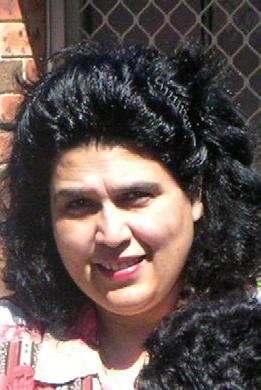
Coping with one woman having a go at me on a daily basis was not a problem, but then came her daughter. And I knew then that the rollercoaster ride that I had been enduring had only just begun.

I was made to wear traditional attire and stand at the door with the traditional welcome, and naturally, I expected some semblance of the same tradition in return. Instead, in walked a cigarette clutching, low hip clinging, jean clad woman with puffed up bleached haired that made her look like a model from some space magazine. And her first words to me were, ‘Oh lord, don’t tell me you still wear all that. That is so archaic now!” No bowing of the head. No ‘welcome to the family’. She did none of the things, which was expected of me. That evening they all sat in the lounge room ‘catching up’, while I offered to clear up. The following evening it was the same again. On the third day I was told that as she worked so hard through the year and as this was her only break, they did not expect her to help out. Nor were any of the restrictions that applied to me applicable to her. They would go through my
belongings, open my mail and even help themselves to whatever they wanted.
Veejay noticed everything but his comments to me were always, ‘It won’t be long, just ride it through.’ I tried, I truly tried, but it all got too much. And then just when I was literally ready to pull my hair from their roots, the bomb dropped. That my sister-in-law’s trip was not a brief holiday, she had actually separated and had decided to move back to Melbourne. Permanently, into her parents’ home. Permanently, into our lives.
No longer able to bear it anymore, I told Veejay that we needed to move out. He refused. He said his parents needed him. I threatened to leave, only to be told that my visa would be cancelled if I left him. That night at dinner no one talked to me, not even Veejay. Later as I was leaving the room Veejay’s mother turned to me and said, ‘This is my home, do not cause trouble between a brother and sister. If you want to do that, you can go back and live in your father’s home.” Veejay said nothing.
Two days later without telling anyone, I flew out of Australia. The divorce was settled quickly on grounds of ‘irrevocable differences’. I learnt later that he had remarried. I hope she has better luck than I did.
It seems we humans cannot find a balance, and abuse will always remain a two-way street. In one lane, you are abused for being a mother, in the other, you are abused for being a wife.
I have settled back in Mumbai, with everything the way it was before I got married. There is but one exception. The day I left Australia I gave back to him his visa, and I brought back with me his child.
APRIL (2) 2010 <> 51 NATIONAL EDITION
FICTION www.indianlink.com.au
After a while I realised that two ladies could not run one kitchen, two women cannot rule one home



52 <> APRIL (2) 2010 INDIAN LINK
Pizza anyone?
The world’s most expensive pizza is valued at US $178. It is sold at Gordon Ramsay’s Maze Restaurant in London. It has onion puree, white truffle paste, fontina cheese, baby mozzarella, pancetta, cep mushrooms and wild mizuna lettuce, and fresh shavings of a rare Italian white truffle.
National Pizza Month is October.

The biggest pizza ever made was baked in Norwood, South Africa in 1990. It was a massive 100 feet across.
The largest pizza delivery ever took place on June 6 2006. Papa John’s pizza company took 13,500 pizzas to the NASSCO Shipyard in San Diego, California, USA.
In the 16th century, Maria Carolina, the Queen of Naples eventually convinced her husband, King Ferdinand IV, to allow the peasant dish pizza to actually be made in the royal oven.

In 1889 Raffaele Esposito, a famous pizza chef created a pizza for Queen Margherita with tomato, basil and cheese, to resemble the Italian flag. Today it is the most popular kids’ pizza – we know it as the margherita pizza.

Laugh out loud
John: I’ve got a problem. I live with my three brothers. One brother has six dogs, one has five cats and one has two goats. The smell is killing me!
Jack: Why don’t you open the windows?
John: What, and lose all my pigeons?
Nicole: My mum has the worst memory in the world Jennifer: She forgets everything?
Nicole: No, she remembers everything.
Q: What did one tonsil say to the other?
A: “Get dressed. The doctor is taking us out tonight”
Q: Why did the traffic light go red when it changed?
A: Well, so would you if you changed in the middle of the street.
Q: What did one flea say to another as they were coming out of the theatre?
A: “Shall we walk or take a dog?”
Q: How long is the song Soap, soap, soap, soap, soap?

A: About 5 bars.
Why elders pinch the cheeks of children

They want us to have red cheeks without having to use make-up.
It’s a way of testing their finger strength.
It’s their way of telling us they find us really irritating.
how much weight we have lost/ gained.
They want to check if we have brushed our teeth well.
ML and DL
Foto Corner
Fruitarian One who lives on fruit DL Dilemma A situation where one is faced with two choices, both favourable or both unfavourable.
Devna works hard to paint her room, but Manan prefers to muck around – and does not really paint, as you can see.

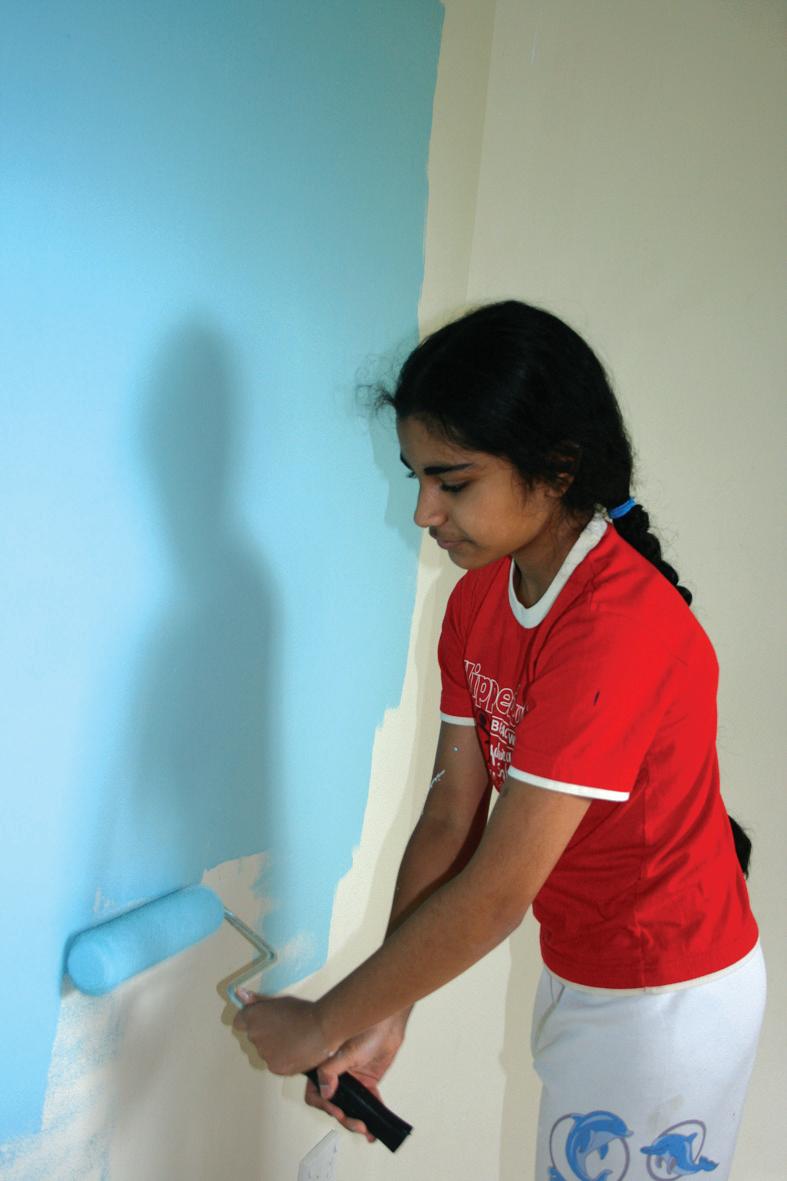
APRIL (2) 2010 <> 53 NATIONAL EDITION
ML
DL
ML
I learnt a new word
KIDS www.indianlink.com.au

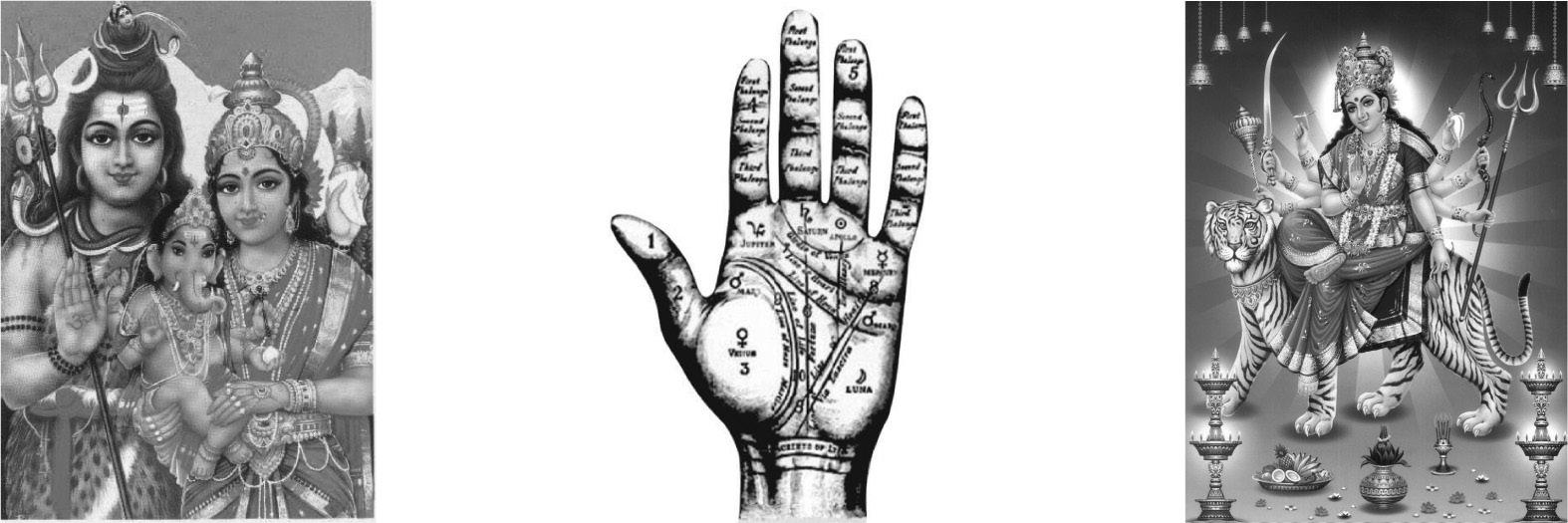


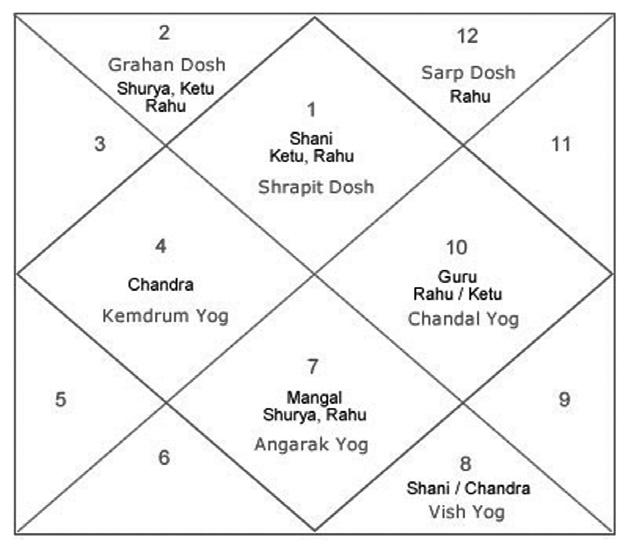

54 <> APRIL (2) 2010 INDIAN LINK SHIVA SHAKTHI ASTROLOGY CENTRE
Indian Pandit: Venkatesh Swamyji From India to solve all your problems Believing is first Step of life SwamiJi is Expert in Readings of Palm, Face, Horoscope and Thumb Impression (specialist) and know your Past, Present & Future. Are you suffering from any kind of Problems like Love, Marriage, Relationship, Health, Business, Job, Career, Divorce, Education and any other problem? SPECIALIST IN REMOVING MAGIC AND GIVING PROTECTIONS Swamiji will perform Poojas for many Problems Privacy & Confidentiality Povided CALL FOR AN APPOINTMENT M: 0435 930 985 INSIDE THE SHOP -WINMANI CONVENIENCE STORE, 136 MERRYLANDS ROAD, MERRYLANDS NSW 2160
Famous
Commercially packaged cricket
The DLF-IPL carnival is a bonanza of advertising, which seems to undermine the sport, says MALLI IYER
The game may be mutilated beyond recognition, to the chagrin of the purists.
The pulling power of IPL is undeniable. The organizers have left nothing to chance in attracting cricket lovers all over the world by providing freeto-air live telecast and live/recorded streaming of all matches on the ‘Youtube’ website. This is an unparalleled coup for its CEO, Lalit Modi as he has managed to rope in International Cricket Council (ICC) which blesses it legitimacy and ensures that it is recognized by Cricket Boards and Administrations throughout the cricketing world. This is far superior to the rebel one-day competition that was created by Kerry Packer in the ‘70s which struggled for recognition and was dubbed ‘pajama cricket’ by purists. Modi has made IPL the most successful sports marketing event with sponsorships from top Bollywood stars, Indian business tycoons and groups (like Ambani/V. Mallya/Sahara Group/Tata Group), and has converted IPL into a money spinning exercise. He even tempted political parties like the Shiv Sena to enter the fray as they attempted to upstage the Australian cricket stars participating in the event – using the attacks on Indian students in Australia as an excuse.
Thus IPL 3 has created history of sorts in the annals of sport by having a huge turnover (well over US$ 1 billion), but it has created a challenge for the TV rating wizards by altering the viewing patterns of its audiences. Reliable sources indicate that all the creators of popular soap operas are rethinking their prime time telecast as they now have competition from IPL, which has won the TV ratings battle by a mile. Our ‘cricket mad’ nation has already chosen not to watch soap operas when the IPL is on. The hotel/ restaurant industry has also shown their deference to IPL by creating fancy names for their dishes using cricket analogy, e.g., Fine Leg (chicken), Long On
(soups) and Hat Trick (a 3-in-1 meal deal).
Consider this – the revolutionising of sports marketing by IPL has meant that every facet of the game is not free from advertising – cricket players and umpires are walking, talking billboards (players have up to 9 different advertising logos on their clothing and their cricketing gear), the boundary boards, the turf, the cricket stumps, spectator stands, the sight screens have colourful messages and product virtues screaming at the viewers. Then there are fancily clad motorised vehicles (shaped like well known beverage bottles) carrying soft drinks. All of this is in addition to sponsored breaks for TV commercials, advertisements that flash on to the screens in between overs.
However, the sensibility of cricket lovers is being destroyed by this commercial overkill. Admittedly Indian consumers have been exposed to this bombardment of commercials only in the last 10-15 years and have thus been a fair dinkum audience for the booming Indian consumer goods industry. TV viewers are sure to clamour for a commercial-free software that saves them from this cacophony of noisy advertisement.
Cricket as a game is already relegated to the back burner, since sixes hit by batsmen are now termed “DLF maximum”, a classic catch is a “Karbonnkamaal catch”. The Maxx Mobile sponsored “strategic time outs” are cricket- free for 10 minutes, whilst meaningless comments and guesswork on the progress of the match are forced on spectators. A game of cricket played between Rajasthan Royals and Kings XI Punjab is dubbed as a battle of “Bollywood queens” (referring to Shilpa Shetty and Preity Zinta who are owners of either team) and the camera zeroes in on the stars, whereupon the focus on cricket is much less. Cheerleaders are a new dimension in the cricket field – they are scantily clad, predominantly western imports who go through stereotypical
movements supposedly to provide titillation to the spectators. Let’s face it, the business of cricket is more a business, and less cricket. In a ‘cricket mad’ nation like India, it will serve to create a plethora of noveau riche entrepreneurs who are waiting to cash in on the bonanza.
IPL has also announced two new franchises for the next edition (IPL4) from Pune and Kochi, who have bid $370 million and $333 million respectively, to add to the carnival. This rivals the business investment in football teams in England and Europe, and baseball teams in the USA. Since cricket is a monopoly market for sport, it is anyone’s guess why these investors are willing to stake vast amounts of cash that do not necessarily return a profit for 3 to 4 years, but build brand loyalty and goodwill that will create a fortune for them eventually. This also serves to add a new string to the bow of several industrialists who are proud owners of an IPL franchise. It might help a whole lot of upcoming entrepreneurs to keep up with the Joneses, but they should be willing to underwrite the losses caused by the ups and downs of the sport.
IPL can be equated to a ‘fast food diet’ for cricket audiences although it feeds only highly paid professional cricket players, some of whom have dubious credentials to command the high bids made to buy them. Whether this new-found approach is going to unearth fresh talent is debatable. IPL may fill the coffers of the cricketing administrations who are sure to succumb to the demands of the audience and alter the rules of the game (the boundaries have already been shortened to promote the six-hitting skills of all the IPL teams). It will soon be like a Bollywood masala film which suits the whims and fancies of the spectators that fill the stadia. The game may be mutilated beyond recognition, to the chagrin of the purists.

SPORT www.indianlink.com.au
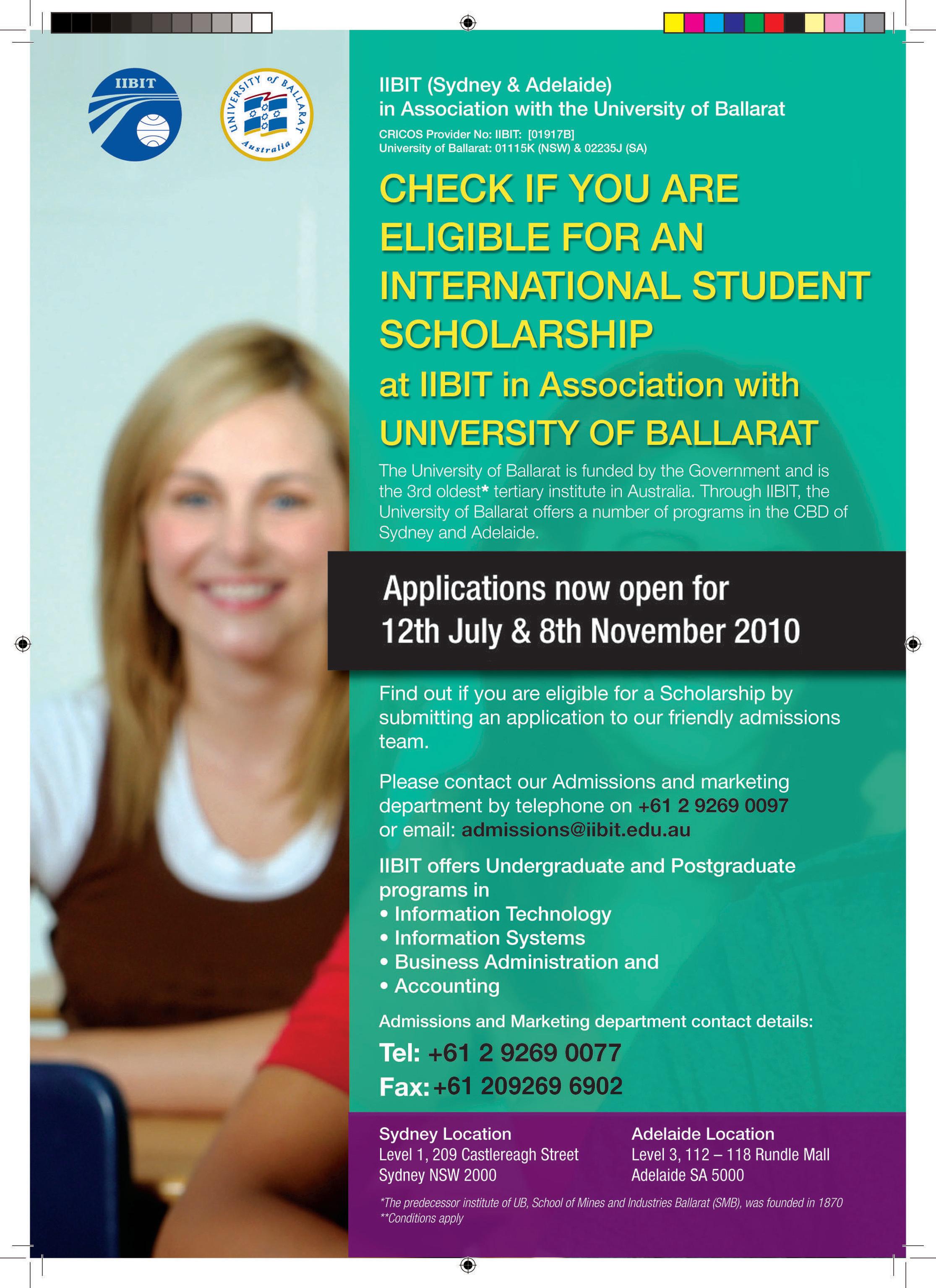
Soup Season
Soup is a great food to help you keep warm and cozy this winter, by CANDICE HENRIQUES

It’s that time of the year. Time to bring out winter clothing and wrap up as the days get shorter and cooler. Yes, its time to treat your tastebuds and indulge in warm and succulent soups, guaranteed to chase away those pre-winter blues.
Chicken Manchow Soup
50gms chicken (for stock)
20gms chopped chillies, ginger, garlic, celery
11/2 cup cabbage, carrots, French beans
Handful spring onion greens
1 egg
1 tbsp soya sauce
1 tbsp chilli sauce
2 tbsp cornflour
1 bay leaf
Salt and pepper to taste
MSG (opt)
For the stock: Boil 2 litres water in a vessel, add chicken bits (which can be used to shred and put in the soup). Add salt and pepper, bay leaf and boil for 20 to 30 minutes. Strain and keep aside. Shred the chicken bits to use in the soup. You can also use ready chicken stock, available off the shelf.
For the soup: Heat 1 tbsp oil in a pan, add celery, ginger, garlic, 3 green chillies chopped very fine, add cabbage, carrots, French beans chopped fine. Add 2 tbsp chilli sauce, 1 tsp white pepper powder, 2 tbsp soya sauce. Add the drained stock, cook on high flame for a few minutes, add cornflour and water (the soup should not be thick), add the shredded chicken and stir well. Add spring onions greens. Break an egg in a small bowl and pour through a strainer to get thin shreds of egg in the soup. Remove from fire.
Variations: Noodles or any macaroni can be added.
Tantalizing Tomato Soup
4 large garlic cloves, finely chopped
1kg tomatoes – washed and cut in fours with the skins on
1 bunch celery stalks (3 to 4 stalks) chopped
1 tbsp peppercorns – freshly crushed
2 tbsp sugar
1 tsp chilli sauce
2 tbsp cornflour
Heat oil in a stock pot, add the garlic, fry till browned. Add the pepper, then celery and the tomatoes, cover and cook for 15 minutes on low flame. Remove, cool slightly and puree the tomatoes in a blender. Strain (adding upto 1 litre water slowly or 1 litre chicken stock stock (your choice). Discard the skins/seeds after straining. Put the mixture back on medium fire, add sugar, chilli sauce. Mix cornflour in ¼ cup of water and add slowly to the mix. Lower the flame and stir well till desired consistency. Serve hot with fried bread croutons.
(Variation: Cream can be added to the soup or a small dollop could be dropped in each bowl before serving)
Chicken Minceball Clear Soup
For the mince balls
250gms chicken mince
3 flakes garlic, chopped
2 green chillies chopped
2 large spring onion bulbs, chopped
1” piece ginger, chopped
Mix together all ingredients, add a little salt
Perfect Pumpkin Soup
Approx 1kg butternut pumpkin
40ml/2tbsp olive oil
1 large onion, peeled and chopped
2 carrots, peeled and chopped
750ml chicken stock
1 tsp mild paprika
1tsp ground cumin
½ tsp turmeric
½ tsp ground coriander
½ tsp grated fresh nutmeg
to taste, add chopped parsley (optional)
For the soup
1 to 2 carrots (cut in rounds)
1 tbsp soya sauce
1 tsp white pepper powder
4 tbsp chilli sauce
4 spring onion greens (cut diamond shape/ or cut fine)
1 tbsp oil
Heat a wok, add 2 litres of water, add little salt to the water and bring to a boil. Make small balls with the chicken mince mix, lower the heat to medium to drop the balls in one by one, cook for about 10mins till the water reduces slightly, (remove froth at intervals).
Then add carrots to the water and soya sauce. Taste and add more pepper or chilli sauce as desired. Lastly add spring onions, greens and remove from heat. Serve hot
250ml fresh cream
Preheat oven to 180 degrees c. Cut pumpkin in half. Place cut side down on a lightly oiled baking tray and toast for 45min until soft. Scoop out seeds and discard. Scrape out the flesh and discard the skin. Set flesh aside. Heat oil in a saucepan. Add onion and carrots and cook over medium
heat for 5 minutes until softened. Add pumpkin, stock, 2 cups of water and the spices. Season. Bring to a boil, then reduce heat to low and simmer for 25-30 minutes. Cool slightly. Blend soup in batches, then return to pan. Stir through fresh cream and gently reheat. Serve hot with garlic bread
Sweet Corn Chicken Soup

100 gms chicken, julienned (raw chicken)
100 gms corn (boiled or run in a mixer
2 eggs
1 tbsp soya sauce
3 tbsp cornflour
Salt and pepper to taste
2 ltrs water
boil well. Add salt to taste. Add the corn, stir with a whisk to break up the corn (remove scum). Add soya sauce and corn flour. Beat egg slightly with a fork and run through sieve to run thin thread in the soup. Stir and remove from heat. Serve hot.
APRIL (2) 2010 <> 57 NATIONAL EDITION
FOOD www.indianlink.com.au
Matrimonials
SEEKING BRIDES
Seeking homely Bengali girl from families in Australia or India for my son (Nurse), 28 yrs 5’-6”, fair, handsome, caring, settled in Australia with ties to India, non-smoker, non-drinker. Contact with photo and details to PO Box 2045 WODEN ACT 2606
European gentleman Australian citizen, supportive, generous, easy going and pleasant personality seeks attractive normal weight female friend for no pressure easy going casual friendship. Sydney area only. Please call 9736 2296 or email tomcasino1@yahoo.com.au
Seeking match for my brother, Senior Manager in Reliance Bangalore, India. 37 years/5’11”, issueless divorcee, clean shaven Sikh, extra ordinary personality, responsible, caring. Parents settled in Baroda, sister married to Army doctor, happy to migrate, caste no bar. Contact Manisha 0401 542 550
Brahmin family from north India seek suitable bride for their son, handsome, fair colour, slim, never married, non-smoker, non-drinker, broadminded, 29 years, 5’ 5”. He lives in Sydney while his parents are in India, and earns well. The girl should be good looking, well educated, family oriented, and from Brahmin background. Initial
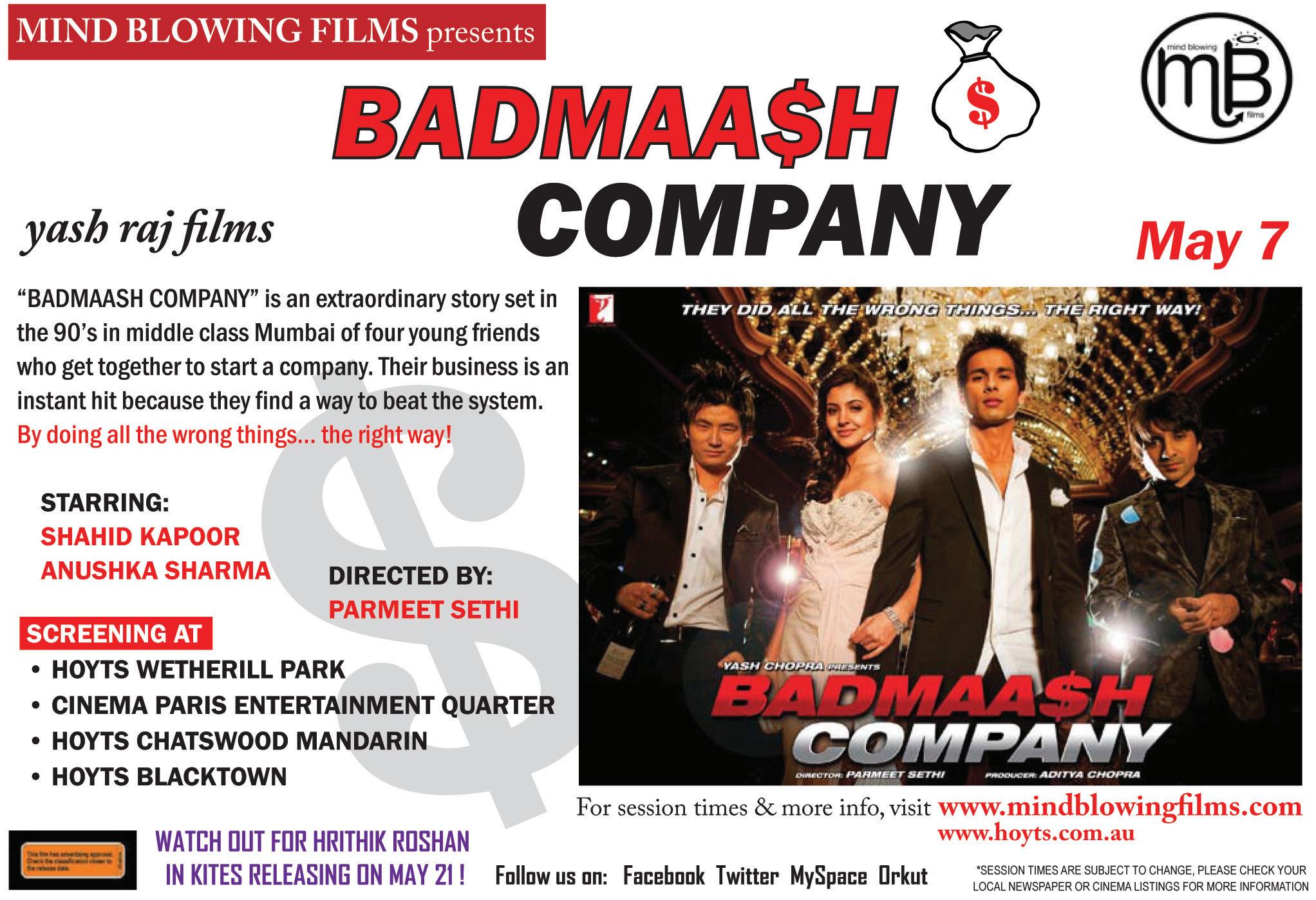
contact, with profile, can be made at raj2010syd@gmail.com
Saraswat Brahmin (Punjabi) boy, 29 years, 5’9” M.Sc Maths, B.Ed, good property in India, pure vegetarian. Looking for Australian PR / citizen girl. Caste no bar. Contact 0433 778 222 or email naresh2981@gmail.com
Australian citizen, 36 years, settled and working in Sydney as a professional employer. Seeking girl between 27 and 36, no caste bar. Please contact 0416 398 869 or for other details and photo mail me at satishsingh_2009@ yahoo.com.au
Seeking suitable match for Punjabi boy 27 yrs New Zealand citizen Height 5’11”. Working as an occupational therapist. Seeking bride under 26 yrs slim, sincere & pleasant personality. Contact aunty skapoor65@hotmail.com or ring 0401692546.
SEEKING GROOMS
Seeking professionally qualified and well settled match for 35/165 cm fair beautiful engineer, Australian Citizen girl working as project manager in IT in Melbourne. Please respond with complete details to seekalliance@hotmail. com or 0425405247
Wellsettled alliance invited for 26 yrs old Punjabi Hindu Brahmin girl, fair complexion, height 5’4. Family oriented, working in Sydeny, parents settled in India, brother’s family in Sydney. Send profile on vandikaushal@ gmail.com or call 0451371798.
Brahmin Iyer, 33/5’4”, I.T Manager with MNC seeks suitable veg, non-smoking Brahmin groom, 34 to36, willing to settle in Australia. Please e-mail biodata and recent photo to padrad888@ hotmail.com or contact 0414789004
Family seeking suitable professional match for a very attractive and intelligent Punjabi girl with strong Indian cultural and family values. She is 35, 5’10”, Doctor, permanent resident of Australia settled in Melbourne. Please contact with biodata and a recent photo at mail4rsk@yahoo.com or 0407901806 only if the boy is under the age of 42 and has never been married. Caste/cultural background no bar.
Seeking alliance for our 23-year old, 5’3” beautiful Sarswat Brahmin daughter. She is an engineering professional with strong family values. We have been settled in Sydney for 18 years. Please send your details and latest photo and horoscope at as76176@gmail. com
Sister and brother-in-law seek suitable groom for Gujarati Brahmin girl, professionally qualified. Family well settled in India. Seeking 26-29 year old, qualified match with strong cultural and family background. Please email biodata and recent pictures to Meghna.joshi@ato. gov.au or contact 0433 613 676.
Seeking clean shaven, professional alliance for our 27-year old, 157 cms Sikh daughter. She is a finance professional with strong family values. We are settled in Australia for many years. Please send your details and photo to matrimonial275@gmail.com
Seeking a suitable match for Panjabi girl 28 years (Aust citizen), 5’8”, fair, never married, working in Sydney. Seeking match with progressive and broadminded personality, preferably settled in Sydney, caste no bar. Parents currently live in Brunei. Send details and recent photo at mukeshrandev@hotmail. com or Tel: 00 673-233 4324 (Res).
58 <> APRIL (2) 2010 INDIAN LINK



APRIL (2) 2010 <> 59 NATIONAL EDITION




60 <> APRIL (2) 2010 INDIAN LINK Indian Restaurant for sale in Canberra - $89K Well established centrally located with good clientele. Urgent sell due to Owners moving overseas. Call : 0468 617 501
Cine Talk
A film with its heart in place
Film: Paathshaala
Cast: Shahid Kapoor, Ayesha

Takia Azmi, Nana Patekar, Anjan Shrivastava, Saurabh
Shukla
Director: Milin Ukey
If a piece of cinema ever had its heart in its place, this is it. Don’t let the sluggish pace, the absence of stylish shots and flamboyant frames fool you into believing that this is a film with no style. The style behind Paathshaala is in its inner conviction.
The obvious artlessness of presentation with the students and teachers of an imaginary school behaving with a bluntness that replicates the dialect of television talk shows rather than the realism of cinema, must not come in the way of our wholeheartedly acceptance of the film for what it is. An unconditionally sincere effort to understand why the country’s educational system pressurises children into performance anxiety.
While Basha Lal’s cinematography is free of poetic flourishes, the Ae Khuda track just sweeps you off your feet. That is not the effect this grounded and sensible film and its unhurried pace strive to achieve otherwise.
The storytelling is suffused with sensitive pockets. To cite some examples - in one sequence the veteran sports teacher (played ably by Sushant Singh) gets together students to climb on one another to make a human pyramid for the sake of media coverage. The callousness of the freelance journalist as he talks into the cellphone while the students sweat it out in the sun, smothers your cynicism about such manipulative drama in the narrative.
Elsewhere, a little boy (Dwij Yadav) is made to stand in the sun for not paying the school fees. And then that decisive moment where a crass ad-maker reduces a little kid (Ali Haji) to tears, just chokes you.
Best performance? From the crow
Film: Phoonk 2
Cast: Sudeep, Amruta
Khanvilkar, Neeru, Amit Sadh, Ahasaas Channa
Director: Milind Gadagkar
Phoonk 2 is definitely not the scariest film we’ve seen. Ram Gopal Varma’s terror theme has clearly run its course.

Perched somewhere between crowing (ahem ahem) about the supernatural and crying over the nerve-wracking disruption of domestic harmony by a ghost which just won’t go away, Phoonk 2 is like that promised
The music reality show agent, who auditions the school kids as though they are fish to be fried straight from the market, is almost caricatural in his grotesque commercialism.
Then you realise that real life has sold out to a kind of vulgar self-gratification that makes it look more like a soap opera than the soaps that we see on television.
There is an inherent wisdom in the homilies that Paathshaala serves up so sincerely. The narration is so laidback and detoxicated you often wonder if the director believes that the inherent harmony of real life can only be captured in leisurely grace.
Comparisons to Aamir Khan’s Taare Zameen Par are inevitable. Though flawed and at times failed, the overview of the educational system in Paathshaala is macro-cosmic in its own right.
The plot meanders into various issues that plague the educational institutions before negotiating itself into a clumsily ‘epic’ climax where the whole country’s media becomes interested in the politics of the school where the plot unfolds.
The unevenness of pace notwithstanding, there is no mistaking the film’s earnestness of purpose. Every actor, young and old, pitches an honest and transparent performance.
The stand-out (or considering the low-key pitch, should we say stand-in?) actors are Saurabh Shukla and Anjan Shrivastava. As for the children, let’s not discriminate among them. They are all utterly charming.
The film’s comment on the corrosion and corruption of education makes space for little-little flirty romantic liaisons among the older students. Cute!
As for Shahid Kapoor, the guy says his Hindi lines as though he just thought of them and expresses his connectivity with the kids with a warmth and effortlessness that makes the other superstar teachers on celluloid look rather put-on in comparison.
roller-coaster ride which gets aborted in the first lap because of a short circuit.
It’s not really Varma or his director Milind Gadagkar’s fault. It’s the nature of the material. Varma’s love for horror has never extended beyond there’s-somethingunder-the-bed kind of unwarranted foreboding that we all feel in a new environment. In a majority of his horror films, a family moves into a new haunted home and experiences the eerie.
Ironically, Varma’s best effort in the horror genre was Kaun where the victim of terror (Urmila Matondkar) was
stalked by unseen forces in her own home. The terror, it turned out was not under the bed, but in the mentally disturbed girl’s head. There wasn’t much terror, let alone horror, in Phoonk. Under the bed, or in the head. In Phoonk 2 the characters’ screeching plea to have us believe they are under immediate peril is sadly not communicated to the viewers. We remain tragically detached from the trauma of Kannada star Sudeep’s family. Haven’t we seen it all? By now the trademark Varma camera movements, here manoeuvred with emphatic energy by cinematographer Charles Meher, and the intricate cluttered but effective sound design by Jayesh Dhakkan and Jayant
Vajpayee do nothing to suck us into the plot. The technique remains unfastened to the characters. Their desperate attempts to get away from the supernatural remain desperately detached from the audience. At the end of the two hours into the zone of error-terror we are left wondering why Varma threw open a contest inviting any viewer to undergo an ECG to check his heart beats.
It is this film that needs a respiratory system. Varma’s last horror outing Agyaat with its spooky ominous wide-open jungles was far more gripping. In Phoonk 2, you wonder what the fuss is about. These people have nothing to fear except fear itself.
And yes, Varma was right. The crow does come up with the best performance. And that’s nothing to crow about.
APRIL (2) 2010 <> 61 NATIONAL EDITION
ENTERTAINMENT www.indianlink.com.au
Subhash K Jha, IANS
BUZZThe
ABHILASHA SENGUPTA brings us up-to-date on what’s hot and happening in Bollywood
Third anniversary for Abhi and Ash
Glam star couple Abhishek and Aishwarya Rai are set to ring in their third wedding anniversary in New York. Amitabh Bachchan confirmed this on his blog, mentioning that the couple was taking a flight to New York soon.
Said a source, “The two have gone to an undisclosed destination and will be back in time for the music release of Raavan soon.”
Abhishek too posted on his Twitter page: “...It’s Houdini time again. Have managed to abduct the wife. See you all soon.”
According to another source, the duo have been planning this holiday so that they could spend some time together after keeping busy with their respective shooting schedules.
Last year, the actors took out time for a week-long vacation while they were shooting for Mani Ratnam’s Raavan, which is among their most awaited films this year.
On their first anniversary, Abhishek was busy shooting in Miami for Dostana, but wife Aishwarya joined him there.
The couple were married in 2007 with much fanfare including a grand wedding ceremony in Mumbai. It seems that their third anniversary will be a much quieter, more intimate and more romantic one. Congrats to Abhi-Ash on three years of marital bliss!
What’s up with Freida?
The prestigious Cannes Film Festival in May will see the crème de la crème of the international film industry gathering together at one venue. And rubbing shoulders with superstars and industry talents will be our very own Mumbai girl, Freida Pinto. Starring in Woody Allen’s You will meet a tall, dark, handsome stranger, along with established actors like Naomi Watts and Anthony Hopkins, Freida will glide down the red carpet with her usual élan. But will she wear an Indian sari, speculate designers, who would love to see her in traditional attire.
Bollywood will be around as Mani Rathnam’s Raavan will make the rounds along with its leading stars Abhishek Bachchan and wife Aishwarya Rai. And Shekhar Kapur will be on the jury of the festival.
Freida has been frank about reports that she was contacted to play a Bond girl in the spy series movie, saying that she was too young to enact such a mature role. And naturally, the Bond girl needs to be more sexy, buxom and gorgeous than her, she says ruefully. Don’t worry Freida, you’ll get there in the end!
Shekhar Kapur pitches for Paani
Having worked with international stars like Cate Blanchett and Heath Ledger on his movies, internationally acclaimed Indian
Celina’s into comedy
If Akshay wears the king’s crown in comedy, Celina Jaitley certainly holds stake to the Queen’s tiara in the genre. The sexy actress made her debut into comedy with No Entry, opposite Fardeen Khan. After a couple of similar roles, she hit the jackpot with Golmaal Returns, playing the role of Meera. And now she’s set to sizzle with two more comic offerings in the form of Run Bhola Run and Thank You, working with the best directors in comedy, Anees Bazmee and Neeraj Vora. While other actresses have had to work on a comic routine, Celina seems to have taken to the genre like a duck to water. Sources close to the actress say she’s very excited about the two releases in which she has a ‘different’ role. So can Celina be officially crowned the Queen of Comedy? Let’s wait and see.

was going to drudge around complaining to myself about not believing in the scene I just wrote for Paani...I sat and it suddenly came to me. Something I had been wanting to do for a long time. A very long time! I picked the phone and called my agent and said I want to speak to Christoph Waltz, the amazing actor who won the Oscar for his performance in Inglourious Basterds,” Kapur posted on his blog recently.
WHO ?
A non-Indian beauty queen who has made it in Bollywood recently
(Find the answer under Caption Contest)

62 <> APRIL (2) 2010 INDIAN LINK
ENTERTAINMENT
“...And so that evening I spoke to Christoph and pitched him Paani. I told him the story and the world of Paani. I told him about the character I wanted him to play.
And he said he loved it. And we decided to meet to see how we can work it out etc.,” he added.
Waltz won the Academy Award for Best Supporting Actor at the 82nd Academy Awards recently for his portrayal of a Nazi officer in the Quentin Tarantino outing.
After having a word with Waltz, the 64-year-old didn’t take long to complete writing the scene.
“That evening I wrote the troubled scene in Paani. I had a great actor in mind so it suddenly got easier,” he wrote. Will Shekhar pull off a few awards with Paani? It’s likely. Let’s wait and see…
Is Anupam a good liar?
Veteran actor Anupam Kher, who runs an acting school called Actor Prepares, believes those who can lie can make good actors.
“Every human being has the capability to act. Anyone who can lie, can be an actor,” said Anupam in an interview. “But the journey between lying at home and lying in front of the public and in front of a camera can be taught,” he added.
Prior to the live audition and screen test of the Femina Miss India 2010 Bollywood Diva finalists, Anupam offered them a short training session and is quite impressed with some of them. Along with director Madhur Bhandarkar and filmmaker Vipul Shah, Anupam judged the acting and dancing skills of 18 finalists of the pageant.

“I don’t know who will win the crown, but there are a few participants who have the capability of being an actor,” said Anupam, who is keen to make a film with some of the participants.
“I would love to produce and direct a film with these participants. I didn’t judge them only for Madhur’s or Vipul’s film; if I need someone… there are lots of people among the contestants who are capable of appearing in the kind of cinema I make,” he said.
One of the eligible contestants will win a scholarship to his institute.
“We have a scholarship, which will be awarded to one of the contestants. We will give her three months of free training in acting,” said the actor who runs acting schools in Ahmedabad, Chandigarh and London.

He is looking forward to directing and acting with his son Sikander, but is still waiting for the right script. “I want to work with him (Sikander). I would like to find the right script to make the right movie, and I look forward to acting with him as well,” he said.
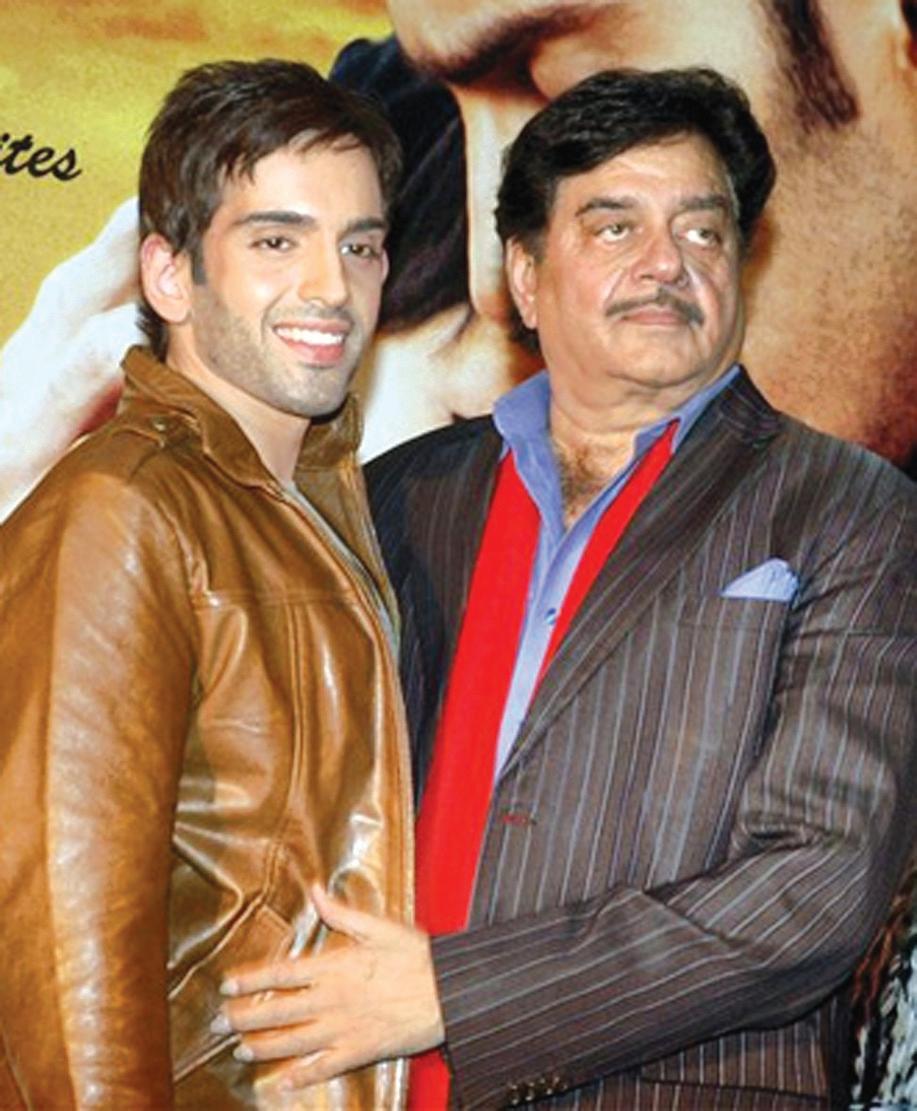
Now Anupam’s a fantastic actor, so does that mean he’s a great liar too? What do you think?
Housefull is full of languages
Akshay Kumar, the acknowledged King of Comedy in Bollywood is set to have the audience in splits once again in Housefull, a romantic comedy with three luscious ladies for company. Lovely Lara Dutta, glamorous Deepika Padukone and gorgeous Jiah Khan will sizzle on screen, not just with their stage presence, but also with their use of languages. Lara will speak Gujarati in the flick, Deepika will flaunt Telegu and Akshay himself will give voice in Punjabi. To add to the excitement, Jiah Khan and old-timer Randhir Kapoor give Sindhi a go. Riteish Deshmukh opts for the Marathi of Mumbai, to keep the home team happy.
Director Sajid Khan has outdone himself
in an attempt to cater to all kinds of audience, within India and overseas, but how far his attempt at linguistic humour goes is anyone’s guess.
Akshay however, remains unworried. With hits like Heyy Babyy and Singh Is Kinng under his belt, the hunky actor is sure to rely on his fine sense of comic timing to raise a few laughs. Rumour has it that the story revolves around Akshay who is considered unlucky, but tries to change his luck by searching for true love. And with the help of his glamour girls, we can all expect a happy ending, especially as they strut their stuff in bikinis. That should be worth watching, even if the film’s a bomb! Good luck, Akshay, in any language you choose!
Kites ends in tragedy?
Much speculation continues about Kites, which is due to release soon, and it’s not just for the sizzling hot scenes between sexMex Barbara Mori and apna Hrithik Roshan. Bollywood is buzzing that the climax of the movie ends in tragedy, with Hrithik and lady love committing suicide, pretty much like Qayamat Se Qayamat Tak, the Aamir Khan starrer. Sources reveal that at the end of the flick, hunky Hrithik and Barbara are fugitives being pursued by law enforcing agencies. And when they realise that their lives will forever be embroiled in a cat-andmouse chase, they decide to give it all up. Apparently it’s easier to jump off a cliff into the sea instead of living separate lives. The only one alive and worth mentioning is Kangana Ranaut, who is the third angle in this love triangle. Now methinks this sounds suspiciously like a sequel setting. I won’t be surprised if Kites 2 is on the cards, with a resurrection theme. Such is
Mumbai’s the hot theme for new releases
Most Bollywood movies release on a Friday, but there was something special about this one. All the releases on this day revolved around Mumbai, in some Apartment, City of Gold, Bird Kuchh Kariye and Muskurake Dekh – all have Mumbai as the backdrop for themes varying from the space crunch in the city to organised crime and even an animation flick. In Apartment, director Jagmohan Mundhra portrays a “contemporary story, set in today’s Mumbai” where people share room with complete strangers “because of the space crunch and the steep real estate prices”. The movie stars Rohit Roy, Tanushree Dutta and Neetu Chandra.
City of Gold is a no-holds-barred look at the birth of the city’s underbelly and organised crime. Director Mahesh Manjrekar, who also plays an important role in the film, highlights the plight of Mumbai mill workers who sacrificed a lot so that the 21st century Mumbai of swanky malls and glittering multiplexes could be built.
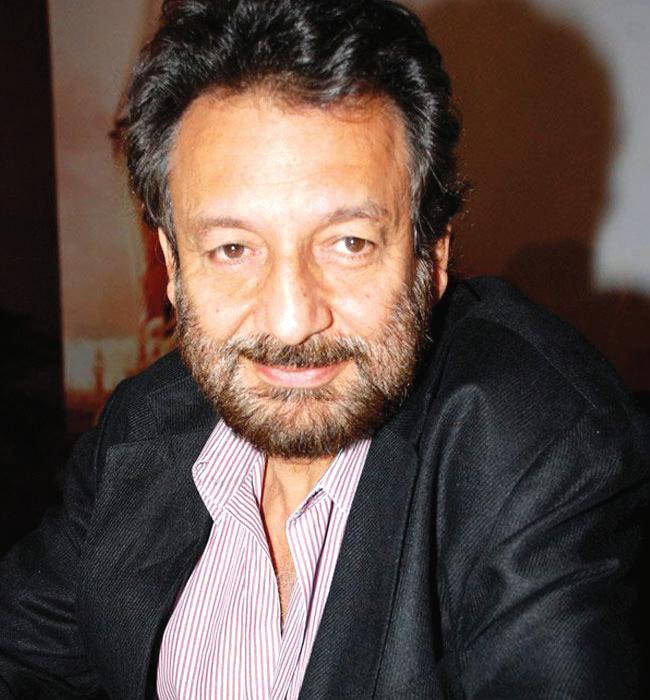
Bird Idol, on the other hand, is an animated laugh-riot where the birds of Mumbai are as human as the people who inhabit it. Director Jyotin Goel, who made Sanjay Dutt-starrer Safari, narrates how birds go to school, watch TV, go out on dates and enjoy reality shows, especially a musical show known for making overnight stars.
Bird Idol has voice-overs by Juhi Chawla, Shaan and Kailash Kher. Kuchh Kariye, produced and directed by Jagbir Dahiya, deals with the current socio-political scenario. It’s the journey of a man meeting his destiny and coming to terms with himself in Mumbai, after he is forced to leave his hometown. The film also marks the debut of singer Sukhwinder Singh as an actor. It also stars Vikrum Kumar, Rufi Khan, Shriya, Surendra Pal and Mukesh Tiwari.

Muskurake Dekh Zara is the story of a young man who drives from his hometown to Mumbai after an embarrassing incident, and finds love in the city. A story of emotions and disappointments in love and life, the movie is about winning back one’s zeal with an upright attitude and ability to put people in their place after moving away from home. The film will launch debutantes Gashmeer Mahajani and Twinkle Patel. Well, they may not be mega-starrers and boast huge Bollywood names, but these movies are all ‘Made in Mumbai’, which is good enough for me! Let’s hope they make
What’s Arjun Rampal crying about to SRK?

Last issue Caption Contest winning entry
What’s dad Shatru thinking as he introduces his son Luv?
Shatru: I don’t care if you become No.1 or not, but better make sure you’re more successful than Abhishek, Hrithik, Shahid, Ranbir or any other star-son out there, or else…
Purav Pathak, Chermside West, QLD
Purav wins one free ticket to new Hindi film Badmash Company
Another good one
Shatru: “Baap to mashaallah, par beta toh subhaanallah!”
Maushami Chand
APRIL (2) 2010 <> 63 NATIONAL EDITION
www.indianlink.com.au
SHEKHAR KAPUR
CAPTION CONTEST
GUESS WHO :ANSWER Jacqueline Fernandez
FREIDA PINTO
Send in your responses to info@indianlink.com.au and win a surprise prize
ASH-ABHI
JIAH KHAN
How could he do what he did?
Dear Auntyji
We came to Australia from Canada about 15 years ago. In that time, we lost touch with some very good friends of ours. Last month, I went to a wedding and I ran into an old friend from Toronto. She was very happy to see me and so was I. We talked for ever, but the sad news is that my friend’s husband left her a few years ago for another woman. I was very sad and disappointed to hear this. Now my friend’s husband is coming over in two weeks’ time to visit us, and I am quite uncertain as to how to behave towards him. I mean, how could he leave his wife and children? Has he no shame? And I feel that I won’t be able to act the way I usually did when we used to spend time together at parties, get togethers, etc. What do you recommend I do?
Auntyji says
I am always surprised to read about how judgmental people really are. My stance on this is that most people do not have enough self esteem to realise that everyone makes choices in life - right or wrong and we have absolutely no right to judge anyone, unless of course, they happen to kill someone we really love.
Now, about your friend. Unless he has grown horns on his head and has hooves instead of feet, I suggest you treat him exactly as you would have 15 years ago - like the dear friend he and his wife were. So what if this guy left his wife and children - would you know why he did that? He could have a hundred reasons for doing what he did. First, you have no right to know any of the gory details, and second, you have no right to judge him.
Unless you were the third party in that marriage, you really shouldn’t decide whether he was right or wrong to leave. That’s for him and his ex-wife to sort out. And as for shame? Well, I ask you dear lady, how would you like it if people asked you if you had no shame for ... wearing the clothes you do, or because you are strict with your children, or you prevent your husband from going to the club with some friends. Mind your own business, and
Ask Auntyji
show your friend some sympathy. I’m sure he left for valid reasons - and even if he didn’t, don’t judge him. So treat him like a friend.
On pre-teen make-up use
Dear Auntyji
My 12-year-old daughter insists that she be allowed to wear makeup. She says all her friends wear eye-liner and lipstick and blush and even eye shadow - therefore she should be allowed as well. I am tired of hearing her ask for it over and over and over. Do you have any nuggets of advice for a tired mother?
Auntyji says
Eye shadow at 12? Lipstick at 12? Oh, do I have a nugget for you or what? Say no to your daughter. Twelve is ridiculously young to be wearing make up - and you should put your foot down and say no. You can tell her that - that she is too young to wear make up. Make up on young girls is a pet hate of mine - so let me get on my soap box for a short while.
The problem with middle class people is that they do not think. Through our actions (or lack of them), we indicate it’s absolutely fine for our young daughters to be sexualised at an early age - with what they wear, how they dance, how they carry on with friends. Childhood is an extremely short period in one’s life, and it should remain that.
Childhood is not meant to be a dress rehearsal for adult life, where young girls dress provocatively to appear older than they are in order to get inappropriate attention. And they will
Bad luck, or bad attitude?
Dear Auntyji
Two months ago, I lost my job. My supervisor said I had attitude problems, but I know that it’s because they were racist. I then had a fight with my sister-in-law and now she has stopped talking to me. I feel sick a lot of the time. There’s a lot of bad luck in my life. What should I do?
Auntyji says

get that. That’s why I’m completely against beauty contests and talent shows where we have these strange half-girlhalf-women 10-year-olds wandering around looking like midget women. This is unsettling to observe, and why parents can’t see this is beyond me. On the one hand, we allow our daughters to run around and dress like they’re 30, than when they get negative attention, we completely take no responsibility for their actions. So tell your daughter, no, she cannot wear make up until she is at least 15. And stand by your ground. Of course, if you have raised your daughter well, which I hope you have, she will listen to you. If you are a parent with no control over your 12-year-old, then your daughter will probably wear make up at school etc, behind your back. In this instance, you will have failed as a mother because the last time I looked, a 12-year-old raised well was supposed to do as parents said. Now, if on the other hand, you think I’m an old nag with no understanding about what is fashionable today, well, let me tell you that watching a 10-year-old gyrating like Britney Spears and Gwen Stefani is disturbing. So I don’t need to be fashionable and trendy to know what’s right and wrong. Of course, I’m not so old that I am set in my ways. So, as a compromise, let your daughter wear lipgloss or eye liner like kajal.
There’s nothing wrong with this because lip gloss is protective and kajal is ... who am I to prevent pretty young things from using kajal. Good luck. And remember, you are the mother, so stand your ground.
Hmm, I asked Uncleji for advice, seeing that he is the king of astrology and has the planetary influences on our lives all worked out. Let’s see what he has to say.
“Because Mars is your ruling planet at the moment, it brings with it the turmoil and confusion that Mars is famous for. Wear red on the 17th of May and try to avoid eating chillies for the next two weeks - because they will create an abundance of fire in your system. Think calm thoughts and all will be well. By the end of June, Mars will have moved on and your planetary system will all be aligned and in order”.
What the … ? Obviously Uncleji must have forgotten to add the coke to his nightly bourbon and coke drink, because his advice (with all due respect to Uncleji) is a bunch of baloney. Mars indeed. Forget about the planets and think about yourself. What did your supervisor mean when he said you had attitude problems? Did you clarify? Did you ask him to clarify? Surely such a sentiment is enough to warrant an explanation. Lady, I’m getting the distinct impression that the planets have nothing to do with your spate of bad luck - it’s more a case of what have you been doing lately. And what was the fight with your sister-in-law about? I’m seeing a common factor here, and it’s not Mars or Jupiter - it’s you. So until you take responsibility for your actions, I can’t really help you. Write back and give me more details, why did you leave work, what do you mean about your colleagues being racist, and what was the tiff with your sis-in-law about. Then maybe I can help you. And as for not eating chillies, well, you can eat as much chillies as you want - your lack of good luck in life has nothing to do with mirchis.
64 <> APRIL (2) 2010 INDIAN LINK
Do you have a question for Auntyji? Send it in to GPO Box 108 Sydney 2001 or email it to info@indianlink.com.au
BACKCHAT www.indianlink.com.au


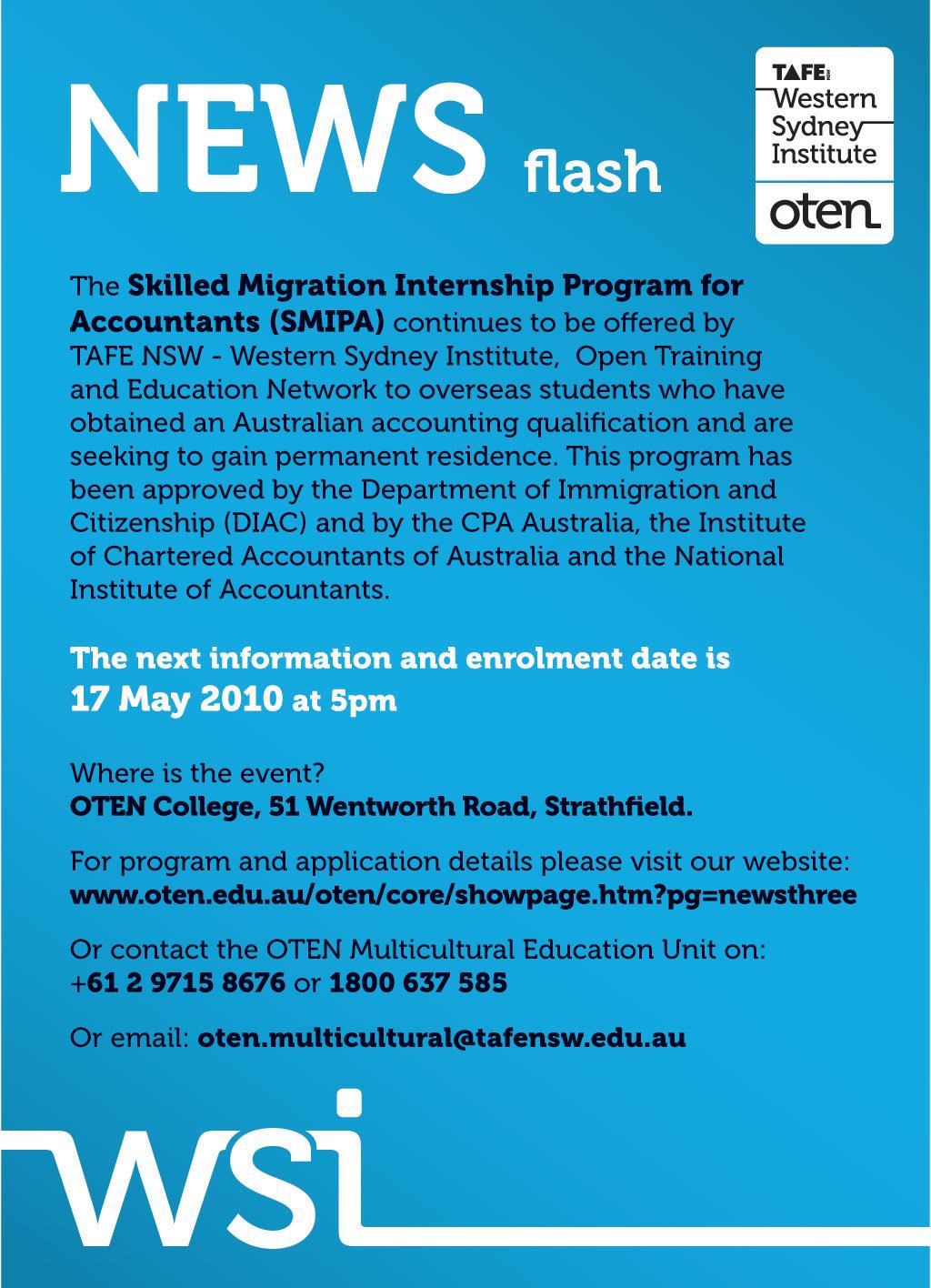
APRIL (2) 2010 <> 65 NATIONAL EDITION


66 <> APRIL (2) 2010 INDIAN LINK 50

APRIL (2) 2010 <> 67 NATIONAL EDITION

68 <> APRIL (2) 2010 INDIAN LINK




















 Preeti Kannan
Preeti Kannan




























 Malavika Santhebennur
Malavika Santhebennur








































































 BY GRAHAM SIMS
BY GRAHAM SIMS


























































































